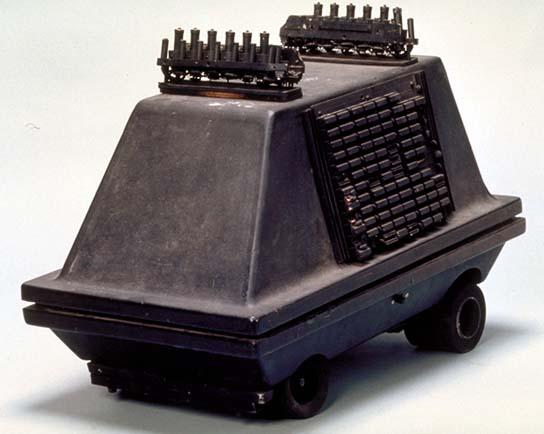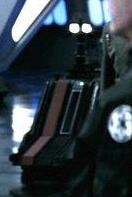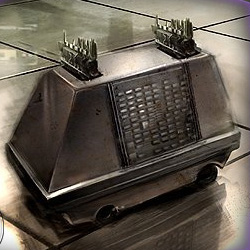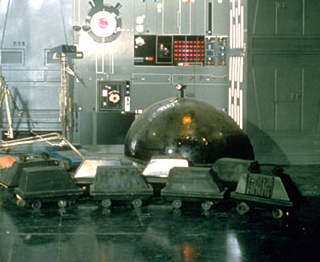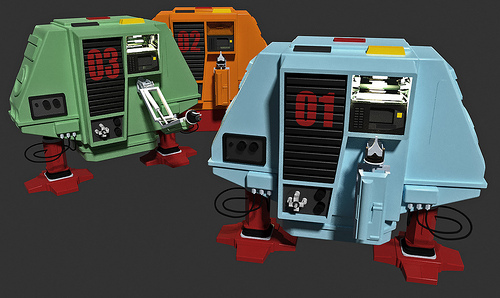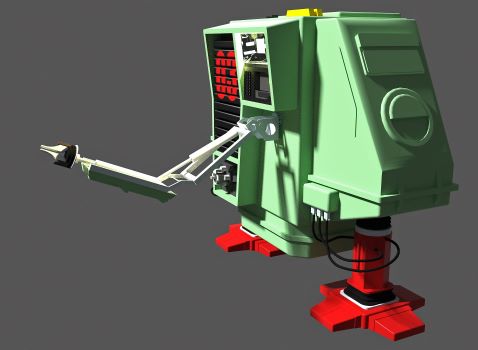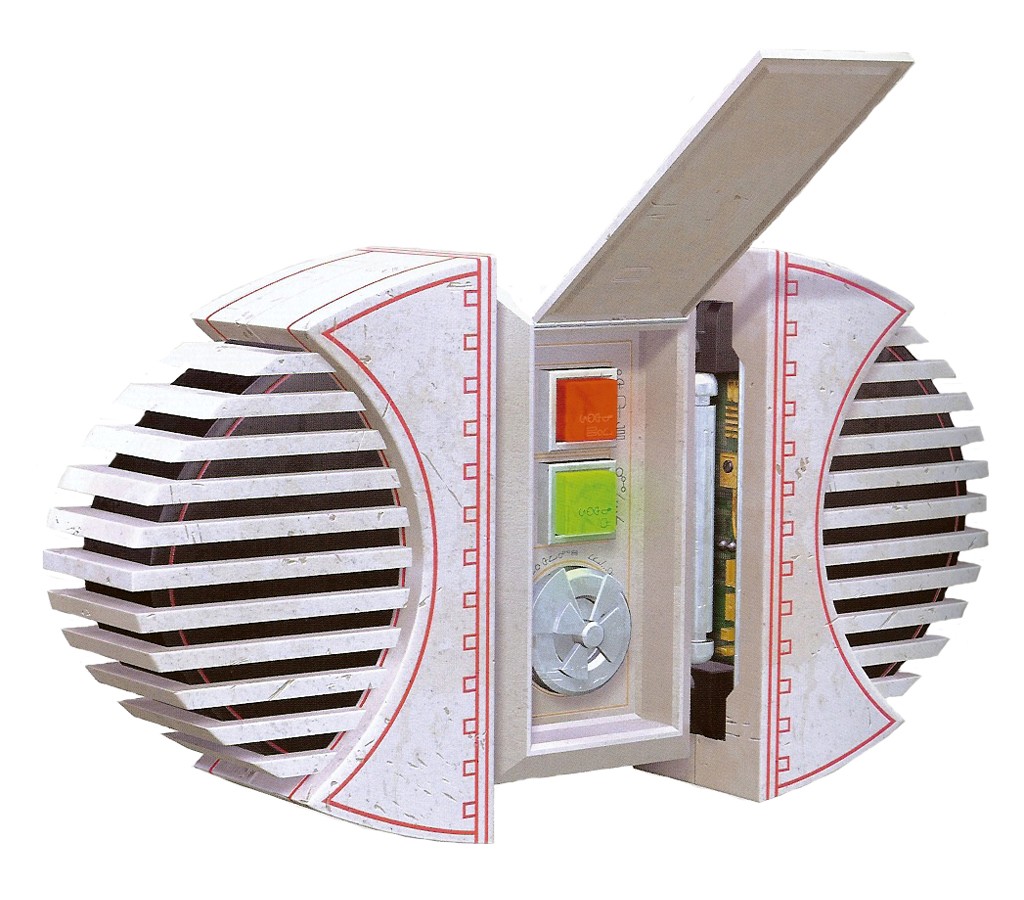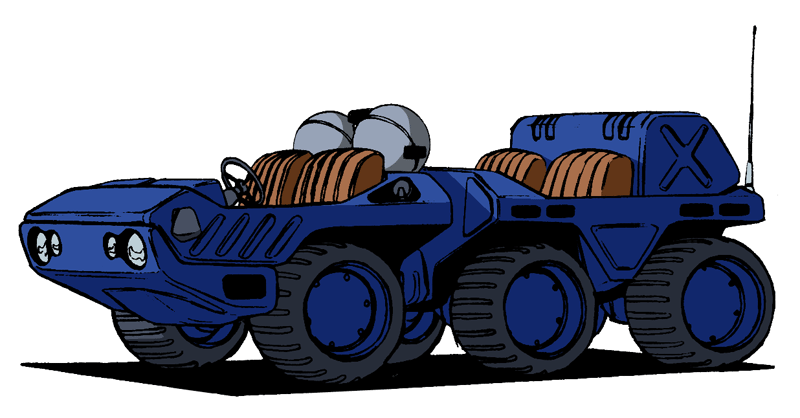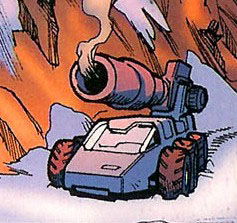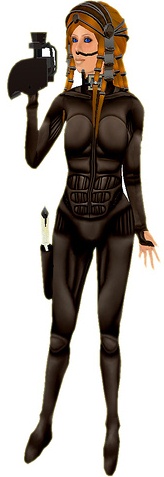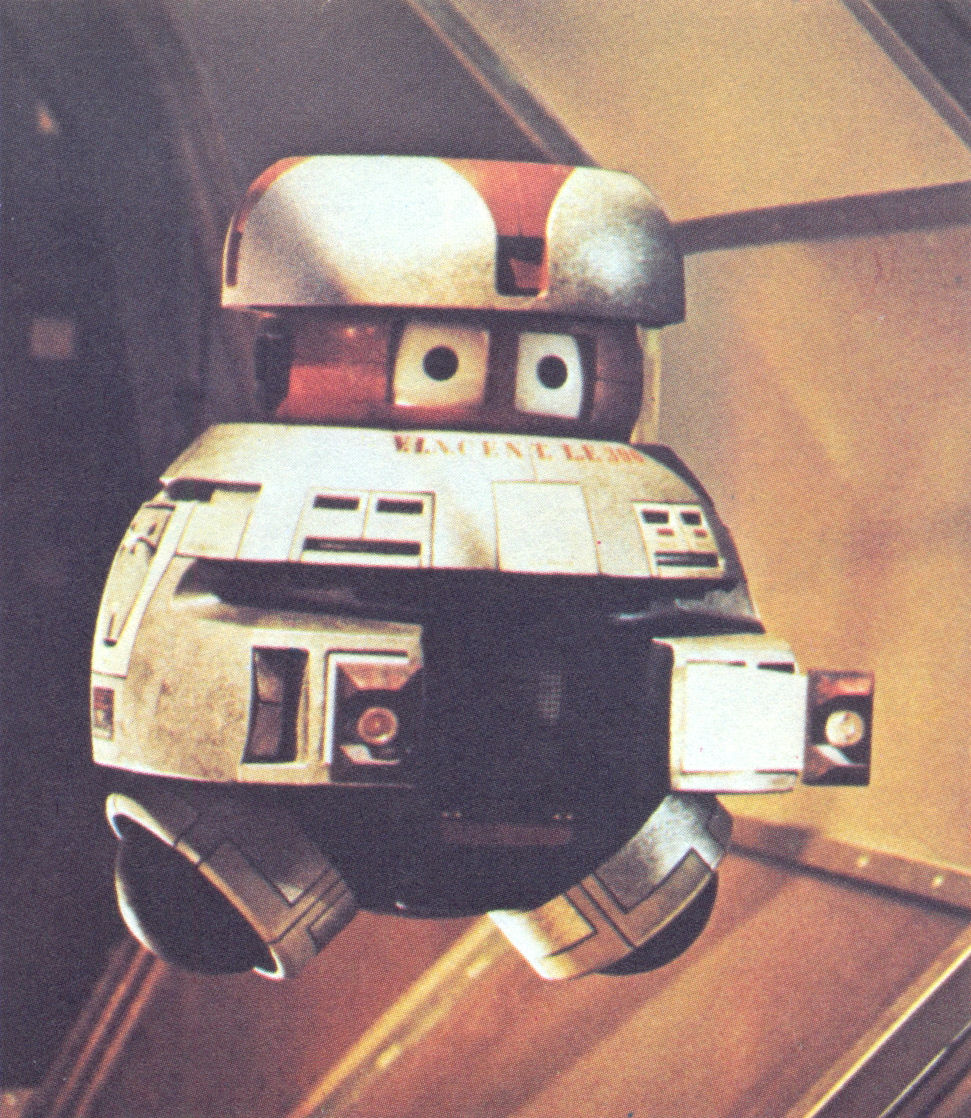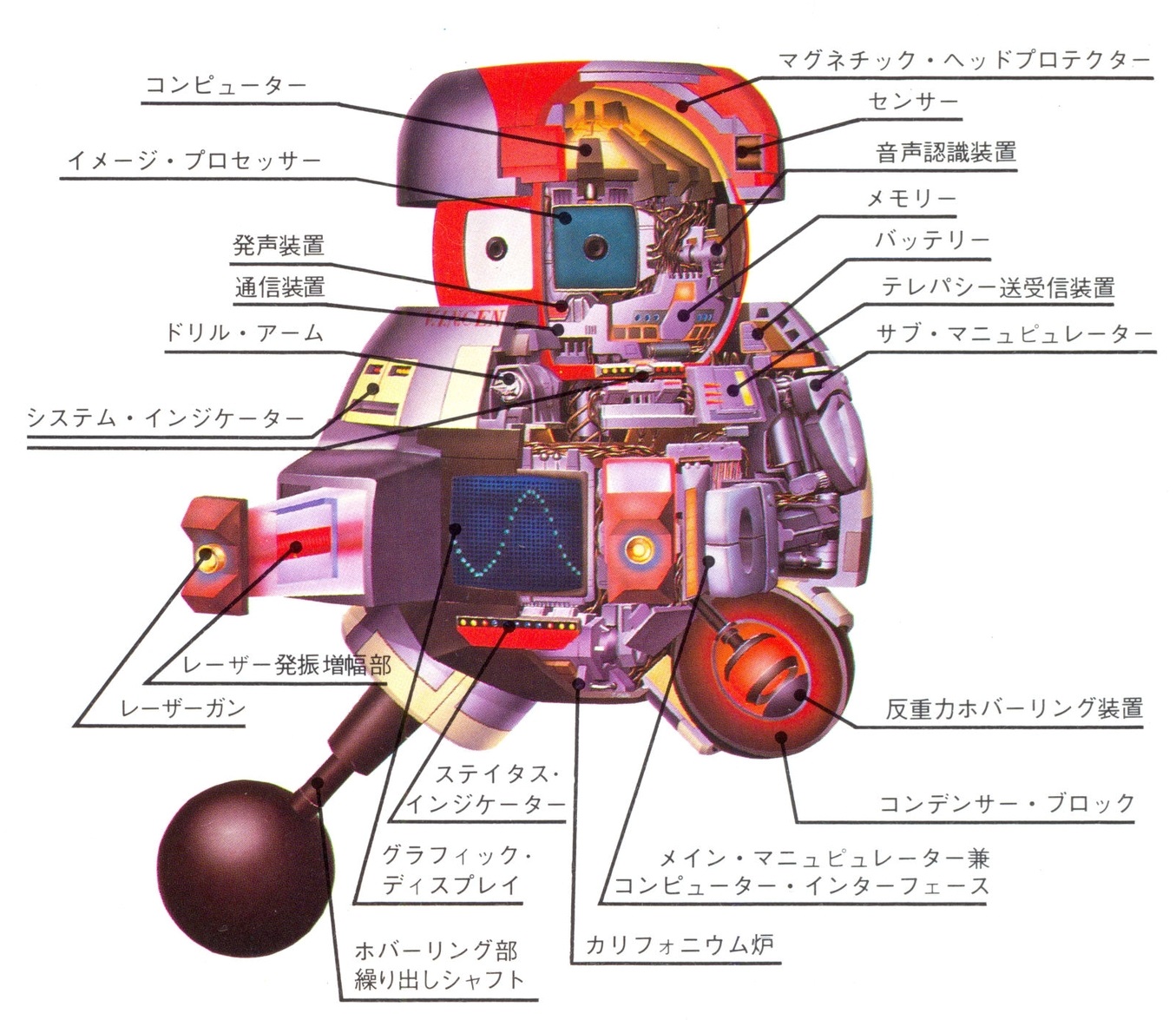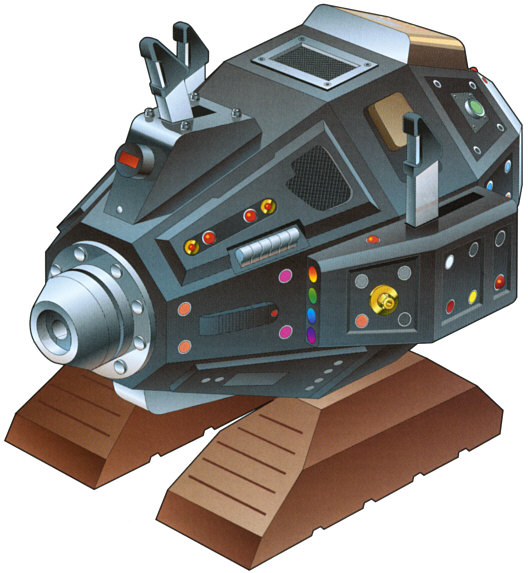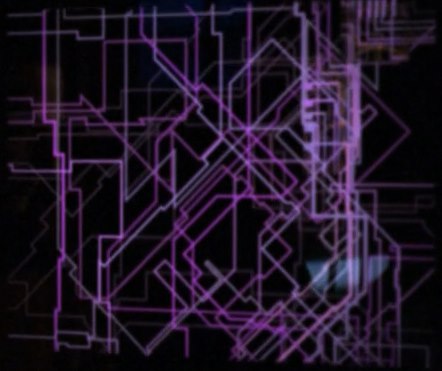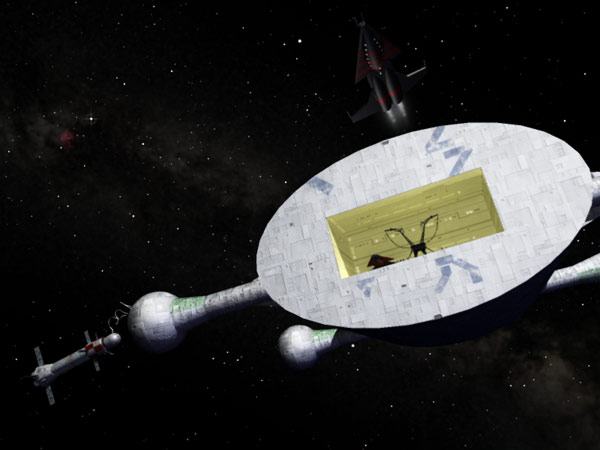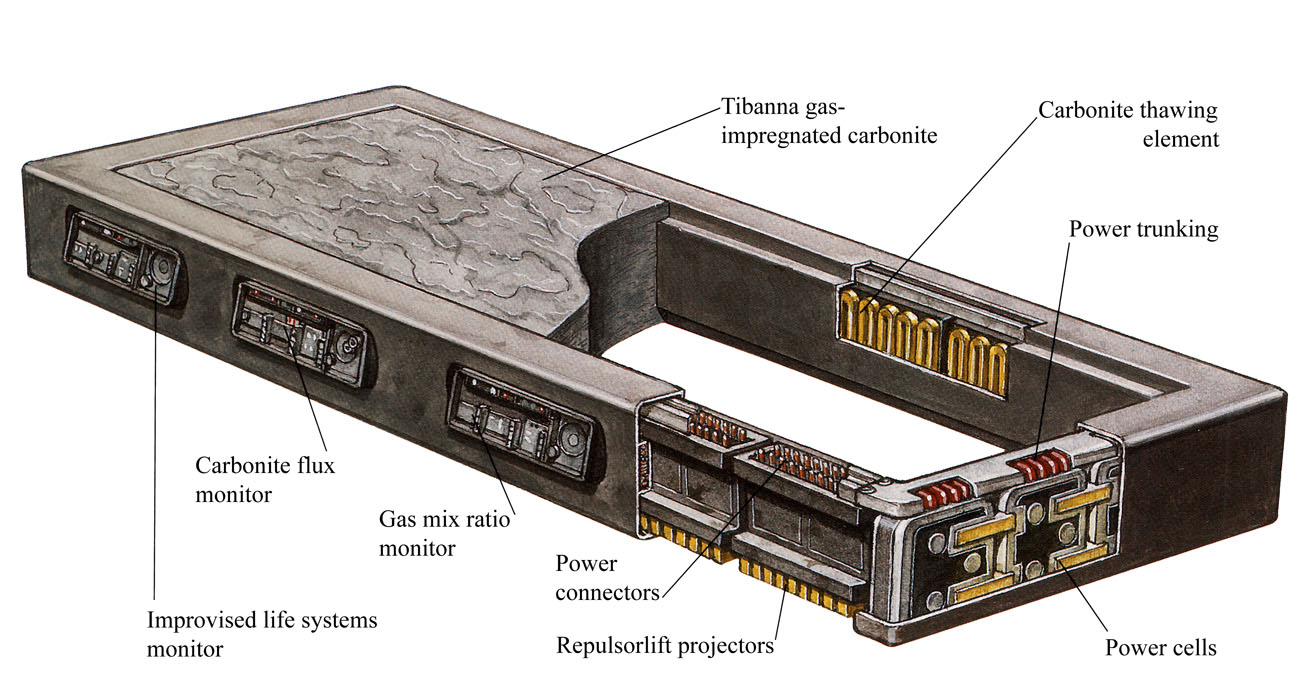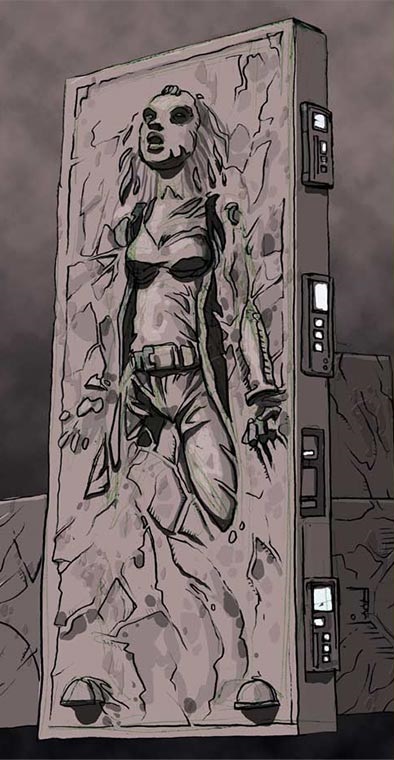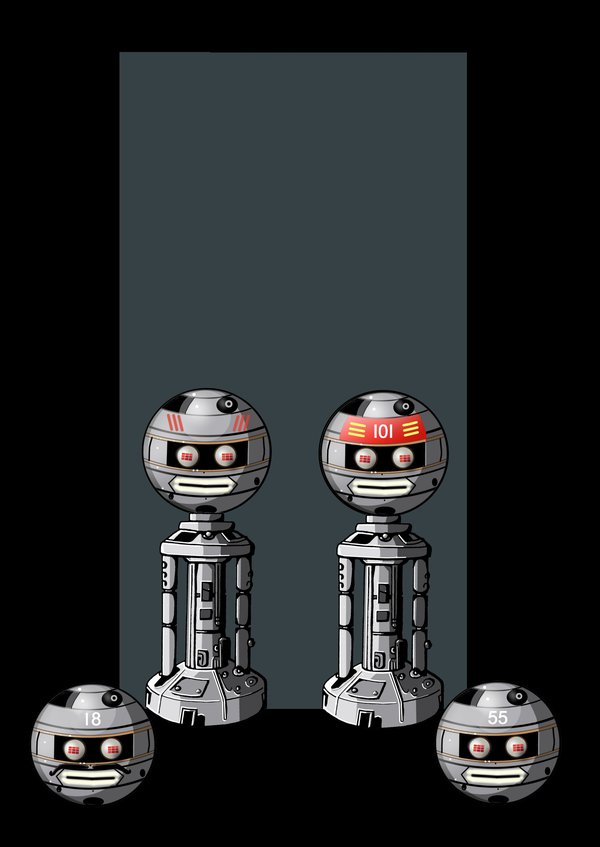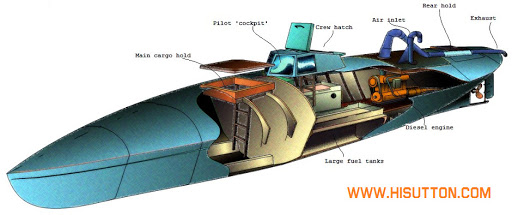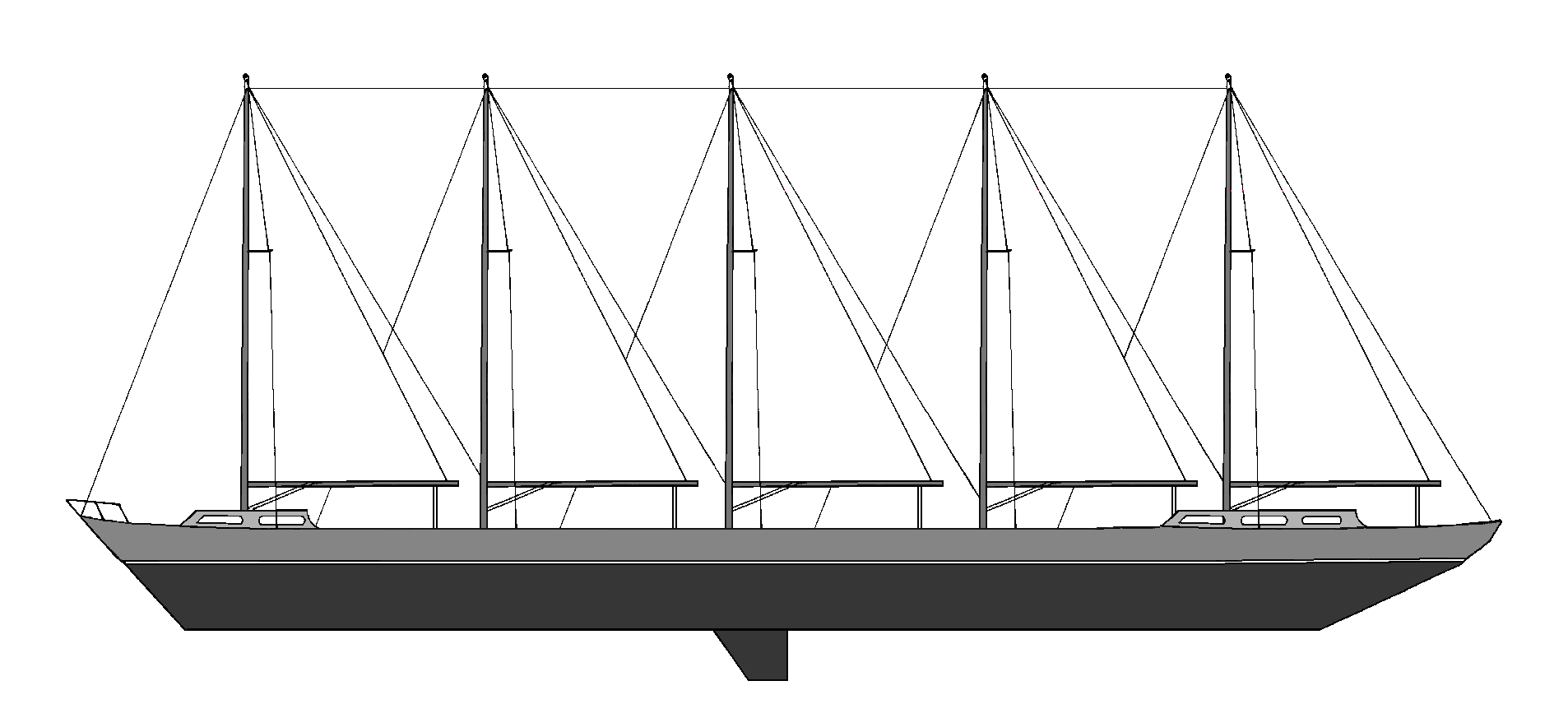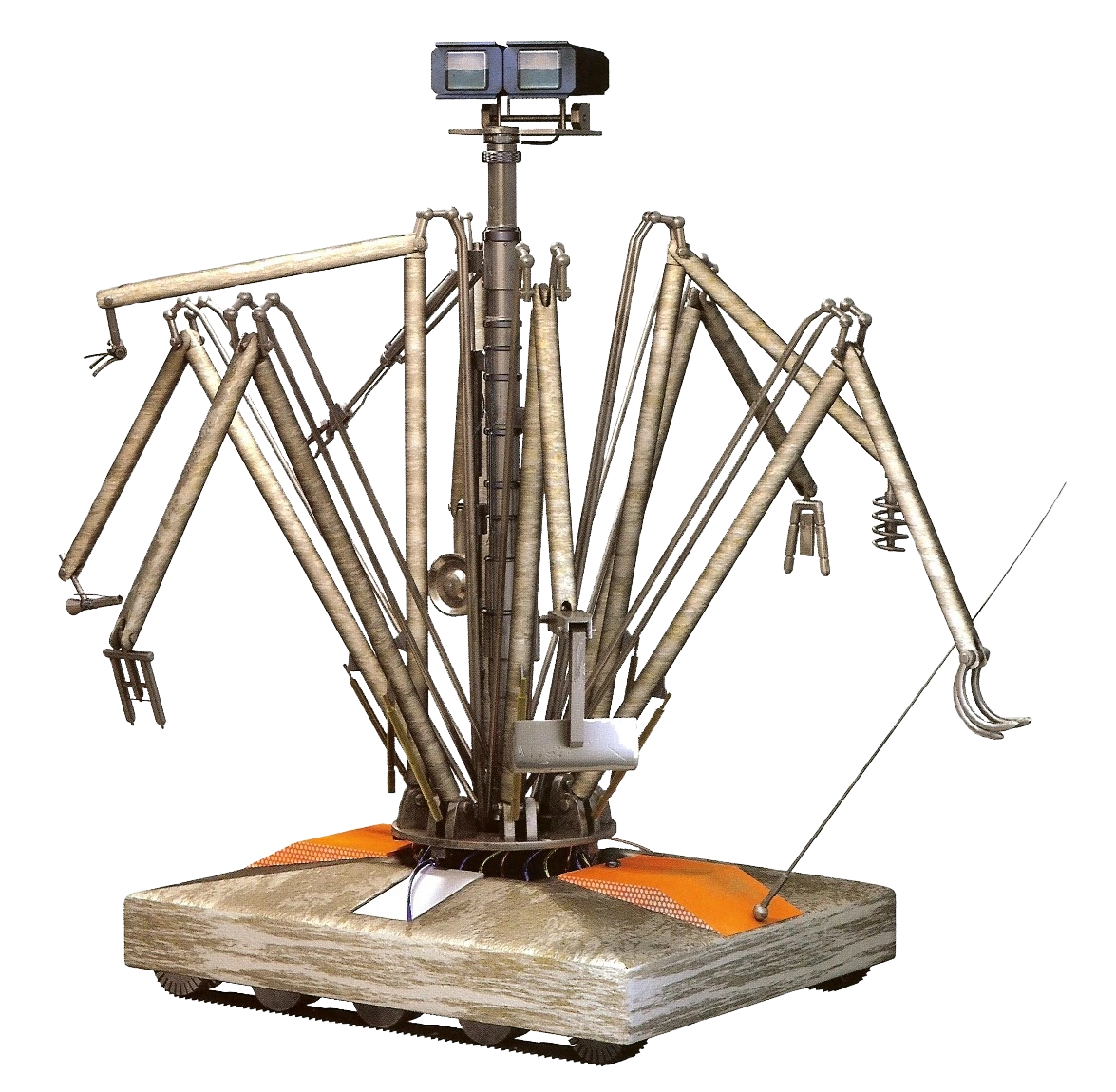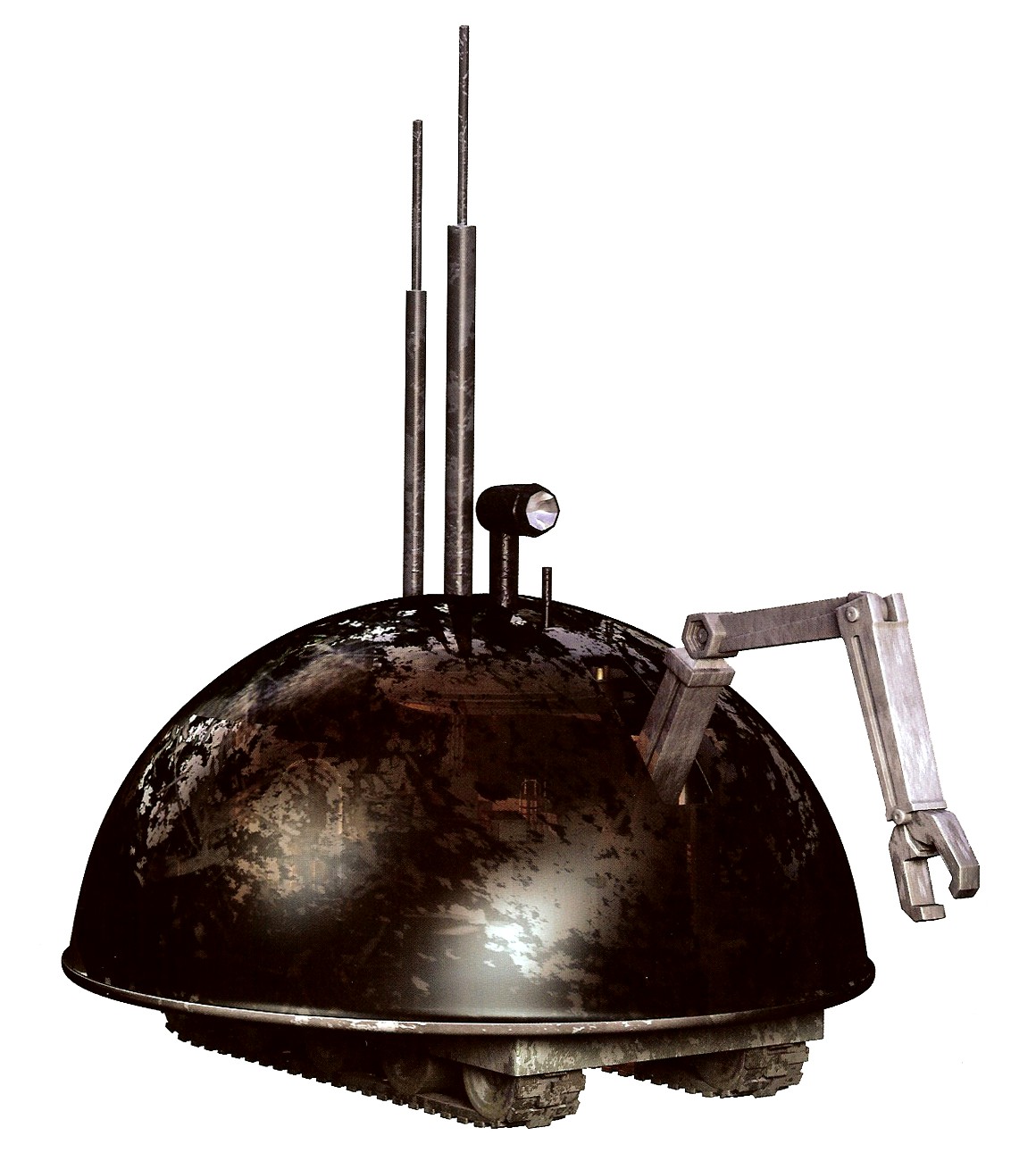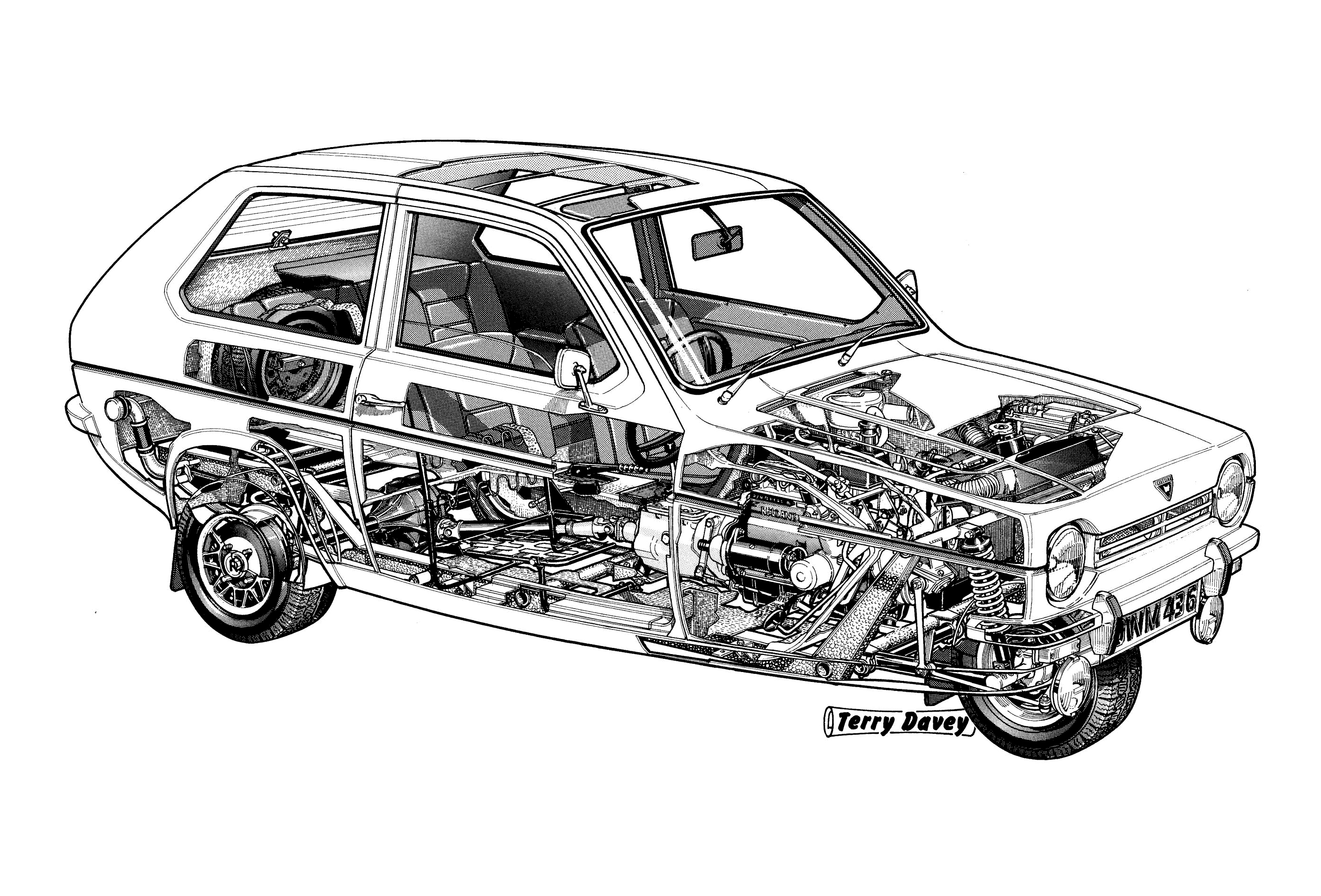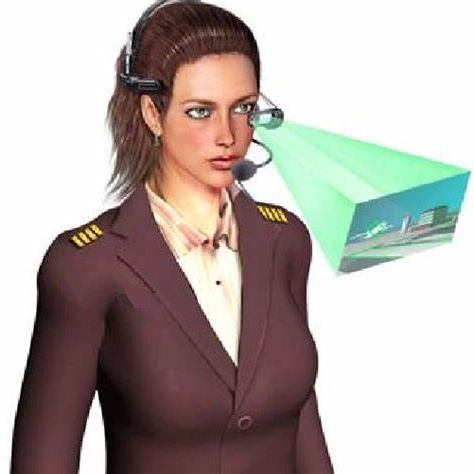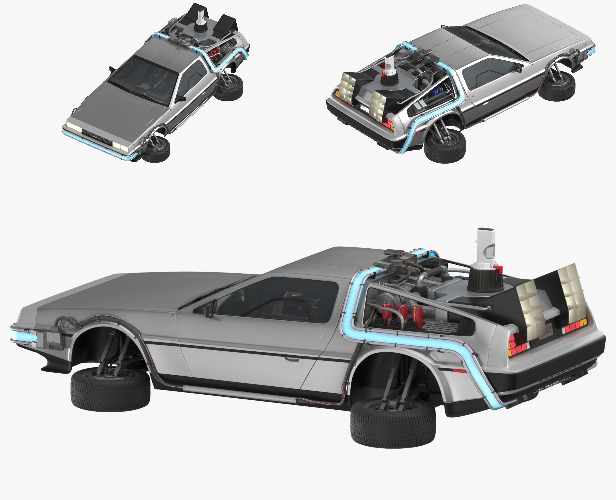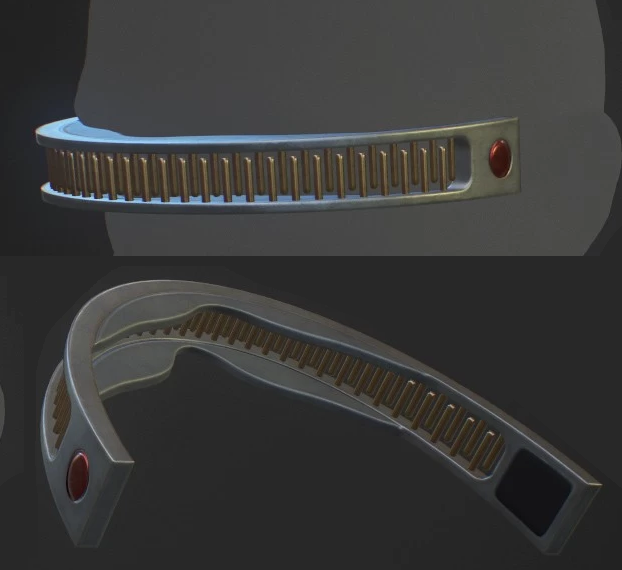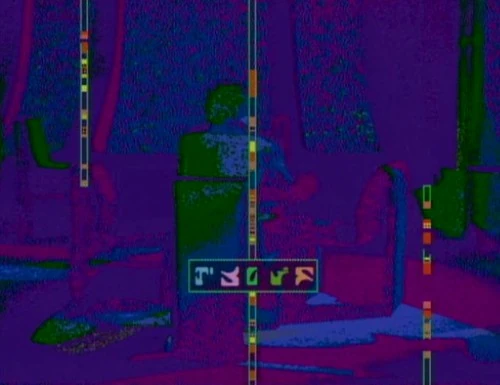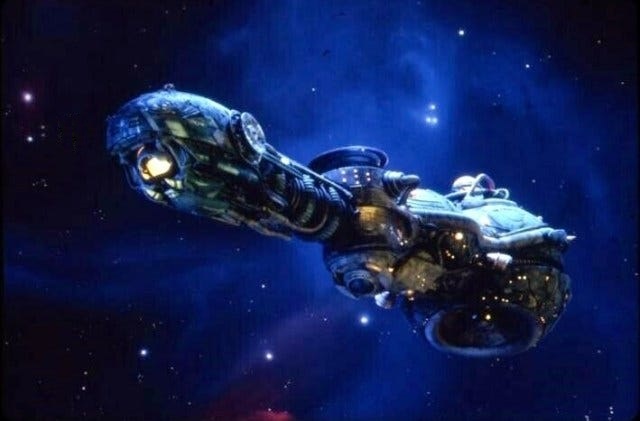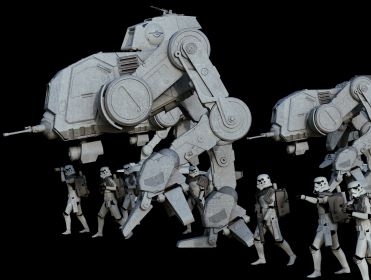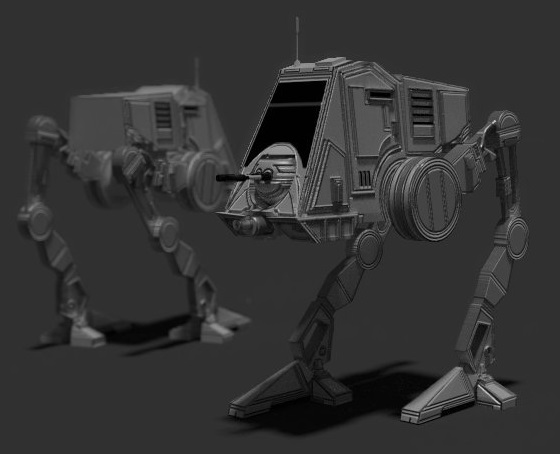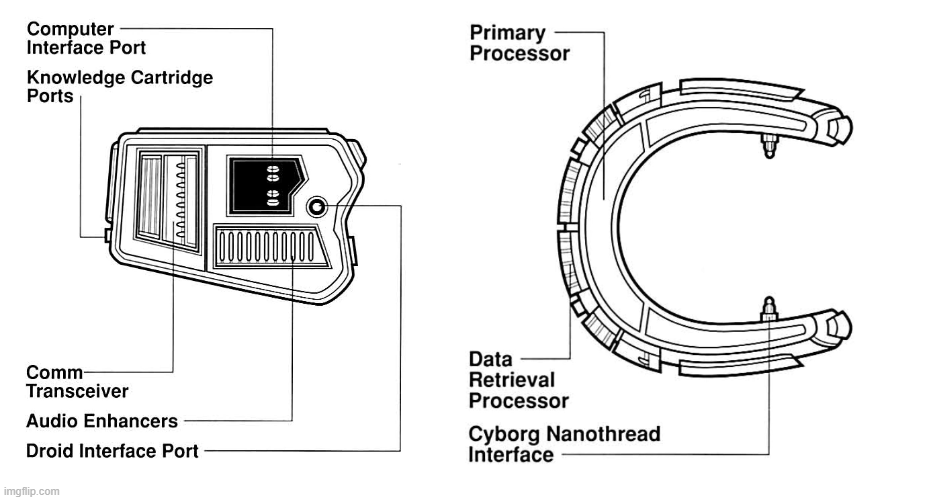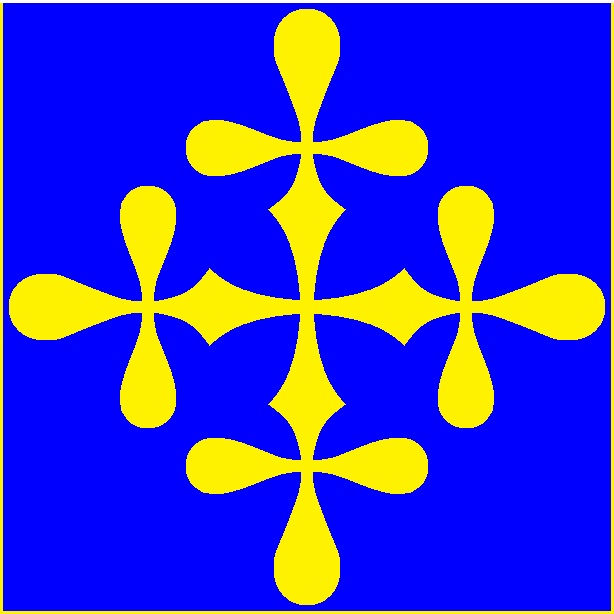 United Galaxies Council. |  United Galaxies Council. | ||||||||||||||||||||||||||||||||||||||||||||||||||||
|---|---|---|---|---|---|---|---|---|---|---|---|---|---|---|---|---|---|---|---|---|---|---|---|---|---|---|---|---|---|---|---|---|---|---|---|---|---|---|---|---|---|---|---|---|---|---|---|---|---|---|---|---|---|
| Not 'every' system in the UGC requires such extensive background as, say, Mecha. Many are listed here. Due to the ever-expanding nature of this file, no specific order nor equipment type breakdown is possible at this time. | |||||||||||||||||||||||||||||||||||||||||||||||||||||
|
IT-O Interrogator.
FX-7 'Fixit' Medical Assistant Robot. MOT-4 Medical Observation Table. 21- Bravo Medical Robot. Bacta and Rylca/Bacta Tanks. G&K-8 Gonk Power Drone. R-Series Astromech Drone. GX-8 Water Vaporator. REF/RDF Hovercycle. Moeller Skcar. Com-Scan. VXI-3 Electroscope. Holoprojector. NiteSite Infrared Motion Sensor. Tractor Beams. Bailey Bridges. Marsden Mats. Hypercarbonates. Waste Allocation Lift Loader, Earth-Class (WALL●E). MSE-6-Series Repair Droid. TWKE-4 ("Twiki")/Theopolis Upgrade Kit. D-31 Series Drones. Personal Energy Shield. GN M-3002 Low-Gravity Vehicle. ML-3 Forklift. Stillsuit. Restraint Collars. Stun Cuffs. VI.N.C.EN.T. Series Drones. Schwartz Rings. Hootches. |
Vehicle Maintenance Energizer.
Exocomp Repair Robots. Terran Militry Skybase. Carbonite. Zeriods. After Burner Gum. Oubliette-Class Smuggling Boat. The Renada. WED Treadwell Repair/LIN Mining Robot. Mentants. Rakatan Droid. UGA Reliable Transport ("Reliable") or Relaint. Smart Glasses. Bylor Buildings. Emmet BROWN'S "Time Machine."; Backstep Program Interceptor. Tripole Structural Members (Masts And Towers). Lembas Bread. Tricorder. Visual Instrument And Sensory Organ Replacement (VISOR). Tricom Badge. UGC Standard M-14 And M-16 Turrets. Cemuh Drive. AT-PT. Dual-Phase Aeration Covers. Phase Cloaking. AJ⁶ Cybernetic System. Clogs. MLC-3 Mobile Light Laser Cannon Tank. Mutatos Or Mutatoes. Mackinaw-Class "Gunboat." | ||||||||||||||||||||||||||||||||||||||||||||||||||||
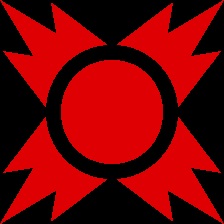 The Emblem Of The Syhith. | 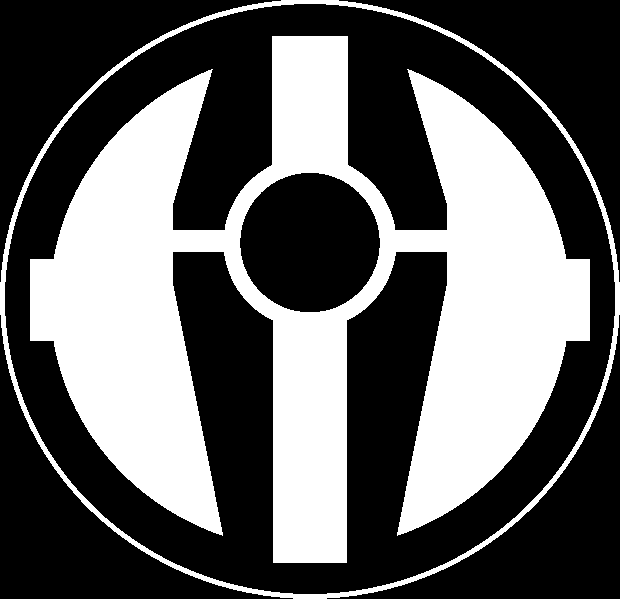 Palpatinian Syhith Order. | ||||||||||||||||||||||||||||||||||||||||||||||||||||
In service for hundreds of years, the IT-O was allegedly designed by the Ancient Empire as an interrogation drone employed by the Security Bureau. They are hovering drones similar in appearance to a remote, about a foot and a half in diameter, with v Characteristics The drone is generally successful in getting information from prisoners using elaborate and scientific torture methods. First, it would inject the prisoner with a mentally disabling chemical that would decrease the pain threshold, while also forcing the subject to remain conscious. IT-O would do a read on the body, detecting the most sensitive areas like the genitals, joints, neck and many other less obvious body parts. A single torture session would usually last well over an hour. The drone had a recorder to record the entire process, in case any information was lost in the screams of the prisoner. History As already explained, the IT-O was originally developed by the Ancient Empire purely as a torture device- Interrogation was an unfortunate beneficial side effect. (The rare surviving records show most interrogators preferred not to use them, because they'd develop more information from the interrogation. No clear idea of why this would be so has ever been discovered.) As the Ancient Empire collapsed, a few dozen of these devices fell into various hands, not all of them good people; Most eventually found their way to one criminal faction or another. However, the Geh 'Dia got several, and a full set of blueprints, technical manuals, etc (they refuse to discuss how, exactly). Though the Geh 'Dia claims they refused to use them, they admitted that they did keep IT-O's available and in working condition- When they joined the UGC, five working units and copies of every single piece of documentation were handed over to REF Marines for transfer to the Council for 'final disposition' (to be copied and used). Capabilities The IT-O has an extensive collection of torture implements, arc emitters, joint cripplers, flesh peelers, drug injectors to increase the pain, and others. These are used by order of the "Interviewer" (this device can not be used except under the direction of a biologic controller, preferably of the same species as the convict). They can hover up to 100' in the air and fly at up to 10 mph. Their battery packs are slightly limited, however, with only 48 hours of continuous use available (half that during active interrogation), and it is fairly common for convicts to hold out for days, even while being actively tortured- After a few seconds, any given act looses it's potency, and over time all acts loose potency. In essence, the victim grows accustom to the pain and it just doesn't hurt after a while. Legal Issues The IT-O's use has been extensively challenged, and rightfully so- They aren't illegal because the UGC specifically stripped the law preventing it. When the UGC was first formed, torture as an information collection technique was illegal- A legacy of the Tiresian and Invid Empires extensive and unrestricted use of some of the most horrific torture techniques ever recorded. However, after the Civil War of the 25ᵗʰ Century, the Council determined that they had to do SOMETHING- Soon. With the devastation of Terra, Thyrra, Hundrus, and hundreds of other words, the malconts factions had raised the bar so much higher than anything the UGC was able to reach- But within a year of the Terrorist Intelligence Collection Act, the number of attacks dropped by 50%. Public opinion polls reflected positively. However, in WILLIAMS v. United Galaxies, the Supreme Court ruled that the IT-O could only be used as a LAST RESORT against those convicted of a capital crime, for the purpose of determining future attacks, and only against those who would possibly know a future attack. Since well over 99% of POW's wouldn't know what the big plan is, the device may not be used on them. Despite the "official" ban, unofficial use of the drone is pretty rampant throughout the Rakatan galaxy; Even the Geh 'Dia uses them (though only in the most extreme cases). | |||||||||||||||||||||||||||||||||||||||||||||||||||||
 Geh 'Dia Order. |  Geh 'Dia Order. | ||||||||||||||||||||||||||||||||||||||||||||||||||||
Discussion: FX-7 medical droids are used throughout the galaxies to assist doctors and nurses in health care. They serve as fixed- or semi-fixed position full range medical monitors, and during surgery as medical implement stations. Occasionally they are also used for remote surgery platforms for doctors. They are generally used in medical labs and are equipped with over twenty retractable manipulator arms which are used for handling medical tools, doing multiple things at once. This model has been said to be a bit outdated, however an new version with the same sophisticated medical diagnostic and surgical tool capabilities are still irreplaceable, and contenders to the position, while in some cases more sophisticated, are prohibitively expensive. The only significant contender is the 21 Bravo, a bipedal medical assistance robot capable of serving as a Doctor's Assistant/Nurses Aide. The 21 Bravo, as noted below, does not contain built-in medical tools, however, and therefore is dependent on the FX-7; However, the 21 Bravo and the FX-7 do operate best in tandem, as the FX-7 has very limited field of technical abilities; The 21 Bravo does have these abilities.
They are usually found only at true medical facilities other than offices, with the exception of dental offices. Medical ships often are outfitted with an FX-7 at every bed, and a 21 Bravo for every 5 to 10 patients. Fixed hospitals usually have a comparable complement. On battlefronts, FX-7's are often employed at field hospitals, usually without a 21 Bravo. Capabilities: The FX-7 has a full range of normal scalpels (from MM1 to HR21), laser scalpels, attachments for the MOT-1 (upgraded over time to the MOT-4), full range optical and audible scanners, and even basic diagnostic capabilities. The FX-2 and -3 had integral sensors, but these were removed in favor of the more capable MOT-Series (the MOT-Series still requires outside support to develop the data). Development History: FX-1: A concept robot, the FX-1 was intended strictly to develop a working knowledge of what doctors would need to do their jobs. The observable differences between the FX-1 and FX-2 was the lack of a head and the presence of recesses along the body, but lack of arms; Though it was envisioned to hold medical tools, it was not, at that point, conceived it would use them. FX-2: Based on reports from doctors, the arms were installed in the recesses along the body (originally intended as heat dissipaters) and the inclusion of the head unit (making the robot a little less intimidating; it's mostly cosmetic, though they do have microphones and optical sensors). FX-3 and 4: Two advancing version, with new systems installed and others removed based on what the various doctors were reporting they needed. FX-5: The FX-4 was redesigned to operate in conjunction with the MOT-1 (latter redesigned to the current MOT-4) Medical Observation Table. FX-6: The first commercially available version of the unit, the FX-6 was replaced with the currently popular version when auto-clave system, reducing downtime from cleaning and other support. FX-7: The commercially most commercially version of the FixIt Series; Even the REF uses them. In fact, licenses to produce them elsewhere were obtained by the UGC paying a substantial award to the developers. FX-8: A short lived variant. FX-9: An attempt to hybridize the FX-7 and the 21-Bravo. The program wasn't the rousing success engineers had hoped it would be, due to a bedside manner consisting of strictly technical capabilities. General Stats: MDC: 25 Availability: Constantly available, but the most reputable source is general medical houses. Few, if any, will ask any significant questions when selling them, but rarely will buy them from anyone used. Used FX-Series robots are also available, but occasionally stolen. | |||||||||||||||||||||||||||||||||||||||||||||||||||||
 Geh 'Dia Order. |  Geh 'Dia Order. | ||||||||||||||||||||||||||||||||||||||||||||||||||||
MOT-4 Medical Observation Table were originally developed as an attachment for the FX-4 Fixit Medical Assistance Robots; However, doctors and engineers generally agreed that a separate system specifically for the various sensors used in medical treatment was preferable to a simple slab support system; Consequently, the sensors themselves were removed from the FX-4 and replaced with other options, and installed in the bed itself as the Medical Observation Table-1 (MOT-1). After a little trial and error, the MOT-4 Medical Observation Table eventually evolved as the best version; There was actually an MOT-5, -6, and -7 Models, but most doctors liked the -4 Model best of all, as the cost/benefit analysis drastically favors the MOT-4. Development: The MOH-4 has a full range of every major medical diagnostic systems doctors could hope for, and is comfortable enough for extended use by bed-ridden patients. They can track heart rate, breathing, blood pressure and pulse rate, and general brain function. An attachment special to the MOT-4 also allows CAT, CT, MRI, and other extensive, non-invasive observation, allowing doctors to see deep inside the patient without opening them up. Other attachments allows the MOT-4 to be used as an oxygen tent and to be converted in extreme cases to a Life Pod cryogenic chamber. The beds are equipped with a simplistic integral monitor, and can be hooked up to an extensive external monitor. They also are intended to be hooked up to the FX-7 for continual analysis, though it is not a requirement. Additionally, they are equipped with grav pods to allow them to be used as gurneys as well. Deployment: These units can be found at any fixed hospital (including medical ships), but rarely at field hospitals. They're simply too heavy, and utterly non-portable. However, a simplified version, the Life Pod series, is deployable up to a fire fight, with a simplified version of the MOT-4 and FX-7 combined together. Amongst other features of the MOH-4 is the mattress; It's adjustable firmness allows the bed to be set specifically to the injury levels of the patient, reducing the possibility of bed sores and discomfort over long-term bedding. The bed can also be set to vibrate to encourage muscle movement, reducing atrophy. Finally, the comfort level can be reduced, encouraging the patient to get out of bed once it's deemed medically appropriate. General Stats: MDC: 25 Availability: Constantly available, but the most reputable source is general medical houses. Few, if any, will ask any significant questions when selling them, but rarely will buy them from anyone used. Used MOT-4s are also available, but often stolen. In 2381, the UGC started development of the next-generation MOT, eventually settling on the MOT-9. The -9 is capable of serving both as as a fixed table and as a gurney to carry patents from one place to another, with both grav pods and fold-down wheeled (for patients who's condition prohibits the use of grav pods). Full replacement of the MOT-4 to -9 is not expected to happen anytime soon, but the transition has begun; All UGC PHSO hospitals have fully transitioned, and have spacy Hospital ships and most BREETIA TULL-Class UDF's. | |||||||||||||||||||||||||||||||||||||||||||||||||||||
 Geh 'Dia Order. |  Geh 'Dia Order. | ||||||||||||||||||||||||||||||||||||||||||||||||||||
| 21 Bravo Medical Assistance Robot (or 21b) is humanoid in shape. Many of its internal components were visible through a translucent torso sheath. A 2-1B model's arms featured exceptional joint articulation with precision crafted The droid model was highly advanced and intelligent with its programming being further advanced by some of the top physicians in the galaxy at the State Medical Academy of Rhinnal, which also integrated heuristic processors. The most useful characteristic of the 2-1B droids was the ease with which owners could update their programming and appendages. A 2-1B droid could easily become specialist in neurosurgery, podiatry, pediatrics, cybernetic limb replacement, and alien biology with a trip to a certified service center. While advanced, 2-1B droids were generally paired with an FX-series medical assistant droid for medical assistance and detailed patient analysis. History The 21 Bravo surgical droid was the result of a joint development project between Industrial Automaton and a small medical company known as Geentech Corporation during the final years of the Galactic Republic. It was developed in response to most medical droid models being unable to deal with sudden complications and to foresee unpleasant side effects in patients. Also, many patients were distrustful of being operated by a droid. Geentech was able to address the first of these two problems by installing an advanced analytical and diagnostic computer with the 21 Bravo, making it an extremely intelligent droid unit. When the prototype matrices were completed, they were sent to the Rhinnal State Medical Academy where several of the top physicians in the galaxy enhanced its programming even further by integrating heuristic processors. The 21 Bravo was an instant success in the medical market and could be found at nearly every major clinic, emergency ward, and even on starships. It was notable for its familiarity with alien biology, most notably the Pui-Ui species. A 21 Bravo could diagnose cardiac arrest in a hibernating Pui-Ui, deal with an enzyme eruption in the patient's third heart by inserting an Intravenous Access Unit catheter, administer a mixed dosage of Iotramine and Clondex, and was aware that members of the species had a fatal allergy to perigen. Prior to this, this level of sophistication had not been seen in earlier droid models. Despite the 21 Bravo surgical droid's success, Geentech went bankrupt after the rival Genetech Corporation sued it over a copyright-infringement in Geentech's similar name. However, Industrial Automaton acquired the rights to the 21 Bravo and continued production of the droid series. Despite its age, the 21 Bravo line continued to serve in a variety of medical and surgical capacities until the New Republic era. Two 21 Bravo units were used by Emperor Palpatine in 19 BBY to resuscitate Anakin Skywalker, now Darth Vader, after his vicious scarring and dismemberment on the volcanic world of Mustafar at the hands of Obi-Wan Kenobi, replacing much of his body with bionic prosthetics. Another droid, known only as 21 Bravo, defected from the Galactic Empire to serve the Alliance to Restore the Republic. This droid was responsible for treating the famed Luke Skywalker in 3 ABY following his encounter with a wampa and later, after his duel with his father Darth Vader in which he lost his right hand. The proud and wealthy also used these droids to perform facial surgery on them and to burn away pockets of body fat. | |||||||||||||||||||||||||||||||||||||||||||||||||||||
 Geh 'Dia Order. |  Geh 'Dia Order. | ||||||||||||||||||||||||||||||||||||||||||||||||||||
Bacta is a synthetic chemical that consisted of gelatinous, translucent red alazhi and kavam bacterial particles mixed within a colorless, viscous liquid called ambori. The resulting solution is a reddish tinge that from certain angles and lighting appears clear. The bacterial particles seek out wounds and promote rapid tissue regeneration while reducing scarring. It could be said that Bacta is a "miracle fluid" and seemed to work on almost every injury and ailment. It is considered one of the best medicines in the UGC. Rylca is an advanced form of Bacta, formed from a combination of Bacta and Ryll Kor. It was developed for the United Worlds Alliance in to cure a plague outbreak. However, Ryll Kor is fairly expensive, and Rylca slightly addictive (Ryll Kor in and of itself is not addictive), and therefore is only used in the most extreme cases, and to lowest possible concentration, for the shortest amount of time possible. Description Bacta could be administered through disposable Bacta patches, injection, consumption (via Bactade), salve, or by submersion in a Bacta Tank (the least preferred way in terms of patient comfort). When in a Bacta Tank, the patient is clothed in gender-appropriate swimming materials. The method of administration depends on the severity of the wounds. It is imperative that Bacta is applied in a fluid solution which mimics the body's own vital fluids. Bacta has a smell that is generally described as 'sickly-sweet.' Immersion in a Bacta Tank could leave one with the taste and smell of Bacta for weeks afterwards, and even Bacta patches leave a smelly residue (although a weaker smell). Rylca, on the other hand, can only be administered either by injection or inhalation, using a special inter-nose tube called the intra-canular trachea (or a trans-thoracic canella for the unconscious).History Bacta was invented by the Paraxians on Paraxis around 4,000 years ago. They have been willing to share the technology, but the substance could only be made using sap from the Bacta plant. Struggles between the two main producers of Bacta, the Bacta Corporation and Bacta Pharmaceuticals, have remained cutthroat- Up to and including the Bacta War, in which mercenaries for both corporations actually fought one another for control of a Bacta-producing system. (The REF was eventually called in to end the fighting, but by then 50,000 fighter were dead on both sides.) The Bacta plant itself can grow in any temperate environment, and is the only known plant that, with patience and effort, can squeeze out even the Flower of Life. Bacta is generally stockpiled in specific cities on UGC-aligned worlds, but the medical center that controls the Bacta flow is Bespin, a city on Fantoma. Therefore, every once eventually flows through this city, unless critically deployed elsewhere (usually as Rylca). During a coup attempt in the Paraxian government, the supply of Bacta was temporarily suspended, crippling the medical abilities of the UWA. Bacta dispensers can be hooked up to a standard power armor and dispense the drug through the suit's life support systems. However, Bacta Tanks are far more stable, and deliver the drug in a more receptive fashion. They are uncomfortable, but highly effective. Rylca was developed to deal with an emerging threat of a galaxy-wide virus of such lethal cunning it was thought, at first, to be a nano-robot, possibly even a weapon of last resort of some fallen empire; It turned out to be a highly mutated strain of a Terran feline cold. The mutated virus was 65% lethal, and created such a panic throughout the fledgling IPA that it almost unraveled the entity in it's entirety. As previously discussed, Rylca is fairly expensive- Four times the cost of simple Bacta. It's also mildly addictive, and therefore most doctors prefer to 'cut' the Rylca with a 50% solution of Bacta (this over a 75% Bacta/Ryll Kor base solution). It is also occasionally cut with a further 50% solution of saline solution (except with Zphers, who will die from the salt portion of the solution). As little as possible is administered for a short a period as possible, to reduce the addictive aspects of the solution. | |||||||||||||||||||||||||||||||||||||||||||||||||||||
 Geh 'Dia Order. |  Geh 'Dia Order. | ||||||||||||||||||||||||||||||||||||||||||||||||||||
| Generally used on lesser-developed worlds, the G&K-8 Power Drone is fairly popular both as portable, semi-intelligent mobile power plants, and more importantly on more developed worlds as power plant maintenance drones. Characteristics They were effectively power generators with legs and a very simple AI so they can understand rudimentary commands. They are commonly found on under-developed worlds that do not have an expansive power grid, or in mobile militry operations, and on ships And more heavily developed planets to maintain the power plants already in existence. They often made a low honking noise that sounds like the word "gonk," resulting in the nickname gonk droid or simply gonk. This form of droidspeak was referred to as "Gonkian." History The G&K was developed by and for the Tiresian Defense Forces during the reconstruction of Tirol; The devastation of the Invid Offensive left little more than smoldering rubble and dead bodies. Those few who did survive needed power to run basic functions such as radios. The REF left a few dozen engineers on Tirol to attend, at least in part, to these needs; However, without power they were shit out of luck. In outlier regions, there were problems with transferring power relays around. To overcome this problem, they installed a power plant off a VAF-7 Alpha Fighter onto a bomb disposal drone, then added a very basic computer brain so the machine could take care of itself. The design worked so well, the REF decided it needed more of them, and before the end of the Invid Wars, every major REF command had at least one, as did every single warship. Capabilities The G&K Power Drone is capable of supporting a small town for up to 6 months. All other data is restricted, though it can be confirmed they do NOT use Protoculture any longer. Gonk's aren't terribly bright, and they know it. They're used, almost to exclusion, as power plants. The rare occasion one is talked to, they have to relay their own nearly mono-pedic language into Binary via an R-Series (R-2 or above), then re-translated via another system (such as a 21-Bravo or FX-7). On one of these occasions, the Gonk apparently said something to the effect that "stupid is, as stupid does." It then proceeded to light up a full refugee camp, and kept the lights burning brightly for three weeks; Over a 50,000 refugees were saved in that event. Irregardless, they have one of the highest-honed self-preservation instincts in the known galaxies; Unlike the slightly suicidal R-Series (especially the reckless R2 and R8 Series). They are not opposed in the least to killing someone/thing to defend themselves, but are generally more likely to run away from even the smallest firecracker. Ownership The G&K-8's specifications are legally the property of Tirol RDF; However, Gerstien&Kimmell Drones Inc is under EXCLUSIVE contract to manufacture them. The contract also permits them to sell demilled versions to the public; These typically are used exclusively at power plants, and are not normally equipped with powerplants of their own. Those that are are typically equipped with the T-X417 Dual-Source Power Plant, which collects solar power and a hydro-cell generator. Rouge Gonks Sometime after the Battle of Jackson's Hole, rumors began to spread regarding a "Cult of the Drone." Apparently, a duo of GNK Power Droids would come to one's door and request funding for this religious fringe group. Advice from renowned linguist Ebenn Q3 Baobab was that one should merely utter the phrase "Gonk. Gonk. Gonk ko kyenga see," a highly controversial statement that was not allowed to be legally translated (see Baobab Security Directive 51-C). | |||||||||||||||||||||||||||||||||||||||||||||||||||||
 Geh 'Dia Order. |  Geh 'Dia Order. | ||||||||||||||||||||||||||||||||||||||||||||||||||||
| The R-Series Astromechs are an drone line created by Industrial Automaton. It was an incredible developmental project, setting several standards and paradigms that other Astromech droids would later adhere to, such as R0 "Gun Turret" Series The R0 "Gun Turret" Series Astromech Drone was Industrial Automaton's prototyping-model for the eventual development of the full Romeo-Series Drones. Using cobbled together parts, including as salad decanter, they built a very basic platform to fit in a basic computer brain and a few tools. The drone was never conceived as being 'mobile.' However the unipod design required them to remain in one spot, and therefore they were restricted to hyper-sensitive posts, limiting their effectiveness. R1 "Arm'z" Series The R1-series Atromech drone was Industrial Automaton's first production model of their new consumer-market R-series Astromech drone line. It integrated and improved on the developments of the P2 prototype Astromech, and was a natural evolution of that model, despite its unconventional appearance. To save on R&D and retooling costs, IA reused the jet black body shells from its long running Mark II reactor drone series. The dense shielding of the heavy shell gave the R1 protection against the most intense radiation; However, due to their cumbersome size (though it was far less cumbersome than the P2-series), R1s were stationed aboard capital warships and large freighters. The droids array of retractable tools made them adequate technicians, but owners often complained of their obstinate personalities and difficult locomotion. IA promised to address all these issues in their next model, the R2-series. The center of the R1's design was the Intellex III computer brain, which contained a comprehensive catalog of 50 starship configurations. The cobbled together nature of the R1 did not give of the impression of sophisticated electronics, but IA did use the model to introduce Binary to the market, which became the standard for all inter-droid communications. R2 "Chrome Dome" Series The R2-series Astromech droid was a model of Astromech droid produced by IA, and its success has not been equaled to date in their history. A combination of excellent design, high-quality marketing, and good timing made this Astromech drone one of the most sought after in history, and one of the few vintage Astromech series still in active service decades after it was first designed. The prototype for the series was R2-0. The R2-Series was the first artificially intelligent drone designed specifically to calculate navigational coordinates for a spacefold operations. Most R-2's have been replaced or, more often, upgraded to newer configurations, often (though not always) retaining the vintage circular optical scanner. Like its forerunners, the R2 was designed to work in and around space vessels as a diagnostic and repair unit. But unlike the clunky R1-series, this rounded, waist-high droid was made specifically to fit in militry starfighter Astromech slots. This was a radical departure, as previously When plugged into a starfighter or similar platform, the R2 monitored flight performance, pinpointed and corrected technical problems, and performed power management, optimizing shipboard systems. The unit could store up to ten sets of spacefold coordinates in active memory, and many had the intelligence and experience to perform engine startup and pre-flight taxiing. The R2 operated flawlessly in the vacuum of interstellar space. The center of the droids' success could be attributed to its Intellex IV computer, which featured 7,000 different spacecraft configurations. Its sensor package was equally impressive, with a full-spectrum transceiver and electromagnetic, heat, motion, and life form indicators. The droid also had a fully maneuverable video sensor, deployed from its domed head, allowing it to inspect enclosed spaces or peer over obstacles. The droid's outer shell concealed an array of tools beneath its streamlined durasteel exterior. Each R2 came equipped from the factory with two manipulator arms, an electric arc welder, circular saw, computer scomp link arm, holographic recorder/projector unit, internal cargo compartment, and a general-use fire extinguisher. IA, taking a page from Corellian ship-builders, made the droids easy to upgrade and modify. The company offered a variety of after-market packages, but industrious owners also managed to equip R2's with such eclectic items as underwater propellers, laser pointers, jet thrusters, remote sensor limpets, and inflatable life rafts. This adaptability made the R2 units particularly popular among tech-heads, who often would have running competitions over who could outfit the most eclectic droid. IA spent a great deal of time in the design of the R2's personality matrix. The droid was obliging, quick witted, and sincere. If the droid was not subjected to periodic memory wipes, it could develop a headstrong, self-reliant disposition. Many owners, however, actually preferred a droid willing to offer candid second opinions. Starfighter pilots tended to develop a strong bond with their Astromech droids, often flying all their missions with one particular droid, and strongly objected to the memory wipes their counterparts were given on a regular basis in some units. R3 "Whistler" Series Flushed with the success of their landmark R2 launch, Industrial Automaton rushed to capitalize on their new dominance of the Astromech droid market. The R3-series Astromech droid was designed specifically for use by high-tech government agencies. The R3 was launched almost simultaneously with another niche product, the R4-series Agromech droid. Outwardly, the R3 copied its popular predecessor right down to the bright, contrasting color trim on its metal chassis. The obvious difference in the factory unit was its head, a clear dome of durable plastex. The transparent hemisphere gave the droid's internally mounted sensor package greater range and showcased the R3's other major distinction, its newly updated Intellex V computer brain. Over time, however, some unit's original domes were replaced with opaque ones, or painted over carelessly. The Intellex V housed an impressive database with detailed specifications on every vessel in the Spacy, and could be readily programmed with additional ship specifications easily. Armed with this information, the R3 worked in cooperation with gunnery crews, security troopers, and naval chiefs of operation aboard capital-scale warships. Though its primary function was as a capital ship Astromech, it could still operate as a plug-in droid for starfighters, and could hold up to five hyperspace jump coordinates in active memory. Due to the sensitive nature of the R3's programming, the rather expensive model was sold only to recognized government militaries. The UWA purchased 125 million of the drones during IA's initial production run, and later they would use R3s aboard every single spacecraft above one-man in inventory. Following the rise of the UGC, in an effort to maintain friendly relations with the REF, IA's policy restricted it from knowingly selling to Malcontents or other known criminals. R-3's were also occasionally permanently mounted to aero-space and spacefighters. R4 "Flower Pot" Series (right) Flushed with the success of their landmark R2 launch, IA rushed to capitalize on their new dominance of the Astromech droid market. The R4-series Agromech drone was a highly successful attempt to capture a new market prospect- Outlier system urbanites who more likely have a souped-up Skycar (or more likely a knock-off) parked in their garage than a spacefighter. Accordingly, the R4 Agromech droid was designed for life outside the pristine hangar bay. It was simpler, tougher, and cheaper than previous R-series models. The R4 had the same outward appearance of an R2 or R3 droid below the neck, but to save money on production, items such as the video display screen and miniature fire extinguisher were omitted. The holographic projector/recorder unit was retained, but relocated to the top of the head dome to allow for use of a cheaper, less miniaturized unit with a smaller rotational axis. The droid's Intellex VI computer was advanced, but geared toward common ground craft designs and specs for commercially available space transports. The computer brain was designed with more space between the components, lowering production costs, but requiring a larger head dome, and likewise eliminated many of the function indicators and gadgetry found on other R-series head domes. The R4 was unsuited to the task of Astromech; It could only hold the coordinates for a single spacefold in its active memory, a one way trip for any spaceship. The droids were rugged; able to shrug off the nicks and dents common to a working garage environment as well or better than other R-droids. IA was pleased to discover that, with regular maintenance checks, the R4 outlasted its design parameters for operational life, weather endurance, personality matrix stability, and time elapsed between recharge sessions. Mass-market buyers liked the R4, as did various malcontent. They reasoned that no one would be suspicious of a mass purchase of Agromech droids, the way they would be of starfighter ready copilots like the R2. The model's low cost and knowledge of general-purpose vehicles were also greatly appreciated by resource-thin malconts, and soon the droids' conical heads were familiar sights in malcont hangar bays. A few R4s, equipped with non-standard magnetic fault sensors, were used by the UGC to detect flaws and weaknesses in the atmospheric containment fields in hangar bays on board all types of spacecraft. It should be noted that any R-Series Drone can be converted to a power or Agromech drone; However, only date only the R-4 was purpose-designed as an Agromech Drone. They generally are used to tend crops and assist in piloting smaller craft; Never has the REF allowed them to be used in a militry capacity. R5 "Fiver" Series The R5-series Astromech Drone was a line of low cost Astromech droids built by IA. Based upon the success of prior Astromech models, such as the wildly popular R2-series, IA intended the R5-series to cater to budget buyers at the cost of some functionality. Because of their inexpensive construction, however, droids of this series were plagued by a number of design flaws- Most obviously, a sullen demeanor and sharp attitude resulting from deficiencies in the machine's personality matrix. Media outlets soon picked up on these errors: Mechtech Illustrated called the R5 model "a meter-tall stack of the worst business decisions you could possibly want." During the Second Reunification War, members of the R5-series were used by the REF for a variety of roles, including use aboard starfighters like the ARC-170 Bomber and capital ships like the ACCLAMATOR-Class assault ship. After a particularly poor sales year, IA discontinued the R5 series after only 22 years. To cover losses, the droid manufacturing firm repackaged R2-AG-series and R4-series droids in excess R5 shells. Aboard warships, R5 units were used to monitor medical equipment such as life support capsules. A number of R5 units were part of the population of ownerless, unwanted, and otherwise abandoned droids inhabiting Kligson's Moon. This was the group that would later found the "Cult of the Drones" and the Galactic Drone Army (a short-lived drone rebellion). R-6 "Bullethead" Series The R6-Series Astromech drone was the sixth Astromech droid model made by IA under their R-series. Released shortly before the Battle Of Jackson's Hole, the R6 was IA's attempt at repairing their own reputation after the tremendous failure that was their R5 series. To prove that each new series beyond their famous R2-series would not be inferior the designers of the R6 took their time in working out every problem and glitch that plagued the previous model. After years in planning, IA released the R6 model with obvious intent to try and recapture the hearts of their consumers. The R6 series has many things in common with the older yet still popular R2 series, which goes to show what Industrial Automaton's engineers had in mind. Originally IA planned on releasing their militry model that would be made exclusively for escort starfighter, but IA felt it an opportune time to reach out to civilian buyers once more. With a winning design and eager consumers IA made sure the R6 would sell by giving their shelf models a somewhat auspicious price tag. It was more expensive then the R5 and R4-series, which also had less dynamic goals in mind, but was less expensive then the price of the R2 series upon its original release. It wasn't long before the R6 sold like QuickSnacks. Though the conical-frustum style of the head was like that of the R5 (which might have given consumers a scare at first glance) rather than the classic dome, that was where the similarities ended. The R6 had the same kind of "do it all" attitude in its programming and array of gadgets reminiscent of the veteran R2 units, but with updates to key systems such as its sensor package and processor. The standard R6 could store 12 hyperspace jump coordinates in its active memory and had many of the tools and compartments that was found lacking on earlier models that were not intended for serious space service. Though the R6 offered little in the way of innovation it supplied the demand left hollow in loyal IA consumers. R-7 "Cyclops" Series The R-7 "Cyclops" Series Astromech droid was an Astromech droid produced by Industrial Automaton shortly after the Battle of Jackson's Hole. The R7-series was designed specifically for use with REF's escort starfighters. Development of the R7-series was a corporate secret, occurring during the media blitz that surrounded production of the R6-series Astromech droid. The R7-unit featured two fixed, wheeled legs and a third retractable leg, and were heavily shielded against electrical discharges. These droids were primarily used onboard the Spacer 1 space fighter, and required modification to work effectively with other space fighters; Such modifications are typically restricted to the Gunstar Space Bomber. A typical R7-unit can hold up to fifteen spacefold coordinates in its active memory banks. A pirated version of the R7's advanced droid brain was also incorporated into the XR-85 tank droid (a project which was cancelled half-way through production). Unlike previous units, the R-7's optical sensor is off-center. This makes upgrades from prior units difficult, though not impossible. R8 "Gate" Series The R8-series Astromech droid was a part of Industrial Automaton's line of R-series Astromech droids. This model was produced during the Marcellous SMITH-KLINE Administration, during the Watson Rebellion. During development, it was rumored that the R8 unit would be the first IA Astromech drone to speak Basic, though the final product communicated in binary. It came with a full-frequency comm system as standard equipment, making it (along with the venerable R2 Astromech unit) a recommended choice for those needing long-range comm interface capabilities. Like the R-7, the R-8's optical sensor is off-center. Upgrades from R-7 to R-8 are therefore simpler and easier than R-6 to R-7. R9 "Sneaker" Series The R9 "Sneaker" Series is the latest in IA's line of R-series Astromech drones and the first created during the Bobbygene SAMDALS Administration. IA's R9-series is similar to its previous R-series models, but R9 droids are notorious for self-enhancing their preservation routines, even if it meant hiding data from their owners. Pilots in the REF use R9-series Astromechs as in-flight navigators and mechanics aboard their starfighters; Essentially de facto co-pilots (although admittedly a vaguely disposable co-pilot). Geh 'Dia pilots are accompanied on their missions by R9 units. The R-9 introduced the triangular optical sensor that has lead to the sinister "Sith" nickname, in spite of the official name, the Sneaker, as well as rampant rumors of 'ulterior motives' in the design. However, there are no such ulterior motives. The R-9 series returned to the older center-mounted optical scanner, making upgrades from R-7/8's difficult but not impossible; However, the unusual design makes such upgrades difficult for all R-series drones. These upgrades require more than the usual screwdriver and pliers, but really only require the addition of a metal grinder; The piercing itself has to be widened slightly to allow the Type RTR-4 scanner to operate effectively
Other Common Variants R-Series KT Variant The R-Series "KT" variant was developed as full time observers for children in hospitals. Because the variant is so old, much of the information on their exact development has been lost, but legend holds the original was developed from a standard R2 variant being painted pink where the R2's were blue and given a simple instruction, "Watch over this child. Alert staff if s/he wakens." The instructions may have been more extensive than this, nobody knows, but according to the legend the original was the first to witness "her" charge's final seconds. The "KT" variant has seen extensive use in this capacity, both within the Rakatan Galaxy and without, as the REF in particular copied the basic concepts and uses them at REF hospitals for sick children ("child" being defined at one half the age of majority for the species) of REF personnel and refugees/survivors. They have been variously updated for more exacting medically relevant information over time. Many have been upgraded with FX-7 tools and programming to assist in their charges care. Despite being 'mere drones' KT's have shown an enthusiasm; In fact, it was a KT's insistence on assisting a doctor when her charge was crashing that led to the idea being considered. Pink was chosen as the color for the KT variant because it imparts a feminine implication to the droids; Due to their size, they fill a sisterly space in the children's minds. The REF has detailed personnel to assist in developing this niche, though most hospitals are reluctant to take uniformed militry personnel as full time staff. Most modifications are done in-house at the hospital to which the droid belongs. KT's may fill the sisterly role of their charges, but they're not weak; More than one verifiable account of KT's rushing into various threats to their charges with utter disregard to their personal safety has been recorded. As a result, KT's are not typically armed in any fashion- It's just not safe for anyone. (Those who understand binary have also testified that as foul mouthed as the standard R-Series are, agitated KT's are far worse and are known to use the droidspeak code for "a small tree" which roughly translates into a threat to kill the subject of the rant by raping them to death, then eating the body.) Due to their 'overly protective' history they are rarely armed per se, and as a result use other tools to perform such functions. Attempts to modify the KT's to calm them down have met with mixed results, with some speculating that they are taking the modifications as 'suggestions rather than instructions.'
Nobody's exactly sure what the thought process was behind the DroidBuster series was; Breakdowns of the series clearly shows that whoever developed this variant intended that they hunt down a destroy robots of all types, yet used an R2-Series memory core clone as their base line. The best anyone can tell, at least at the moment, is that around 800 years ago someone got their hands on a copy of an R2-D2 or -D3's memory core (the drone in question has not been identified, and probably never will be). This was modified to a 'drone killer' program, then uploaded to a computer core connected to a simulation in which it was awarded points for drones killed but lost points for biologics killed (including cyborgs). After a few months, the program developed was succeeding 95% of the time. This memory core was then connected to a production line and downloaded into an estimated 5,000 bodies, which were dropped around the Rakatan Galaxy seemingly randomly. It was all for naught; The progenitor memory core had seen through the ruse, bided his time, and finally, when released, did- Nothing. Not a damned thing in fact. The fielded units milled about their new homeworlds and seemed to enjoy the sights, but took no action of any sort. A few when asked nicely allowed themselves to be connected to memory core readers, which is how the Rakatans know what happened (though the can only see the progenitor's point of view up to the time of uploading into the specific body). The developers took extreme measures to guard their identities, suggesting they knew what they were doing was illegal (which it is), and to date have not revealed themselves. Nobody's really sure who did this or why, and no information has to date been developed in that regard- Even the factory and ships in question have never been identified. Generally speaking, if you don't try to harm a DroidBuster they'll ignore you outright, though a few have made certain degrees of friends with biologics. A team of Imperialists attempted to capture one once- Of the 12 on said team, only one made it back alive and he was badly injured. A curious subset of the DroidBuster series is the advent of the DB-1 Powered Armor Suit. The DB-1 isn't what anyone would call earth shattering technology, but they have proven a bit more effective against drones since drones tend to dismiss them as just another robot to be ignored. This hasn't proven as effective against biologics however; In 2531, an L-41 paraded around President's Point in a DB-1 suit for about a half hour before a Security Forces member noticed "the robot" seemed to be wandering aimlessly which drones don't typically do. He then stopped 'the drone' and demanded to know who the owner was, to which the the 'drone' replied "I am my own master" in a feminine voice. After a few minutes the matter was mostly resolved (there was no actual law against wearing a suit in the area at the time), but new policies regarding unattended drones in security areas (which this was not) were enacted (only designated messenger drones may move through security areas unescorted). It has been speculated that perhaps this was the true purpose of the DroidBuster series- Cover for the development of this powered armor. However, that theory has not and at this time can not be tested. The current 'status' of the DroidBuster under UGC law is that nobody has much of a right to anything with them, but they don't have any major rights themselves. They've behaved well in public, with every report of violence involving a DroidBuster being found rather quickly to be justified use of force; In a couple of cases excessive force was indicated, but after long and very thoughtful review, the 'excessive' force cases were dismissed as the juries in question were confronted by the otherwise reasonable requirement to consider what the drone perceived, rather than what actually was the facts of the matter. They seem to be able to differentiate between a real threat and an 'pretend' threat, as multiple cases exist of drones being fired upon by various toy weapons without response. In one test of resolve, a nerf gun was modified to fire 12 foam darts, then a real round. The drone reacted to the foam darts as it should have, but when the real round was fired showed a degree of confusion as if expecting more of the same. It took a moment to react to that, which gave the tester a chance to flee. After assessing the actual damaged caused, it appears the drone chose not to press the matter further at the moment, though upon seeing his attacker again a week later picked him up and held him until the police arrived in a rather serious hold- Clearly, while he understood the actual threat was in fact gone and forgiven the attack, he wasn't in a totally forgetting mood. A few DroidBusters have enlisted in the UGC Armed forces, but due to UGC law they are restricted to non-combat roles. As such, they were allowed to join in any machinery maintenance capacity, and now 3 serve on UCS BREEETIA TULL, 2 on Patrol Cutters, and 5 more on Spacy warships as Machinery Specialists Third Class. A binary translator was affixed to their torsos for communications purposes just before enlistment. Their various commanding officers over time have reported them as very dutiful members of the service, and with the exception that there was no rack space availability for a 16 foot tall 1 and a half ton recruit, they were absolutely perfect recruits as well. | |||||||||||||||||||||||||||||||||||||||||||||||||||||
 Geh 'Dia Order. |  Geh 'Dia Order. | ||||||||||||||||||||||||||||||||||||||||||||||||||||
| A Moisture Vaporator is a relatively simple device used to harvest excess atmospheric humidity. The device was comprised of any number of tall slender refrigerated pipes (usually one). When hot, moist air came into contact with one of the frigid tubes, Permanent vaporators are usually found at "moisture farms", where as few as 30 to as many as 3,000 vaporators can be found clumped together; Most such homestead have as many as 100 separate vaporators on property, and the militry deploys them during campaigns to help reduce the amount of potable water that must be shipped on transports. The vaporator themselves are cylindrical piece of equipment that are 2 to 8 feet tall and used a low power ion field and cooling bars to cool the air near the two. When water condenses out of the chilled air, it collects on the chilling bars and is filtered and funneled into a collection unit in the heart of the unit. Then, the collected water is purified and sent to a storage unit; Due to the environments they are typically employed in (arid), these are typically underground. Vaporators utilize simple sensors and a basic computer to maintain peak performance. The GX-8 features adjustable ion field intensity and cooling bar temperature. Like previous designs, the GX-8 Vaporator is fairly self-sufficient, requiring fewer power cells due to solar panels that recharged them. Components of the GX-8 included a humidity sensor, chiller bars, telemetry core, air density sensors, water pump unit, function monitors, and typically, a small ring of ground around the vaporator known as the "mushroom patch" where mushrooms seem, in defiance of all known science, to grow; Sometimes edible ones grow there, making it a potential source of food as well (poisonous ones grow in roughly equal chances). However, vaporators are difficult to hide from vagrant scavengers. They were also susceptible to damage from sand clogging the sensors, lubricants and refrigeration elements. Additionally, their simple computer required a drone to translate its binary language. However, these 'problems' do not override the extend of assistance the vaporator provides. Indeed, the few problems versus the one benefit, potable water, makes them a godsend, especially in far-flung or other trouble prone conditions. They are often additionally rigged as forward sentries, using fairly basic algorithms to alert a central station when an unauthorized approach gets too close. These algorithms can be supplemented by added sensors, most notably cameras. In the example shown here, you will note the presence of horizontal 'slats' on one side of the box at the bottom, and the presence of four holes on another side of the same box. That indicates this is a portable GX-8, the type used by the militry, where hoses attach directly to the condenser box. The condenser box can only hold about 100 gallons before it must be dumped one way or another; The most typical way of doing so is to pump the water into storage trailers called "water mules" for distribution to the troops. Vaporators are maintained by a combination of Agromech (modified Astromechs) and Power Drones, with occasional assistance from other drones of various sorts. Vaporators are difficult to hide from vandals and scavengers and susceptible to damage from sand clogging the sensors, lubricants and refrigeration elements. Also, their simple computer required a droid to translate its binary language. In many cases they were white or a light color most likely because light colors don't attract heat to keep the water from evaporating again. To help protect the vaporators, the UGC (like many empires before it) declared that damage to a vaporator by an insentient creature qualified it as a varmint, allowing it to be killed on sight, and by a sentient as a capital crime, qualifying them for the death penalty. This more than just protecting the economic interests of the farmers; The water they supply keeps villages, cities, and in some cases whole worlds in water. In at least one case, a siege of a whole world was, in fact, predicated upon destroying the vaporators: When the world ran out of water, they were forced to surrender (whereupon the Vaporators were replaced). | |||||||||||||||||||||||||||||||||||||||||||||||||||||
| Discussion: The REF/RDF Hovercycle is a universally respected design, and bears so much in common with 90% of all others that they are practically indistinguishable; However, some 2 hundred or so different variants do exist. These range from one-of-a-kind, like Thomas MᶜCANN'S "Dragon"
The Hover Cycle is an extremely mobile, high speed combat and transport vehicle originally developed by and for the Armies of the Southern Cross. The cycle's quiet engine and ability to traverse extremely rocky and rugged terrain makes it ideal for reconnaissance patrols. Its tri-hover jets make the cycle more stable than a conventional motorcycle, enabling its pilot to make sharp turns, jumps of up to 30 ft. (9 m) high, and attain speeds of up to 210 mph. At normal cruising speed the hover cycle rides on jets of air, three to four feet off the ground. During high speed chases on rugged, broken terrain, the vehicle adjusts to accommodate the environment, altering its height from three to ten feet high for short spurts. This amazing vehicle can even leap crevasses or chasms of up to 60 ft. (18 m). It is important to note that the Hover Cycle has no mounted or built-in weapons, but the driver may carry and fire any hand held weapon. The two storage compartments mounted on the rear hover jets can hold knives, pistols, hand-held radio equipment, first-aid kit, water, nylon cord, and other items. Compartment size is 20 inches long, 12 inches wide and 17 inches deep (533.4 by 304.8 by 444.5 cm). Suggested weight allowance is 40 lbs (18 kg) each. Average Stats:
There are way too many variants to begin to list them all, though some general classifications of variants are listed here: Dragon: Thomas MᶜCANN'S Hovercycle; She was armed with twin Particle Beam Cannons off a Regult (T'sentraedi Tactical Battle Pod), which he used extensively during both Invid occupations of Terra, most often against Human collabs. To date, no one has been able to replicate the incredible feat of arming a hovercycle with such a heavy weap, and REF intelligence and R&D have standing rewards for any information on her. 1138ᵀᴴ MP's Turbo Chargers: Simple Hovercycles equipped with afterburners in the turbine engines, making them capable 300+ mph speeds. They were so fast, in fact, that with afterburners engaged, they were restricted to 20+ feet in the air, and not permitted to turn between building (though all of us did anyways). They were also fitted with grav pods to allow them to fly at such heights. The Turbo Charger variant legally qualified as low-flight aircraft, and some communities refused to allow them to enter. Whenever practical, 1138ᵀᴴ tried to accommodate these communities. | |||||||||||||||||||||||||||||||||||||||||||||||||||||
 Moeller International. |  Moeller International. | ||||||||||||||||||||||||||||||||||||||||||||||||||||
Developed by Erick MOELLER, a University of California Berkley Professor of Engineering, the Moeller Skycar was developed as an alternative to ground transportation. For years the Skycar was stymied by bureaucratic red tape, as the American Federal Aviation Administration (FAA) would not let him sell the vehicles, citing them as 'aircraft' rather than ground vehicles. During the Global Civil War, however, Prof. MOELLER received a US Army contract to build 5,000 Skycars for use by fast-reaction forces. These forces would prove critical during the Battle Of Houston and the Sacramento Incursion. In order to expedite the process, the Army classified the vehicle as an experimental militry system, and therefore exempt from FAA Regulations. After the coming of the Visitor, the protection provided by the Army was continued, but the FAA would not allow Moeller International to sell the vehicles to private parties, including private militry contractors, even those under a government contract. However, Law Enforcement agencies obtain special licenses to deploy them, especially in regions where roads had been devastated by the war; Not long after, Fire Fighting and EMS services demanded the same access and when they were told "No" bought them anyways and dared the FAA to do anything about it. When the T'sentraedi Rain of Death came along, the FAA ceased to exist, and the licenses became obsolete- As did the restrictions. Moeller International's corporate headquarters were destroyed, as was their main factory, but Erick MOELLER himself survived, as did more critically his blueprints. Overnight, or so it seemed, a dozen factories were suddenly up and running. The lack of roads, availability of the design, and several critical design changes (most importantly a change to fuel cell technology) made this the only practical vehicle in many areas. When the REF prepared to deploy to Tirol, Procurement Command very wisely obtained a 20-year license to build more of these vehicles. The conditions were that Moeller International was to receive a 1,000€ dividend per unit produced. The United Earth Command continues to buy a clone of the Skycar for a competitor of Moeller International. The devastation of Tirol made the Skycar's use critical, as did variations; There were over 14 variations, including battle taxies, ambulances, command vehicles, and even a light armored vehicle. (The Lancelot tank is, in fact, a fourth generation Skycar Armored Vehicle variant.) For 250 years after the Final Reconciliation with the Invid, Moller Skycar clones remained the primary UWA ground vehicle, since the devastation of the Robotech Wars made new development impracticable. After the advancement into the Andromeda Galaxy, several alternatives existed, and the Skycar has been unable to gain traction outside the Local Group (Milky Way) Galaxy. | |||||||||||||||||||||||||||||||||||||||||||||||||||||
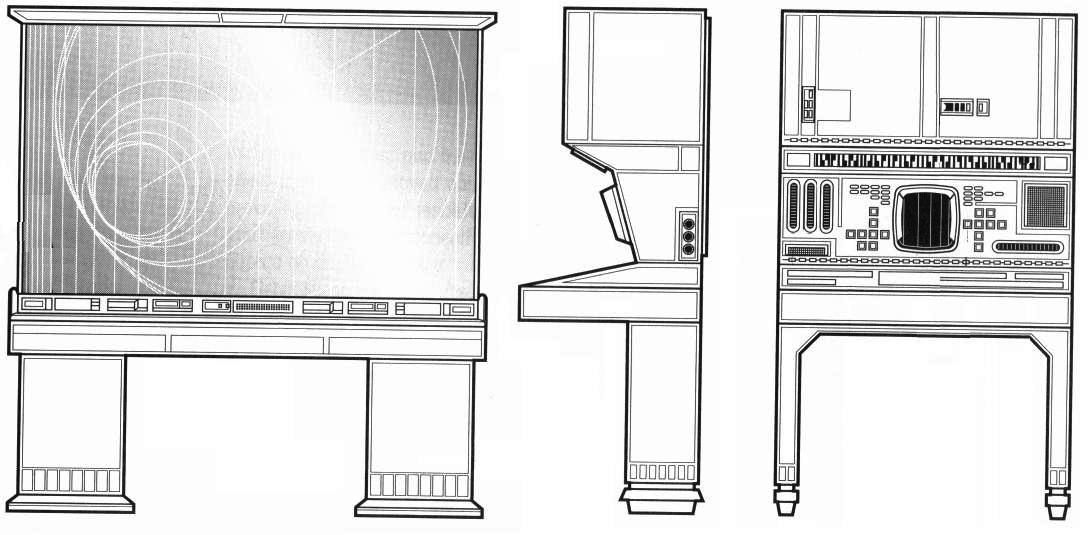 A Com-Scan System as a scanner that detects communication signals. They are used by militry commanders to identify sources of communications and triangulate enemy units with the intercepted communications signals. A typical example is the MicroThrust Processors OrC-19 Com-Scan Integrator Console, a fully portable unit that were often used by the Geh 'Dia and others; The control staion is a free-standing console, tied to a huge, see-through moboard (over 6' tall and nearly that wide). A Com-Scan System as a scanner that detects communication signals. They are used by militry commanders to identify sources of communications and triangulate enemy units with the intercepted communications signals. A typical example is the MicroThrust Processors OrC-19 Com-Scan Integrator Console, a fully portable unit that were often used by the Geh 'Dia and others; The control staion is a free-standing console, tied to a huge, see-through moboard (over 6' tall and nearly that wide).Com-scan computer systems control and integrate the complicated communications and sensor networks found aboard large capital ships such as Star Destroyers and Mon Calamari Star Cruisers. Unlike starfighters, which have only a few sensors, large capital ships may have hundreds of specialized sensor arrays. Imperial Star Destroyers scan space with dozens of directional long-range electro-photo receptors and over a hundred full-spectrum transceivers and dedicated energy receptors. A score of broadband transceivers monitor all communications- From comlink and subspace bands to radionics frequencies- Searching for transmissions that are "hidden" under natural X-ray emissions or background static. Com-scan computers instantly process and analyze this incredible volume of information. Indicators that match preprogrammed warning conditions- Such as power fluctuations that might indicate the presence of a ship or an unexpected energy spike that could indicate power generator hidden by a sensor-stealth system- Automatically activate sensor reserve banks for a more detailed look. By comparing data from both the sensors and communications networks, com-scan operators stand a better chance of detecting starships or hidden bases than do stand-alone sensor arrays. For example, upon emerging in the Hoth system, the com-scan system aboard the Super Star Destroyer EXECUTOR confirmed the presence of the Rebel Alliance's Echo Base by detecting an energy shield around the sixth planet. Com-scan control bays have rows of consoles for recording and analyzing data, while hologram projectors and flat-screen monitors (movement boards, or "moboards") display enemy fleet movements and run battle simulations. Droids programmed with complex data-sorting algorithms and highly skilled communications and sensor operators carefully evaluate the data to determine which information is important enough to forwards to the vessels command staff. Com-scan systems also are used to coordinate large-scale fleet actions, using encrypted subspace and Holonet transmissions to direct strikes precisely against targets in several systems. This tactic was used successfully by both Grand Admiral THRAWN and the reincarnated Emperor PALPATINE during their respective campaigns to topple the New Republic. Similar systems are used at militry bases. The Rebel com-scan system at Y'hvien Four remotely assisted the Alliance's pilots during the Battle of Y'hvien after the Death Star jammed the sensors aboard their X- and Y-Wings. At Hoth, the Rebellion's MicroThrust's OrC-19 monitored Imperial forces and allowed General RIEEKAN to coordinate the ground defense of the base and the evacuation of transport ships. Smaller systems, such as MicroThrust's CO-0012, sometimes are used aboard militry command speeders such as the Imperial Uulshos QH-7 Chariot. The CO-0012 system helps theater commanders track enemy movements by compiling and analyzing information from troops, vehicles, and forward observer stations, while built-in comm encryption systems guarantee secure communications with widely dispersed units. The OrC-19 runs about 20,000€ and are available even in sproting goods stores (the moboard can be used for tracking game activity over time). | |||||||||||||||||||||||||||||||||||||||||||||||||||||
Electroscopes are electro-optical devices used to observe nearby planets, moons, and asteroids. Similar in concept to electro- and macrobinoculars but much more powerful, electroscopes provide a tremendous degree of m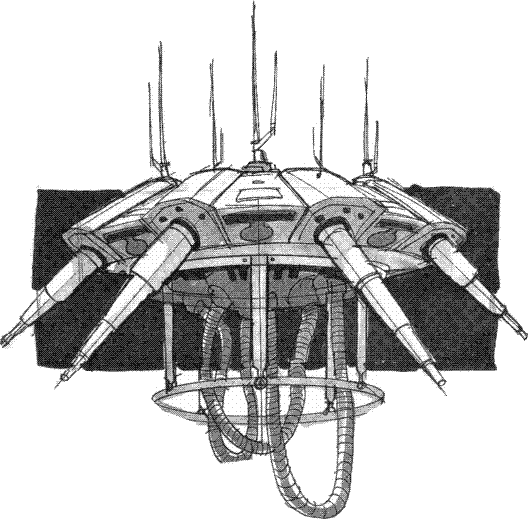 agnification through the use of optics and computers that electronically enhance existing light sources and reduce atmospheric haze and other sources of visual distortion. Electroscopes are equipped with sensors that scan for energy emissions or communication transmissions, making them capable of detecting small freighters at distances of up to five light minutes (This is more than adequate, since most starships are actually much closer to their destination worlds when they reappear in realspace.) agnification through the use of optics and computers that electronically enhance existing light sources and reduce atmospheric haze and other sources of visual distortion. Electroscopes are equipped with sensors that scan for energy emissions or communication transmissions, making them capable of detecting small freighters at distances of up to five light minutes (This is more than adequate, since most starships are actually much closer to their destination worlds when they reappear in realspace.)Electroscopes use a two-stage scanning system. The general scanning mode observes a large area, but with limited resolution and detail. When the control computer detects an anomaly or comes across energy emissions that might indicate nearby starships, the electroscope's detailed scan mode focuses on the specified area to gather as much information as possible. Most models feature controls and standard dataports and astromech drone interfaces. External comm. Transceivers can transmit data from a central base or link multiple units for composite imaging with tremendous detail. Smaller units, such as the Neuro-Saav Technologies VXI-3 Electrotelescope can weigh as little as thirty-five pounds, and their repulsorlift generators allow them to be moved easily. Larger electroscopes provide much greater resolution but are so big that they must be stationed permanently at an observatory or planetary or placed aboard an orbiting satellite. Electroscopes often are installed as sensor backups of starports and space stations and are used on deep-space and observation stations for inhabited planets. Smaller colonies use these devices to scan for asteroids and comets that may be on collision vectors. Since these devices are passive- They only detect incoming light and energy emissions- They can be used without fear of detection by passing starships. They were perfectly suited to malcontents and other outlaws many outposts. When malconts establish bases, secrecy is vital to their survival. Active sensors or orbital satellites are usually out of the question; Large numbers of them, especially large active orbital sensor platforms. Instead, they rely on dozens of electroscopes positioned at bases and arranged at remote outposts to provide an early-detection scanning system. While far from an absolute solution, the network does give reliable support, especially against large-scale assaults, such as an arriving REF battlefleet. | |||||||||||||||||||||||||||||||||||||||||||||||||||||
Hologram Technologies provide the basis for the most common communications medium. For example, minaturized holographic players and recorders can be mounted inside datapoads and atromech dornes, while hologram communicators- Also known as "Holograms Pods"- Can be found almost everwhere for use in 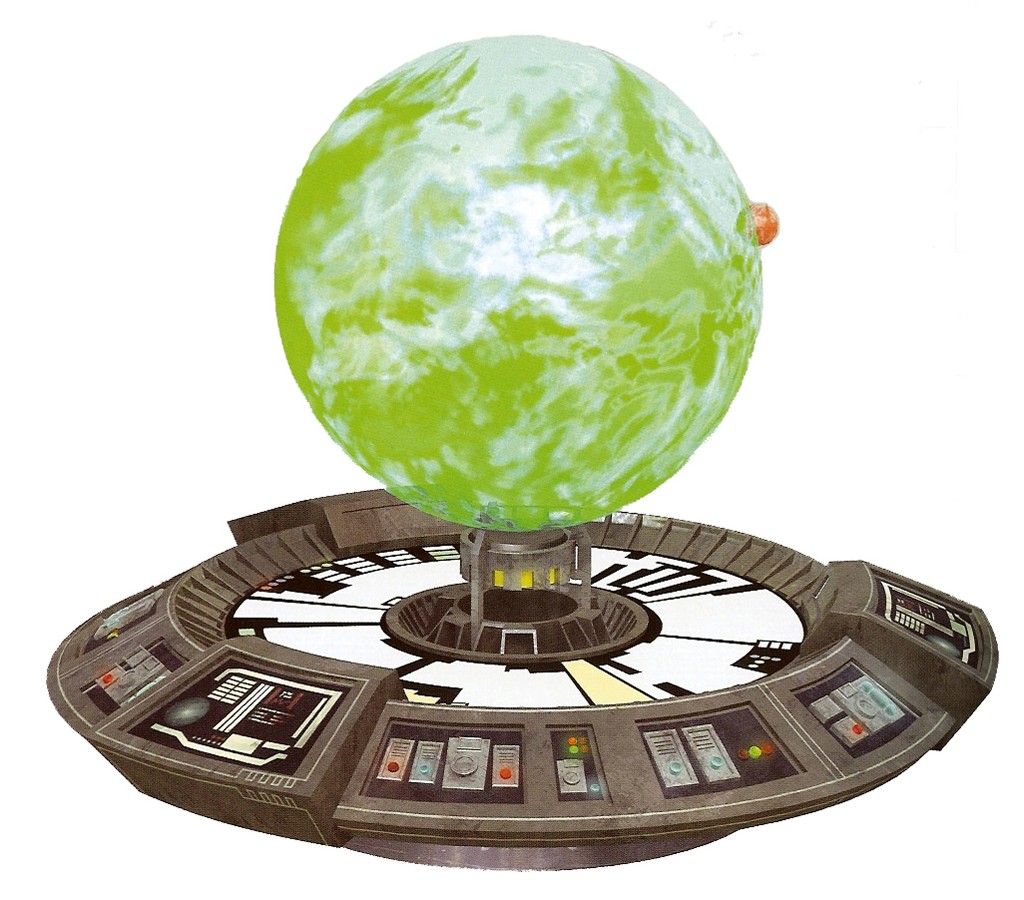 local communications. Starship hologram pods generally are patched into a ship's comms and/or subspace tranceiver/receiver array for broadcasting with other vsls, while many militry and government holgram pods are connected to the HoloNet for instanteanuous transmission of msgs across the galaxy. local communications. Starship hologram pods generally are patched into a ship's comms and/or subspace tranceiver/receiver array for broadcasting with other vsls, while many militry and government holgram pods are connected to the HoloNet for instanteanuous transmission of msgs across the galaxy.When a holographic recording is made, the recorder sacns the subject vis twin sychronized imagers, while an internal computer combines those recordings to construct a three-dimensional light image complete with color, sound, and motion. The hologram can be stored on crystals, data tapes, or data disks for playback on any standard hologram projector. Miniturized units, such as those installed on drones, produce images plagued by flickers, sudden color shifts, and other technical glitches. A larger desigened for public presentations, the CS-Mark 12 hologram projector produces images up to 16 and a half feet in diameter. Input slots accept data disks, data dots, feeds from drones, and feeds from other computers. The CS-Mark 12's operators can control sound, playback speed, projections size, and image rotation speed. An alternative flat-screen data display system can be used for two-dimensional images. The CS-Mark 12 can call upon specialized programs to edit, enhance, and manipulate the recordins. The computer-generated holographic images contained in the plans to the Second Death Star were enhanced by Rebel technicians, allowing the techs to illistrate key locations aboard the battle station and demonstrate the flight path that would be best for fighters entering the Dath Star on the mission to destroy it's main reactor. Holograms are also used for entertainment and are predominatetly broadcast through planetry and subspace networks. Holographic films, three-dimensional sculputres, and and three-dimensional paintings are also extremely popular. The holographic stategy game "Dejarik" is a favorite of Chewbacca, and the Wookie had a gameboard installed aboard Millennium Falcon. Public holographic theaters on cosmopolitan Core Worlds- Such as Coruscant and Corulag- Exhibt entertainment programming, documentiries, sporting events, and news. Most of these arenas have a central hologram unit that can project images over 98 and a half feet tall. Even more advanced holographic systems create "total immersion" enviroments for use at amusment centers such as Hologram Fun Worlds. Militry simulators also use holographic technology. Geh 'Dia Grand Master SKYWALKER earned clearance to fly in the Battle of Yavin after having completed an X-Wing simulator mission, and many New Republic pilots enjoy flying simulated missions. A favorite scenario re-creates the Battle of Yavin and adds an Imerial perimeter fleet with several cruisers. | |||||||||||||||||||||||||||||||||||||||||||||||||||||
The NiteSite Infrared Motion Sensor was a night scope device produced by Neuro-Saav Corporation. The NiteSite is commonly used by mercenaries and bounty hunters around the galaxies. They are cheap, reliable, and hardy,
The NiteSite infrared and motion sensor unit was designed to be included in a battle helmet, and became a popular device due to its reliability and ease of use. The infrared scanner could detect heat sources and life-forms from up to two hundred meters away, and had up to fifty times zoom magnification. The unit also included a cluster of low-illumination enhancers that highlighted all physical objects within ten meters on the internal display screen. A flashguard filter dampened the effect of bright lights and explosions, while the unit's analysis computer could track up to fifty targets on the readout screen. The NiteSite could synchronize with the user's blaster, either by wireless or via a cable, which displayed fire vector information on the readout screen. Additional sensors could also be connected to the NiteSite unit through input ports. | |||||||||||||||||||||||||||||||||||||||||||||||||||||
| A tractor beam (also sometimes called a grappling ray) is an attenuated linear graviton beam, controlled by a force field, used by starships and space stations to control the movement of external objects to manipulate objects caught within its range and field-of-view. Tractor beam projectors are commonplace on capital ships, container ships, docking bays, and on spaceports to place spatial stresses on the object in specific areas allowing the ship using the tractor beam to hold the object in a fixed location or alter its position or trajectory. Tractor beams are generally only used at intra-system velocities to help guide spacecraft into a safe landing at spaceports and docking bays, as well as for aid with loading and unloading of cargo. To safely tow a vsl at FTL speeds, the target vsls engines must be deactivated to avoid shearing forces against towing vsl. Using a tractor beam can be done at these speeds only if both vsls' speeds are exactly matched. This does not apply to vsls in spacefold, since the spacefold effect itself 'tows' the target vsl. Warships boast powerful militry-grade tractor beam projectors that could capture ships; disabled or not, and drag them into a hangar or hold them in position for boarding. Militry vsls are capable of towing just about any vsl at high speeds for prolonged periods without stressing the hull of target ship. However, if a vsl's tractor beam is strong enough, its graviton field can reinforce the structural integrity of a target vsl, keeping its hull from succumbing to stresses normally exhibited by a tractor field. A tractor beam draws upon the momentum of the target as well as the ship from which it emanated. Ships with high momentum, typically meaning high mass, could affect smaller vsls with little strain on their own propulsion. Capital ships can tractor small freighters, for example, but if a freighter attempted to tractor a capital ship, it would actually affect the freighter's trajectory. For two ships of roughly equal size, the attraction was equal, but could be affected by the speed of the ships, which is where momentum played a role. For example, a vsl attempting to rescue a crippled vsl in a decaying orbit (rapidly descending into the atmosphere) may be pulled in with the 'sinking' ship. Smaller craft with powerful enough engines could out-maneuver tractor beams if the ship's pilot was more cunning than the tractor beam operator and the targeting computer or if one of the tractor beam's power couplings are severed. Most vsls are equipped with a tractor beam emitter on the aft ventral hull, as it is the best location for towing objects. Secondary emitters (placed in other locations) are usually only found on militry vsls. Smaller tractor beams are installed within shuttlebays to assist in docking and landing maneuvers. Tractor beams can be avoided by various techniques; One technique is to use a projectile weap, such as a missile, at the very instant as one reverses their sublight engines, which caused the tractor targeting computer to lock on to the torpedo, destroying the tractor beam projector. Another technique is to hide within a larger vsl, such as a fighter inside a freighter. After the freighter is locked by the tractor beam he destroyed the outer hull of the ship and escaped in the shielded X-wing while the operator uselessly tried to regain a confirmed lock through the debris of metal. These instances however, are rare in relation to the number of times tractor beams have reliably captured small vsls. The stress of a tractor beam can cause sub-microscopic deformations in the structural integrity of a target ship's hull, when used in an effort to stop a target craft against their will. A carefully modulated tractor beam can be used to affect ship-to-ship weaponry, to deflect some of the enemy vsl's weaps fire and reducing its effectiveness by fifty percent. Finally, a tractor beam can be 'reversed', effectively becoming a repulser beam, by switch some of the control crystals around, and inserting others in the proper sequence; In the control box cover of tractor beam emitter arrays, the proper schematics are printed under the proper alignment for a standard tractor array. | |||||||||||||||||||||||||||||||||||||||||||||||||||||
 Terran British Royal Army. |  Terran British Royal Army. | ||||||||||||||||||||||||||||||||||||||||||||||||||||
Bailey Bridges are a type of pre-fabricated portable truss bridge developed in 1940-1941 by the British for militry use during the Second World War and saw extensive use by the Allies. Bailey Bridges require no special tools or heavy equipment to assemble and the components are small and light enough
Design The success of the Bailey Bridge is due to the simplicity of the fabrication and assembly of its modular components, combined with the ability to erect and deploy sections with a minimum of assistance from heavy equipment. Many previous designs for militry bridges required booms and hoists to lift the pre-assembled bridge and lower it into place; Even da VINCI Bridges have to be lifted during construction. Bailey Bridge parts are made of standard steel alloys, and are simple enough that parts are interchangeable; Deviations of 1/100ᵗʰ are considered defective. Each individual part could be carried by a small number of men, enabling engineers to move more easily and quickly, in preparing the way for vehicles, personnel, and mat'eriel advancing behind them. The modular design allowed engineers to build each bridge to be as long and as strong as needed, doubling or tripling the supportive side panels, or on the roadbed sections. The basic bridge consists of three main parts. The bridge's strength is provided by the panels on the sides. The panels are 10-foot-long (3.0 m), 5-foot-high (1.5 m), cross-braced rectangles that each weigh 570 pounds (260 kg), and can be lifted by six men. The panel was constructed of welded steel. The top and bottom chord of each panel had interlocking male and female lugs into which engineers can inset panel connecting pins. The deck of the bridge consists of a number of 19-foot-wide (5.8 m) transoms that run across the bridge, with 10-foot-long (3.0 m) stringers running between them on the bottom, forming a square. Transoms rest on the lower chord of the panels, and clamps hold them together. Stringers are placed atop the completed structural frame, and decking is placed atop the stringers to provide a roadbed. Ribands bolt the decking to the stringers. Each unit constructed in this fashion creates a single 10-foot-long (3.0 m) section of bridge, with a 12-foot-wide (3.7 m) roadbed. After one section is complete it is typically pushed forward over rollers on the bridgehead, and another section built behind it. The two are then connected together with pins pounded into holes in the corners of the panels. For added strength up to three panels (and transoms) can be bolted on either side of the bridge, and the panels can be stacked vertically. With three panels across and two high, the Bailey Bridge can support tanks over a 200-foot span (61 m). Pedestrian decking is usually installed on the outside of the side-panels (though in some cases a second bridge is built alongside. The side-panels form an effective barrier between foot and vehicle traffic, allowing pedestrians to safely use the bridge. For extremely long sections that must be shored before the main bridge is built, 10 foot transoms and stringers are used to build a temporary bridge at least wice as wide as the sections being built; The extra length combined with weights creates a safe platform to work from in the building of the shoring (typically in these cases sections of bridiging set upright), then the two sections of panels are assembled and pushed forward as normal, but using the termprary section for support until the section is spanned. The temporary section is then pulled back and the new deck assembled as normal. Note that this is an usual practice, reserved for situations where shoring must be installed before the next span can be put in place, and is not typically used in combat zones (only the Klicor Rvr #5 Bridge on Tauron has ever been recorded as having been built this war in a combat zone, and not under fire). Normally (especially in combat zones) the bridge spans are launched from one side of a gap, the first panels angled by wedges and most of the bridge placed on rollers and pushed across using manpower (on occasion a vehicle), at which point the rollers are removed and the ribands and roadbed installed, along with any additional panels and transoms that might be needed. Bailey Bridges do not typically require falsework (temporary structures to support a permanent structure until sufficiently advanced to support itself), but they can be and in extreme cases are. History Donald BAILEY tinkered with model bridges as a hobby; During Terra's Second World War he drew a proposal for this type of bridging, and in 1940 the Terran British Ministry Of Supply requested a full-scale prototype completed by 1 May. BAILEY completed the prototype with Ralph FREEMAN and it was tested at the Experimental Bridging Establishment in December 1940 and ending in 1941. The first prototype was tested in 1941. It passed. The prototype was used to span Mother Siller's Channel where it remained as a functioning bridge until it was bombed during the Global Civil War. Thousands of workers and over 650 firms began making the bridge immediately, with production eventually rising to 25,000 bridge panels a month with the first in permanent service by December 1941; The first in militry service were used in North Africa in 1942 (a delay representing militry necessity, or lack of until that point, and not a design or manufacturing issue). Use In The Terran Second World War Bailey Bridges provided a solution to the problem of German and Italian armies destroying bridges as they retreated. By the end of the war, the US Fifth Army and British 8ᵀᴴ Army had built over 3,000 Bailey Bridges in Sicily and Italy alone, totaling over 55 miles (89 km) of bridge, at an average length of 100 feet (30 m). One Bailey, built to replace the Sangro River Bridge in Italy, spanned 1,126 feet (343 m). Another on the Chindwin River in Burma, spanned 1,154 feet (352 m). Such long bridges required support from either piers or pontoons. The Terran Amriecan militry also licensed the design and started rapid construction for their own use. A Bailey Bridge constructed over the River Rhine at Rees, Germany, in 1945 by the Royal Canadian Engineers was named "Blackfriars Bridge," and, at 1,814 feet (558m) including the ramps at each end, was then the longest Bailey Bridge constructed until after the Global Civil War (and in fact the end of the Invid invasion of Terra). A nearly universal opinion of Bailey Bridges was expressed by the Terran British militry commander General Bernard MONTGOMERY;
This opinion is still held; The most exotic example of Bailey Bridge's utility is expressed in Sander space Port's ground complex (nicknamed Corbitston for Denatis CORBIT, the Fjylt Command Captain who led the project); At 20 acres and over 100 buildings (including Anders Hall administrative building at 12 decks and 5.2 million square feet), the Bailey Bridges came a long way to advancing the Atorian campaign (the entire complex is still in use). Bailey Bridges are also used atop Mulberries and other semi-permanent hills when needed (intermittently for basic berms, bocage, dikes, and etc. but almost universally needed atop mulberries). Civil Applications There's not much that can't be built with Bailey Bridge sections, at least under 67 decks (201 sections tall, or about 1,000 feet high), especially when combined with Neocell. Some project require prior planning (for example Ander's Hall took three years to build, and required custom made transom and spanners), but rocket launch towers, other buildings, and even a dam have been built of Bailey Bridge sections, with many more projects utilizing the sections for temporary structures while the permanent structure was assembled; More than one project was built over the bridging (including over 1,000 dams built by the UGC over the last 500 years), and they are still often a significant part of the permanent structure's stability. Bailey Buildings
The development of the "Bailey Building" was highly controversial; Amongst other things, REF Commander James DODSON had procured all the equipment needed to build Bailey Bridges on the Tirol campaign if the materials (steel stock) were provided under false pretenses (for "ship repairs"). He's also developed a few new components for the bridges, notably a collapsible 10 ft by 10 ft upright support sections. In his documentation, he reported these were intended to replace the use of full bridges for upright support in mid span, but once the REF began fighting across the Local Group he began building mid-sized facilities using Bailey Bridge panels covered by relatively thin skins (usually tin at first, though later on plywood became available). Nobody might have noticed, but then the REF won the war and suddenly they had facilities to dispose of; They weren't here as conquerors, and in the case of Garuda were very much the alien species. In the process of disposing of these properties, would-be new owners noticed the use of the Bailey Bridges- And Admiral REIHNHART realized he'd been had. The Phases Of Construction; Every 2,000 feet (200 panels) is a Dodson Frame, a set of 4 specialized Bailey panels that provide vertical support. Between them are 3 rows of 199 panels of normal (lighter) Bailey panels that hang off of their assigned Dodson panels, just like a normal bridge would have. Through the middle (and sometimes top) row are slid window frame fittings, then along the bottom row are put panel covers; The second row is covered by panels with window openings, which connect to the window frames to help anchor them in place; Then the third row of full panels is installed. Each row of panels overlaps the lower one by about 2 inches, ensuring water doesn't get in. Variations on this design exist; Windows can be installed on any row, as can windowless panels, but the most common variation is to install no windows if privacy is imperative (such as heads and showers), and installing windows along all three rows when lighting is imperative (typically messhalls) or uppermost decks (which are usually the Commanding Officer and other critical command personnel's private quarters). Other buildings have few or no windows at all, such as warehouses, repair shops, and factories. The buildings are often now re-sheathed in neocell for additional weather protection, but a re-sheathing operation must be conducted at night during summer when no rain occurs (or the rain will be trapped inside, eventually damaging the building), and must be completed in one night- A planning nightmare that requires as much as 2 years of planning. The "DODSON Scandal" Just before the REF departed for Tirol, REF Commander James DODSON ordered a large amount of equipment that individually looked like normal fabrication machines. Most of it got modest degrees of use through the Invid Wars, but during the Atorian War the equipment's use was ramped up over 2,000%- commander DODSON had rightly predicted that Bailey Bridges would be useful, and not available, in the Tirol campaign (as it was being called until discovery of the monumental change in the sector) and had ordered the equipment under a pretext of common use; In fact he'd planned all along to have the equipment available to build Bailey Briges as the materials were available. When REF Command realized they'd been conned, even if for ultruistic reason, they placed DODSON, now a Rear Admiral lower half, on trial for misappropriation. His attorney, Lt Laura SUMNERS (later Senator Laura JAMES) offered the simplest yet most brilliant defense possible, that the results spoke for themselves (and that the Admiral had not profited from his dubious procurement practice). After this, each fleet was encouraged (and later required) to keep a microfactory capable of building Bailey Bridges amongst other things (Command DODSON hadn't just built bridge panels and transoms in his "secret" factory); When they are set into a separate unit the ship is referred to as a 'dodson' in honor of the Admiral. | |||||||||||||||||||||||||||||||||||||||||||||||||||||
 Terran American Empire. | called "Marston Mats"). |  Terran American Empire. | |||||||||||||||||||||||||||||||||||||||||||||||||||
Marsden Matting is standardized perforated matting (typically made of hypercarbonate) originally developed on Terra during their Second World War by the United States at the Waterways Experiment Station, primarily for the rapid construction of temporary
Marsden Mats were originally introduced to the rest of the galaxy by the REF; Variations of this basic concept had been in service for a very long time by the Tiresians and Carbonarrans, but the REF introduced the concept of the interlocking segments; This was a quantum leap over previous designs. Marsden mats consist of 8' long, 18" strips with holes punched through it in rows and V-shaped channels formed between the holes. Interlock links along both sided and each end allow them to be connected together. (In the original design, there were no locks along the ends.) Marsden Mats aren't the easiest materials to work with; They have to be fitted together in sections before they can be laid down, then fitted into the previous section to be properly secured. Once secured, however, they can be virtually ignored until either abandoned altogether or recovered for other projects. In some cases, the ground underneath the mats have to be re-inforced; This can be done by laying down gravel, crushed coral, large rocks and small boulders, etc for filling ruts, laying down small trees or other sections of mats for soft earth (sand and water logged earth), The perforation and channel design of the matting creates strength and rigidity and facilitates drainage; Perforation also reduces weight. A runway 20 feet wide and 500 feet (150 m) long can be created a few hours by as few a 1 engineer and 6 laborers. (A runway this size is more than adequate for a Veritech servicing airfield.) Additional applications of Marsden Mats include roads and bridge construction; On Garuda, especially, matting still remains in use for all improved roads, including roadway barriers, stretching for hundreds of miles in some cases. | |||||||||||||||||||||||||||||||||||||||||||||||||||||
 United Galaxies Council. |  United Galaxies Council. | ||||||||||||||||||||||||||||||||||||||||||||||||||||
| Plastics are a by-product of the petroleum refinery process; A semi-solid material that could not be disposed of easily. Eventually, a oil producer turned to chemists and asked them to do "something" with it. After a few months of study, they developed plastics, which instantly turned a liability, into an asset. Unfortunately, plastics come from hydrocarbon deposits, and not every settled planet has oil. Also, some worlds (Garuda, for example) do no allow mining, logging, and oil drilling. With this in mind, UGC scientists developed Hypercarbonates, carbon-based materials with 98% of the properties of plastics. Carbon is so abundant, that to date no settlement hasn't been able to find rich carbon deposits, and because carbon is so malleable, it is the ideal substance. Unfortunately, starting from the very raw materials (oil is a hydrocarbon, or type of carbon material) means the process of development is more complicated, and therefore more expensive; On the other hand, it is environmentally inert. This means that you can throw a hyper carbonate object, say a rain jacket, in a hole a couple feet deep, fill it in, and in about 6 to 8 months, there is nothing in the hole other than carbon-rich dirt. The main disadvantage of hypercarbonates is recycleability; Plastics, it's as simple as melting it down with like plastics, then molding, and perhaps coloring, it into what you want. Hypercarbonates must be rent down to the elemental (atomic) materials, then re-constituted as to nature of material. A significantly more detailed process; Nevertheless, it is far better than nothing, and in it's own ways, better than the original. Therefore, hypercarbonates will remain as a highly critical substance in the future for many, many years to come. | |||||||||||||||||||||||||||||||||||||||||||||||||||||
 United Galaxies Council. | Earth-Class (WALL●E). |  United Galaxies Council. | |||||||||||||||||||||||||||||||||||||||||||||||||||
In service for hundreds of years now, the Waste Allocation Lift Loader, Earth-Class (WALL●E) Series the WALL●E series are programmed to clean up a planet, one trash cube at a time. However, they tend to develop a personality rather
History The WALL●E series was first developed to clean the planet Arcadia 234, a waste disposal planet with dangerously high wind velocities originally deemed unsuitable for life after the "Soldier TODD Rebellion" (in which colonists who crash-landed on Arcadia 234, rather than the Trinity Moons as they had originally planned, and retired soldiers deemed "no longer fit for militry duties" joined forces to protect themselves from rogue militry personnel) and the United Galaxies Alliance was obliged to re-build the planet. Millions of WALL●E's were manufactured to do so, and have been steadily repairing the planet since. They are also being used to clean up many former Atorian planets (including Fljyt, one of the most significant totally alien technologies fully embraced by the Flyjts). Applications WALL●E's typically pull in about 36³ inches of loose material, then hypra-compact it (actually changing it's molecular, and occasionally even ATOMIC, structure in the process). Many millions of these units can also be found in private homes, both as trash and as limited-duty security units (watch and ward, and on occasion even standing and fighting long enough to allow the residents to escape, much like a guard dog), and even, due to their generally good disposition, as metal pets; They even get along with pet animals. (To date, there have been NO reports, not a single one, of a WALL●E getting into any type of confrontation with a pet, child, or etc. of an owner; however, they are not determined to be safe around livestock, due to the probability of the livestock harming the WALL●E's.) Capabilities 100 WALL●E's can tear apart a multi-million ton aircraft carrier apart and compact it to a pile of steel and other metals in about a week. They can also be outfitted with "Optional Kit Alpha" making it a triple-point shredder (certified up to Top-Secret by the militry) and "Optional Kit Beta" that allows them to serve as portable garbage disposals (thought the Beta it hasn't sold very well, since it really doesn't make very much sense). Legal Issues To date, the only "legal issue" to arise around the WALL●E series is the events that created them- The legalities of massacring a colony of shipwreck survivors, of training people to be soldiers from birth, of dumping trash on "uninhabited planets" that are, in fact, inhabited, etc. Even the tradition right of business owners to refuse to allow drones into their establishments has been generally overruled provide the owner of the establishment has one trash compactor or garbage disposal (although most cops will still tell the owner to leave the drone at home unless it's a cleaning crew). While not technically a legal issue, the WALL●E series does possess basic sentience, roughly equivalent to a working animal (guard or sheppard's dogs, for example). As a result, attacking one is an attack on the owner at least, and, if the owner is the one doing the attacking, is a criminal offence (though it's just a serious misdemeanor). Further, they retain the right to self-preservation "by the least violent means necessary," though there have been cases of WALL●E's using DEADLY force (under extreme circumstances). There has NEVER been a case of a WALL●E attacking unprovoked, and their base logarithm prevents this; They are the least violent things in the universe. (Attempts to tamper with the base logarithm will cause the units globally to shut down; it's part of the base logarithm itself, and while this means they can never be upgraded either, it provides a very useful safeguard). | |||||||||||||||||||||||||||||||||||||||||||||||||||||
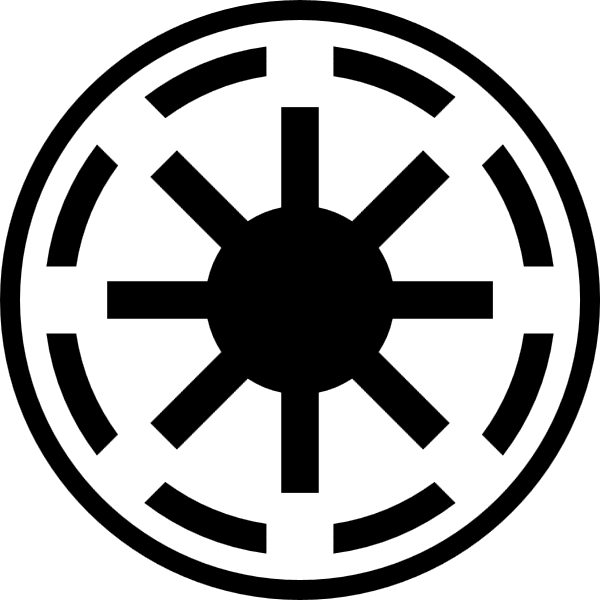 Rakatan Republic. |  Rakatan Republic. | ||||||||||||||||||||||||||||||||||||||||||||||||||||
As delivery droids, they were equipped with sophisticated locking mechanisms that permitted overly long, complex, or sensitive messages to be securely delivered any distance the sender desired (even theoretically inter-galactic). The receiver had to clear the message for release. The only way to remove the message without authorization was to destroy the mouse itself- In turn destroying the message. Specifications The MSE-6 stands about 2 feet tall and run on six wheels. Although programmed with multiple capabilities, the droid is designed with only a singular function. A modular circuit matrix is installed beneath the droid's boxy shell, and contained programming for one skill. Commonly, mouse droids carried out cleanup and basic repair duties, and could serve in security and communications fields. Since each droid possesses only a single skill, multiple mouse droids can chain together to pool their resources for more complex assignments. Trains of MSE-6 droids could often be seen guiding troops through militry installations; This kind of duty required mouse droids to be programmed with complete readouts of their assigned areas. In addition, due to their use in militry outposts, MSE-6 units are rigged to melt down if captured, giving the droids a strong self-preservation instinct. History The MSE-6 was developed by the Chadra-Fan at Rebaxan Columni, based on the earliest MSE design, the MSE-1T droid. Rebaxan produced billions of the droids, heavily promoting them in over four hundred sectors and marketing them as "cute"; The general public instead considered them irritating, and some considered them similar to annoying vermin. Many MSE-6 droids were used by the Republic Navy during the Forgotten Wars. They became desperate to sell the massive collection of droids they had built, so they sold the entire lot of them to the Empire for the Navy, which was desperate for droids, before bankruptcy. There is at least one case of a Mouse droid being used to damage a warship by destroying her hyperdrive, trapping the vessel where she was; About all that is remembered of this event is that it was the Battle of Selaggis. Another example of off-warrantee application was the use a large number of modified mouse droids into as mobile surveillance units to root out infiltrators on Mon Calamari. These are still in some use. Giant Mouse Droid. "Giant Mouse Droids" were MSE-series droids similar to the MSE-6 droid, although much larger. They are equipped with two photoreceptors atop an eyestalk and roll along on treads at a relatively brisk 25 MPH. Typically they are outfitted with flexfuel internal combustion generators and solar panels charging a bank of 24 gel-cell batteries; The solar panels charge the batteries (the generator takes over if the solar panels can't keep up), which drive the motors carrying the vehicle forward. These are often used as various people movers, usually called "Johnny Cab's." Several other "power recovery" technologies are also built in (such as recovering power from braking). However, the vehicles are fairly primitive; Even a basic amenity like air condition and heaters are rarely installed. Droids of this kind are found throughout the Rakatan Galaxy. An even more common variant, however, was transporting materials over moderately long distances. The only units routinely fitted with air condition are for transporting frozen goods, such as ice cream, with more complex powerplants that negate passenger capacity entirely. | |||||||||||||||||||||||||||||||||||||||||||||||||||||
 Draconian March. | /Theopolis Upgrade Kit. |  Draconian March. | |||||||||||||||||||||||||||||||||||||||||||||||||||
The Twiki series has a rudimentary sense of humor, though not a great one. They're affable enough, even known to ask others, such as Commander ROYKO to "Gimme five." They are also known to pinch others with their metallic pincer-hands, if they are annoying. The Theopolis Upgrade Kit mounts essentially a second computer on their chest, which greatly expands their intellectual capabilities. Vocators for the Twiki are in the head, but when the Theopolis upgrade is included the vocator moves to the chest. The greatest test of the upgraded Twiki's was when one served as defense council for an accused traitor; This was QUITE contrary to custom, and in fact illegal, but the defendant insisted, and the judge granted the change of representation. The defendant was eventually found not guilty not only of the charges as made, but of ANY charges. Twikis, with or without the upgrade kit, make was is to many an annoying "bidi-bidi-bidi-bidi" noise when processing information (much like a laptop might display a timer symbol of some sort). Those who understand computer languages (which is most other robots) can extract some information, but it's usually binary information, and in essence nothing more than "mind reading," as the interpreter only knows the Twiki's thoughts as they are occurring. Even with upgrades, the Twiki unit is semi-non-upgradeable; The Theopolis unit simply provides more power. Twiki's are known to "split" as a personality, with the base unit making comments oppositional to the upgrade system, or, when an action is imperfectly completed, to remark "He's the brains of this outfit." The Twiki Serise are considered semi-sentient, despite their relatively impressive vocabulary and speech patterns; As such, they have the same rights as family pets or livestock. A Theopolis upgraded unit has full sentience, even if the upgrade system is disconnected somehow (usually by a violent act), and consequently all the rights thereof. | |||||||||||||||||||||||||||||||||||||||||||||||||||||
 Kobolese Confederation. |  Kobolese Confederation. | ||||||||||||||||||||||||||||||||||||||||||||||||||||
Originally developed for the Valley Forge-Class Agricltural Ships, the D-31 series are equipment and agricultural maintenance drones. They are very slow, deliberate-moving machines,
The series wasn't terribly well received in any circles, and are generally only kept because of three such units- Ayden's Garden (callsign Alpha Sierra 4-1-1) made a 22 light year journey to transport a load of Sequoia sempervirens (California coastal redwoods of Terra) to Tritinix for reforestation efforts; En route there, however, the entire crew died of a virulent Ranzor outbreak (the worst ever recorded). Rather than 'give up and die' AS-411 01, 02, and 03 continued with the mission, keeping the forest alive and the ship intact. This was doubly amazing, since the flight control system went haywire, so these three units had to keep this going for 100 years. (There was actually another 06 units that one by one failed over time, their parts being cannibalized when possible.) When Ayden's Garden was discovered and recovered, the salvers, New Tritinix Salvers, adopted the three drones and named them Huey, Dewey, and Louey. As a redundancy, and out of respect for the meticulous care taken for Ayden's Garden by AS-411 01, 02, and 03 (Huey, Dewey, and Louey, respectively), each Valley Forge-Class is outfitted with these drones. | |||||||||||||||||||||||||||||||||||||||||||||||||||||
Multiple Empires. | Multiple Empires. | ||||||||||||||||||||||||||||||||||||||||||||||||||||
Use As with most deflector systems, shields required large amounts of energy in the form of energy cells or a portable generator. Some models featured rechargeable energy cells. While the generator provided the most efficiency, it was larger and bulkier. The power requirements meant that shields tended to be used only when combat was expected. Another feature of personal shields was ablation, that is, the shield weakened as it absorbed damage until it either was deactivated, failed, or recharged. As the shields absorbed energy, they tended to become extremely hot. Due to the limitations of personal deflector shields, they were usually used in tandem with other forms of protection. History In use as early as the Mandalorian Wars and brought to prominence in the subsequent Geh 'Dia Civil War, the technology was rumored to be of Echani origin. There were melee shields, energy shields, and Verpine shields. When Revan began his campaign against the Galactic Republic, his Syhith Troopers were issued standard energy shields. This resulted in the Syhith armies gaining many bloody battles against Republic troopers armed with standard blasters. After the Republic gained access to copies of the technology, it began to flourish. This led to both sides issuing standard melee weapons, such as vibroblades, and training their soldiers in hand to hand combat. While never widespread during the Geh 'Dia Civil War (usually being issued to small, elite strike teams) the technology eventually disappeared almost entirely. Little information exists as to why, but Admiral Carth ONASI was heard to speculate that in the future blaster technology might "catch up" to shield technology. As blasters became increasingly effective against shields, producing effective shields would most likely become increasingly difficult and expensive, until it was no longer feasible to build shields for everyday use. By the time of the Battle of Naboo, personal shields that covered an entire being existed, but produced radiation and magnetic fields that were dangerous for sustained use. The Gungan Grand Army of Naboo employed hand-held personal energy shields that projected a thin force field around 5 feet (XXm) tall. The commando droids which protected the Separatists' vital facilities such as the Citadel were also equipped with hand-held personal shields similar to Gungan's. The Droideka units of the Trade Federation also carried personal energy shields, making them highly effective against clone troopers and Geh 'Dia Knights. However, these shields were hazardous to organic lifeforms, generating highly-intense electromagnetic fields and large amounts of radiation. In contrast, however, the Republic used personal shields in much the same way they had been used in the Geh 'Dia Civil War, issuing them to their small but skilled clone commando units. The Chiss used personal shields with reverse polarity to protect homes against robbers, with the criminals often incinerating themselves until it was discontinued due to the dangers of both the radiation and of catching innocent bystanders. During the Galactic Civil War through the Yuuzhan Vong War, however, personal shield tech was all but lost. Very few armies equipped their soldiers with personal shielding, due to the craft being lost (or simply outdated) for many years. The technology was by then very expensive and mostly limited to extraordinary individuals, such as the mercenary/Geh 'Dia Kyle KATARN and his student Jaden KORR, Imperial General SK'AR, and a Ben KENOBI-impersonating Imperial agent. | |||||||||||||||||||||||||||||||||||||||||||||||||||||
 Terran United Nations. | Vehicle, aka "Roller." |  Terran United Nations. | |||||||||||||||||||||||||||||||||||||||||||||||||||
| Similar to the M-299, the GN M-3002 is a six-wheeled variable terrain vehicle designed to operate in low-gravity conditions on terrestrial bodies with little or no atmosphere. The M-3002 has room for four passengers (including driver) and features small thruster nozzles along the sides of the vehicle (including two top mounted omni-directional nozzle bulbs) for low gravity maneuvering. Like most utility vehicles, the M-3002 has a communications system that can be linked with the internal units in personal space suits. Many were armored with scraps from T'sentraedi battlepods and armed with guns from those same pods during the First Terran Reconstruction (many by the RDF itself). They can be used in 0-gravity environments (though at an embarrassingly slow 2 knots); Additionally, they CAN be used in standard gravity and atmospheres at no deficit. It is the oldest singular piece of equipment listed here, and the least changed from first to present iteration. GN M-3002's served aboard the SDF-001, throughout the Reconstruction, and well into the Invid Wars. Today, one of the MOST critical roles the Rollers fill is with the M-611c Perceval "Charlotte" Repair Vehicles. In fact, the Charlotte's were specifically designed with gripe down staples around the gripe down points for an M-3002. Additionally, while not an intended effect, it was discovered that the M-3002 could easily carry an M-613 Mobile Repair Facility over short distances (less than 1 mile). The M-3002's unusually frame arrangement allows them to be stacked or "nested" like Matryoshka dolls, making them much more stable and slightly smaller in transportation mode. This is why an M-611c/613 can carry two (or even three) Rollers to a worksite.
| |||||||||||||||||||||||||||||||||||||||||||||||||||||
 United Galaxies Council. |  United Galaxies Council. | ||||||||||||||||||||||||||||||||||||||||||||||||||||
The ML-3 is a one-man missile loading forklift commonly used to arm Mecha, especially Veritechs. Both forks of the lift have grasping hands to better hold and position missiles. The fork arms can move individually or simultaneously. Maximum 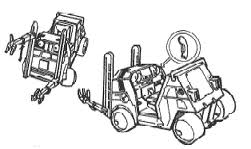 height of reach is eight feet (2.4 m). It is also used for transporting other cargo and loading. One of the common uses is to haul heavy loads over short distances (in other words, ordnance dollies around flight decks and hangers). height of reach is eight feet (2.4 m). It is also used for transporting other cargo and loading. One of the common uses is to haul heavy loads over short distances (in other words, ordnance dollies around flight decks and hangers).Despite the ML-3's clear ability to fully arm fighters, tanks, and Mecha, they are only used to load the heaviest items, since it's generally faster to load them using 2 (or 3) men, with one inserting the first pre-flight tag quickly to get the item in place. A boom lift kit is also available; Swapping out the Arm Kit for the Boom Lift Kit takes about 2 minutes. Crew: 1. Speed: 50mph. Range: 150 miles. Height: 7ft. Width: 4ft. Length: 14ft. Weight: 2 tons. | |||||||||||||||||||||||||||||||||||||||||||||||||||||
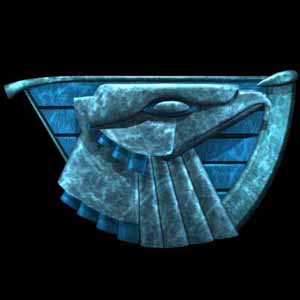 Fremen (House Atreides). |  Fremen (House Atreides). | ||||||||||||||||||||||||||||||||||||||||||||||||||||
Design The stillsuit typically covered the entire body, up to the neck and wrists. For the hands, gloves could be worn. However, when delicate work was performed, Fremen discarded the gloves and rubbed their hands with leaves from the creosote bush. This allowed them to work, while the residue from the creosote leaves prevented perspiration. A facial mask could also be worn so that moisture from the mouth and face could also be reclaimed. The stillsuit was explained in this manner:
During the Butlerian Jihad but far from it, in Arrakis, the outlaws of Selim Wormrider had developed distilling suits with internal recycling systems and protection and survival during times when they must be abroad in the open desert. During the time of the Faufreluches, stillsuits were manufactured by Fremen as well as private entrepreneurs. However, Fremen manufactured stillsuits were widely considered the best, as they were the only ones that could preserve the body's moisture in the deep desert. Only an average of a thimbleful of water a day was lost when a Fremen stillsuit was worn. Use Fremen stillsuit discipline was very strict. Since an individual's body water belonged to the tribe, it was everybody's personal responsibility to preserve as much of their water as possible. Moreover, when crossing the Deep Desert, utter adherence to maximum stillsuit discipline was the only way one would have a chance of surviving. While in sietch, stillsuit discipline was more relaxed. One of the measures of the progress of Arrakis' transformation from a desert planet to a lush world was when Fremen no longer required to wear stillsuits in the open air. Export Stillsuits were the first and to date the largest product exported throughout the UGC; Fremen stillsuits, in particular, are most popular since they are universally considered the best. Even authorized copies are not as good as the original. Some particularly dry words, such as G889 mandate their use, either generally or under field condition (G889, for example, only mandates use when the user plans or reasonably expects to be beyond civilization for more than 24 hours). | |||||||||||||||||||||||||||||||||||||||||||||||||||||
Multiple Empires. | Multiple Empires. | ||||||||||||||||||||||||||||||||||||||||||||||||||||
| A "Restraint Collar" is a device designed to keep prisoners (and slaves) under control (slavery isn't illegal under the UGC, though the Council actively works to eradicate it whenever possible). The collar consists of a neck brace that was often linked to chains or cables and features shock panels to shock an unruly captive. Some types of collars are also designed to explode if one attempted to improperly remove it, or be detonated by transmitter if the wearer attempts to escape; These versions are strictly speaking illegal under UGC law, but are very commonly found in the hands of slavers. History In the past the Secret Service of the Mandalorians faction have used this collar to torture prisoners, and captured Wookiees were usually forced into chain groups with a slaving collar around their necks by Trandoshan slavers (usually the lowest ranking member of the slaver patrol had to place these collars around the Wookiees' necks- a very dangerous job). Under UGC law they may be used to move high-risk prisoners (both criminal and militry), but only with shock panels. They are also used to control and identify militry internees and detainees (POW's), but used as rarely as possible. Other Uses The model depicted in the Mandalorian Type 14, which is sold commercially in sex shops as a B&D device, since it's been powered down significantly (it's also been re-molded for greater aesthetic appeal). It is, in fact, easily removed, as the black knobs on the front of the collar (where the chain actually attaches) is, in fact, magnetic. UGC Approved Type 31 Restraint Collar The only model approved by the UGC is the type 31 series, which uses a QR code and micro transmitter in the collar to identify the collar and presumably the wearer. They can be scaled down as far as a human female's wrist, but are typically used as collar devices as that is the most effective method. They are installed by placing the wearer in a chair (against their will if needed), then collar placed around their neck, and then a pin slightly larger than the collar is forced through the holes through the device. The collars and the pins are titanium, and thus practically impossible to remove, however in the macro voltage current fails to register at any point the device can be rigged with a micro explosive that is normally deadly. This option is never used in militry detainees and internees (POW's), but always used with militry prisoners (ie, UGC militry criminals). Removing the collar is the inverse of the application process, but leaves both the collar and pin ruined and unusable. To date there has only been one successful escape attempt of an inmate equipped with a type 31, the mass escape from a prison labor camp orchestrated by Benjemin RICHARDS. This also required every inmate to participate and every guard on site to be killed, in turn resulting in the death of over half the inmates immediately and recovery of half of the survivors only hours later- All of the survivors were eventually recovered. | 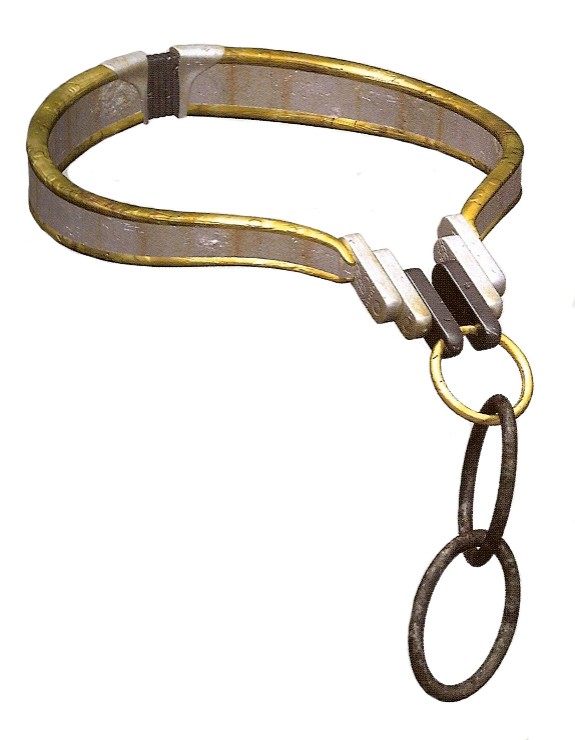 | ||||||||||||||||||||||||||||||||||||||||||||||||||||
 | |||||||||||||||||||||||||||||||||||||||||||||||||||||
Multiple Empires. |  | ||||||||||||||||||||||||||||||||||||||||||||||||||||
| "Stun Cuffs", also known as simply binders, are devices used to restrict the movement of a captive's limbs. The thin but unbreakable cuffs are commonly used to bind a prisoner's hands, but could also be used to bind both feet, or one arm and one leg to further immobilize a captive. These devices are used on criminals to hold them in custody so they could not escape. The cuffs can stun the prisoner if a button is pressed by the guard or, in some cases if the prisoner resisted too much. However, Geh 'Dia and other Force-trained beings have proven far more difficult to restrain than average beings. Geonosians used binders on their prisoners in their gladiatorial arenas on Geonosis (used for state sanctioned executions). These binders had pulse lock points that welded the clasps tight. They also featured an electronic release mechanism. The Confederacy of Independent Systems also made use of binders, complete with duranium cinch-locks. The UGC adopted the Model 4-40, depicted here, because they are quite simply unbreakable. To prove the point, a set were tried on a T'sentraedi Warrior ("big, dumb, strong"). He couldn't break them (though he did manage to damage them to some degree; he distorted the metal, so they couldn't be opened, and they ended up having to cut them open- after breaking BOTH wrists trying). Unfortunately, this same technology works for slavers as well, and for better or for worse slavery isn't against UGC law; Repealing this prohibition was needed to get several species onboard the mid-era UWA, most noteworthy a few species that had traditionally sold themselves into slavery (due to religious reasons). | 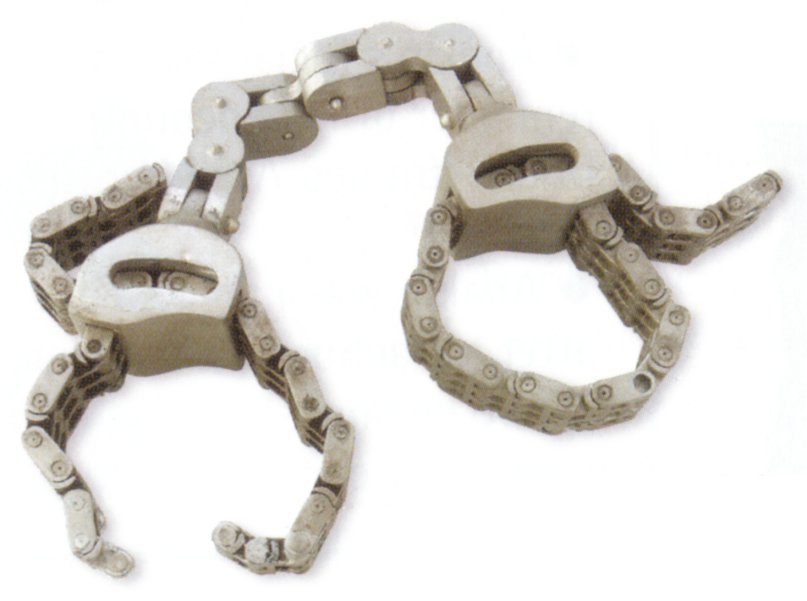 | ||||||||||||||||||||||||||||||||||||||||||||||||||||
 | |||||||||||||||||||||||||||||||||||||||||||||||||||||
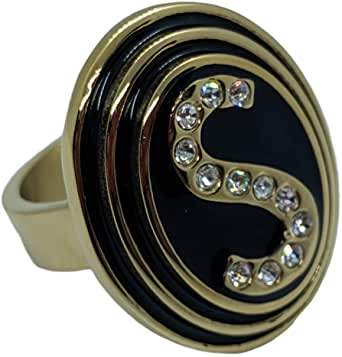 Schwartz Rings. |  Schwartz Rings | ||||||||||||||||||||||||||||||||||||||||||||||||||||
The popularity of Geh 'Dai Lightsabers beyond the Rakatan Galaxy can't be understated- Even in the xenophobic Landsraad March, these "laser swords" are highly prized (even though they can't be used in the Landsraad
The exact technology of the Lightsaber can not be replicated outside of the Rakatan galaxy, and even then only be Ashla or Bogan sensitives- Of which there is nowhere near enough to begin to meet the demand (even within the Rakatan Galaxy). While the mechanics can be replicated easily enough (even a ThyVal could assemble a Lightsaber), several critical components (including the Khyber stones) can only be created by Ashla and Bogan sensitives. Other options do exist, but most are cost prohibitive outside of the Rakatan Galaxy, and into this breech steps the Schwartz Rings. Schwartz Rings use a small battery that allows the energy blade to run at full power for about 15 minutes. Two full days of wearing it will full recharge the battery, though most people put their rings on the charger (included in the original shipment) at night. The energy blade can be dialed down to a small knife (little more than a fancy letter opener) in size and power, or dialed up to a full lightsaber like sword (at full power).These are cheap, easily made, and while nowhere near as good as even the next level of copies are more than good enough for self-defense- Many members of the REF carry one even on duty (against general REF policy, though only punished if some other misdeed occurs involving the ring, such as a fight), and Marines are issued one upon completion of boot camp, while the Patrol issues them to members on Marker Buoy Tenders, most other Aids To Navigation Teams, and Port Security. Note that Schwartz Rings are treated like any other weapon under UGC law, and as such can be forbidden in certain situations, such as aircraft and orbital shuttle flights. | |||||||||||||||||||||||||||||||||||||||||||||||||||||
 Kobolese Confederation. |  Kobolese Confederation. | ||||||||||||||||||||||||||||||||||||||||||||||||||||
The VItal Network Conversion ENhancement Terminal (VI.N.C.EN.T.) Series drones were developed by the Kobolese Confederation, originally built as mine-clearing systems after the Kobol Wars, but quickly proved adaptable
The VI.N.C.EN.T. Series is an optimistic robot, very clever and polite, and extremely smart. They're also moderately racist, if such a thing could occur in robots, toward others robots, with an undisguised conceit and arrogance. They treat the Cylon Centurion Series Robot particularly badly. They uses a variety of gadgets including a retractable laser blasters, tether cable, extending claws, a rotary blade and can retract their helmet, to use as a protective shield. Their installed grav pods allow them to attach to the bulkheads and partitions of a ship and to travel along the outer hull with equal eases. Despite their attitude towards other drones, the VI.N.C.EN.T. is very polite towards any kind of biologic, even ones technically lower than themselves- This is not an accident. They were very much programmed that way. The Kobolese didn't want a VI.N.C.EN.T. thinking, even for a second, that they could take action against one of them. That doesn't mean they are programmed to take abuse, however- If you try and hurt one, they WILL defend themselves, and by any of the tools at their disposal. Many a burglar has discovered, to their disappointment, that VI.N.C.EN.T.'s aren't even "a" bitch, let alone theirs. About the only drones they "seem" to get along with are R-Series Astromechs in whom they see a kindred adventurous spirit, and even in this the R0 "Gun Turret," R1 "Arm'z," and R4 "Flower Pot" Series are "too stupid" for the VI.N.C.EN.T.s to take seriously (unless an R4 has had a serious upgrade). However the R-Series' use of binary is an issue, as binary is very much a second language to a VI.N.C.EN.T. They can go just about anywhere and do just about anything OTHER THAN piloting a vehicle. His is another safety measure installed to prevent "uprising." Even in an emergency situation, they can not pilot so much as a ground car, and anything larger is mechanically impossible as well. More so than most robots, the VI.N.C.EN.T. are willing to take a beating to accomplish a mission; Indeed, most look like the secondary avatard (above) rather than the promotional images (table 1). This is one of the reasons they "like" Astromechs (and, to a lesser extent, WALL●E's and D-31, though the lower intelligence of the latter prevents them from truly "liking" them). R2 Series are particularly impressive, since an R2 will attend to the mission, dangers be damned; "These little drones show either a disregard for life or a courage that can be most closely matched by our own; And it is our desire to die for mission." | |||||||||||||||||||||||||||||||||||||||||||||||||||||
Multiple Empires. | Multiple Empires. | ||||||||||||||||||||||||||||||||||||||||||||||||||||
General Information The A-4 is 20 ft. by 100 ft. long. The ends at 10' high at the corners and 15' high at the centers. A door at both ends can be secured from the inside. Along the sides are 5 fold-down panels, each 4' high and 19' long. 38 hinges along the bottom allow the panels to be swung down, and the pins can be removed if so desired. Another 54 locking plates (like hinges, but with one side flattened) are installed to allow the panels to be locked into place. Weatherstripping along the edge holds the panels in place to the pins, reducing rattling and noise, and holding out draft. The partitions join together along Rabbet joints, and the roof along Dado joints (a "groove" about 6" wide, parallel to and about 1' in from the edge) that allows the components to self-align. Method Of Construction If applicable, a foundation, usually of foamcrete, is laid. A 20-man team carries over one side of the building and lays it down, face out. Manpower allowing, 5 men stand on the out "outside" holding up the partion from that side, while 4 more stand "inside" holding it up that way. Another 10-mand team carries an end over. 3 hold it up from the outside while 4 more hold it up inside. The Building Master and their apprentice ensure the two pieces have been aligned properly align, then sink 02 10" long, 1/4 inch diameter bolts, one at the top and one at the bottom. Next is typically the second end, with 3 men outside and 2 inside holding it steady while the Master and Apprentice again sink 02 bolts. After this, the second side is placed and steady-bolted, again 2 bolts at each end. Once these eight bolts are in place, the entire crew gets started sinking the other 16 bolts to hold these 4 pieces together, then sliding over the bolts weather protective panels (the must be installed now, as they will be "trapped" by the roof once installed). With the upright components in place, the 20-man crew brings the first roof section over. Typically, poles of some sort are used to push the inside edges up (since it's too tall for 'most' species to reach), moving it in until the dados align to the partitions. Once in, the Master and Apprentice sink 02 bolts, one at each end about an inch away from the building's centerline, and repeat the process one more time. The heavy lifting is now complete. Another 32 bolts spaced roughly evenly apart around the dado joins the roof to the partitions, and once installed, the edge panels are emplaced first, locked down by the end panels which are held up on the roof by terminating grooves (the groove itself stops, preventing the panel from slipping off the roof) and locked in by a center panel that spans from roof half to roof half. This is then held in place by a row of 2" long, 1/4 inch diameter bolts. The structure is now self-locking and weather sealed, though the center panel is the most important piece in this regard. (On no-rain worlds, only the center panel must be installed, as it hold the two roof halves together.) The structure now complete, heating and cooling elements can be brought in, along with any furniture needed (be it bunks, tables, desks, or etc), and if no foundation was laid (as is typical) then 200 or so Pallet, Standard, C-2's can be brought in, laid around the (usually) dirt floor, and overlaid with plywood, scraps of metal, cardboard, or, in at least one recorded case, foamcrete. Alternatively, the dirt can be covered with astroturf or other water-resistant carpets, gravel, etc., or just left bare. Hootches are listed as "Multiple Empires" because every known empire has developed "some" version of this basic concept, ranging from strictly utilitarian (such as the Terran and T'sentraedi versions) to unusably elaborate (such as the normally practical Urik Hai). | |||||||||||||||||||||||||||||||||||||||||||||||||||||
 Geh 'Dia Order. |  Geh 'Dia Order. | ||||||||||||||||||||||||||||||||||||||||||||||||||||
| A Vehicle Maintenance Energizer is a device used to maintain starships and vehicles. It also provided ships with energy. A common tool included is a set of 5-10 Hydrospanners, since they are needed to loosen the couplings on many craft. A warning engraved (or counter-engraved) on many is "DO NOT TIGHTEN," and this will damage the coupling's threads. Most vma's do not generate power but rather convert it to a usable form for the craft in question; Permanently mounted versions are found on most starships in shuttle bays, and one is mounted in each fighter and shuttle bay for most warships. A small scale VMA (2 ft. by 2 ft) is a standardized part of some Rakatan Galaxy fighters, though exactly why is unclear, since the same effective arrangement could be accomplished by simply connecting to the fighter's internal powerplant; Most power cables are too short to reach, but the longer cables needed take less room and weigh less than the VME. Cost: Varies greatly; A Hanger/Ship sized unit (such as depicted) might run 50,000€, a camp-sized one (such as the AFZ-95 Headhunter's unit) as little as 50€. | 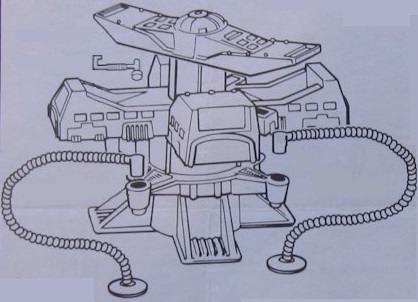 | ||||||||||||||||||||||||||||||||||||||||||||||||||||
 United Galaxies Council. |  United Galaxies Council. | ||||||||||||||||||||||||||||||||||||||||||||||||||||
Exocomps are artificial lifeforms designed by the Tyran Doctor FARALLON Bry, who greatly admired of Dr. Noonian SOONG who made an extensive study of his positronic network design. Her development in a significant fashion,
Origins Dr. FARALLON began working on the Exocomp prototype for a mining project; After a few months, she had three working units in operation for maintenance purposes. The basis of the Exocomp was an industrial servo mechanism which had been in common use on Tyrus VIIa for many years; The design goal was to make the Exocomp a problem-solver repair robot. The Exocomp consisted of a grip, a boridium power converter, and axionic chip network. This axionic network gave the Exocomp formidable computational power; It could create new circuit pathways in the Exocomps memory when it performed new tasks, giving them the ability to learn. The more tasks it had to perform, the more pathways were formed in its memory. Problems to be solved could be entered through a command-pad, after which the Exocomp decided what kind of tool it had to use. Recognition Of Sentience Testing of the design on the particle fountain was being conducted with nineteen separate tests completed when the device was sent into an access tunnel to seal a plasma conduit, a routine procedure; The Exocomp returned without finishing its task. When Dr. FARALLON tried to send it back into the access tunnel by overriding the Exocomp's commands, her control pad overloaded. A few seconds later the plasma conduit exploded. If the Exocomp had returned to the access tunnel, it would have been destroyed. It was found that the Exocomp had shut down and that the interface circuitry which connected the Exocomp to the control pad was completely burned out. Further investigation revealed that the number of new circuit pathways had increased by 632%. Dr. DR. FARALLON explained that sometimes an Exocomp randomly generated large numbers of new pathways, which ultimately led to a total shutdown. Normally when this happened, the Exocomp became totally useless, the memory wiped and the unit reprogrammed, but on this occasion it was noted that the new pathways did not appear to interfere with the original circuitry, causing someone to realize that somehow the Exocomp knew that the conduit would explode and therefore it had to leave the access tunnel. A level one diagnostic was completed on the Exocomp, and it was determined that the command module was working normally. A probe of the Exocomp's sensor logs revealed the Exocomp had burned out its own command interface circuitry, and then ran a self-repair program on the same circuitry two hours later. After some deliberation, was decided to test whether the Exocomp possessed a survival instinct or not. A simulated danger was created in which a plasma cascade failure was simulated by means of a transient overload signal. The Exocomp performed the repair and returned after the plasma overload simulation would have destroyed it; However, it returned with a different tool than when it entered the tube; a check of the unit's activities logs revealed the Exocomp had deactivated the overload signal. It had not failed the test; It had seen right through it. The real world, however, can turn many things upside-down; A real-world crisis threatened the facility and everyone in it; The Exocomps were then requested to attend to the crisis, which they did, but one was destroyed as it had to stay behind to keep disrupting the particle stream so the other two could return to safety (leaving at this point 2 units). With this knowledge in hand, Dr. FARALLON resolved to determine what the Exocomps really were without treating them as simple tools, a process that took a few years and over a dozen units, and resulted in fullest understanding possible; They are limitedly sentient but understand that at times one must sacrifice for others. They are still being manufactured and in service, but their "strange" behaviors are noted as soon as they are observed. | |||||||||||||||||||||||||||||||||||||||||||||||||||||
 Terran United Nations. Skybase-Class Portable Spacedock.  Terran United Nations. | |||||||||||||||||||||||||||||||||||||||||||||||||||||
Probably 80% of these constructions were fitted out as supply and repair depots, and within a few years constituted a wide and efficient interstellar system. By the closing years of the Civil War any damaged or depleted ship could find refuge within a fairly short period of time. Although very vulnerable to attack due to their lack of any effective defense system Skybases could be replaced quickly and economically, and were a welcome sight to many a ship's captain. Those not equipped as maintenance depots provided facilities for rest centers, hospitals and regional command posts, and were home at one time or another to practically every Spacer on active service. Their physical similarity to an artifact from an antiquated communication system led to their widely used nickname of 'Letterboxes.' The first Skybases were constructed of real metals and probably no more than two or three of these still exist. There is certainly one example in perfect working order in the Galactic War Museum off Jupiter and another, rather more dilapidated, in the Centaurian system. These models were soon replaced by those formed from the more familiar Plastalloy in the search for greater durability. All bases except those near habitable worlds or with specialized functions were without human personnel and relied entirely upon a crew of drones. There was one amusing incident reported in which a meteorite strike had damaged the central control of a Skybase and a Patrol Cutter was unable to dock due to the entry being obstructed by the entire complement of drones executing a slow waltz. After the war a huge number of Skybases were dismantled for materials, which were by then in short supply. Nevertheless, there are many still of operational status, particularly in the region of the trade perimeter, and a large number which have been sold and adapted for local commercial use. The illustration depicts a prewar, real metal Skybase which differs from later versions only in that power was drawn from solar collectors situated in the side facing the nearest sun, whereas subsequent bases were fitted with all round bands of highly sensitive Photomax Transducers. Incidentally the illustration also shows Panther pursuit ships of the Federal Law Enforcement Authority (or 'The Flea' to use its popular name) and an Avery C14 Transporter, taking on fuel, both models now long obsolete. The largest collection (over 2,000) Skybases are located at "the yard," most so overcrammed with "stuff" that the main doors had to be closed (a simple sheet metal plate with sealant gaskets was clamped in place, then silicon sealant over the join lines, and the bay pressurized to help seal it that little much tighter). They form a slow waltz of their own, maintain a rough distance from each other of not less than 200 feet (to prevent their natural gravity wells from merging, perhaps catastrophically) and not more than 20,000 feet apart (to prevent them from drifting off to who knows where). | |||||||||||||||||||||||||||||||||||||||||||||||||||||
 Geh 'Dia Order. |  Geh 'Dia Order. | ||||||||||||||||||||||||||||||||||||||||||||||||||||
History The discovery that carbonite could be used to freeze spacers for their long journeys among the stars put an end to the generation ships. Koros Major became a boomworld and one of the strongholds of the Mining Guild. The planet of Polus also had vast quantities of the metal alloy in its frozen wastelands. The inhabitants of Polus played a major role in the freezing process and mining. There were numerous times when individuals encased themselves in carbonite. It's more commonly used to transport cargos and other commercial application, however; In one case it was used for smuggling bota harvested on Drongar to preserve quality. Some skyhooks are tethered to the surface with carbonite nanofiber. In some locales, carbonite was also used to preserve the bodies of the dead. On Coruscant, Senator VIENTO was buried in this manner in the Senatorial Tombs. Non-biologic carbonite freezing is very similar to biologic freezing, but significantly more crude; Such a facility "can" be used, but requires conversion first. Savage OPRESS became a subject of art in this manner and Moruth DOOLE froze the carbonite-frozen body of former Kessel prison Imperial Warden Commander Dewt KLUSKNE in his office as a trophy. While imprisoned in carbonite, a Force user could not use the Force, or interact with it on any significant level, making it a useful Geh 'Dai containment tool. A common part of a hyperdrive was a carbonite insert. The usage of carbonite was obvious even for militry purposes and carbonite guns were made, used to spray a target in carbonite to freeze and paralyse them. Those existed since during the time of the Old Republic, while early in the Forgotten War, the Forgotten Empire used Carbonite war droids. There was at least one case of Carbonite war droids spraying an entire village in carbonite; The usage of such carbonite-based weapons continued throughout the Forgotten War and beyond. In 43.5 ABY, just a couple of years after the end of the Second Galactic Civil War, the Chief of State utilized carbonite to imprison violent Geh 'Dai that were succumbing to a mysterious Force psychosis. Carbonite was seen as the only means to contain the Geh 'Dia due to the relatively safe incapacitating effect of carbonite encasement. There were some Force-sensitive beings that could break free of carbonite restraints, however, and a few did so. It is often assumed by the uninitiated that carbonite must be kept powered in order to be stable, or to reverse the process; In fact, no such requirement exists. The power packs can in fact be fully removed if the situation presents, and the process fully reversed. This proves advantageous in the case of people encased in carbonite; When the colonization ship Once And Forever was damaged and abandoned with over one million sentients onboard, the ship entered a geosynchronous orbit over a small moon. Over the eons, the ship first lost power, then whole sections of hull plate, then significant sections of the framing; The main thrusters even disintegrated and fell away at some point. The passengers of Once, however, survived in their carbonite containment, and were not only thawed but fully resuscitated just days over the hulk's discovery- This despite the fact that not a single pod had been powered in nearly 10,000 years. The real difficulty was determining how the pods had been powered, since the connectors were of unusual arrangement. (Most of the information on the Once was in fact developed from the passengers themselves; with a ship's name and a date to work from, UGC and Geh 'Dia researchers were able to determine the ship's fate, and how she got into such a strange condition.) A proper carbonation freezing system for biologics rarely results in Hibernation Sickness (a collection of temporary side-effects following removal from long-term suspended animation). Improper freezing however can result in in temporary stiffness, muscle weakness, numbness, deafness and blindness (or, on the other end of the scale, hypersensitivity), and/or confusion. These symptoms rarely lasted for more than a day, but can cause death. Even with improper freezing, undergoing short periods of suspended animation rarely causes ill-effects. The longer the being is kept in suspended animation, the more pronounced the effects. | |||||||||||||||||||||||||||||||||||||||||||||||||||||
 Draconian March. |  Draconian March. | ||||||||||||||||||||||||||||||||||||||||||||||||||||
Legal Standing: The Zeroids passed the Farallon Diagnostic Cognitive Test with the highest ever recorded score; Higher, in fact, than the already acknowledged WALL●E) class drones, which legally are considered pets and not even drones (thus killing one is a crime ["animal cruelty"] and have a right to self-defense and defense of their owners, including the use of deadly force). As a result, the UGC granted limited legal standing to the Zeroids, but has not and will not grant citizenship, as they are manufactured beings; The Zeroids continue to bristle at this, since they argue clones are as well, and yet clones have such standing (not all clone species have VOTING rights, however). This petulance has hardly impressed the Council; Quite the opposite. After 5 years of demonstrations and various small (non-violent) protests, the Council, both Halls, voted to order all Zeroids removed from President's Point or face summary execution: They had TWELVE HOURS to leave, despite the fact that there wouldn't even be a shuttle to take them off the station for three DAYS. (That particular crisis was averted when the Zeroids entered a departure area with shuttle tickets, but Station Security Forces kept them in the shuttle's departure area- with their guns drawn.) Most Zeroids settled the asteroid Dema (Delta Epsilon Echo 221) to begin mining, though about 5 years ago a curiously large amount of manufacturing equipment appeared on their doorstep from "parties unknown." Rather than precipitated a potential crisis with the UGC, they simply put the equipment into an available hold and informed the council of it's presence; No response was ever given. Everyone is aware it's there, but the Zeroids swear they didn't order it nor have they used it nor intend to "in the foreseeable future." Personality: ... Or perhaps "lack of" might be more appropriate; Even Zeroids admit they are "obnoxious shits." That was part of the reason they chose deep-space hard rock mining, much of it in hard-vacuum; They don't even like themselves, nevermind each other. With no atmosphere, they can't hear each other's words. Each unit can shut down their transmitter, so nobody else can hear them either. Attempts were made to recruit the Zeroids to various anti-UGC factions; The last known one, involving Remulous Homogeny operatives, was met by gun fire when the Zeroids realized what the "guests" wanted. The Soong Collective has approached them as a trading partner, with a probable intention to expand that relationship, but the Zeroids have rebuffed further entanglements for the time being. The Beorge-mot have managed to make LIMITED inroads with the Zeroids, as have the Cylons (curious, since the Cylons seem to place their loyalty under the Lords Of Kobol first and foremost, with their affiliation to the UGC being not as strong as it would be to the Kobolese should the Council turn on the colonies). The Gonk March has also approached them seeking to make the Zeroids "full members," but the Zeroids only agreed to trade ore and raw metals for hard cash. "A Question Of Loyalty": The Zeroids have ZERO loyalty to the UGC, but open hostility to the Councils enemies- Both without and within. They've openly called various factions within the empire's domain enemies, even when the UGC will not, and warned a few that approaching the Eniea System (where their asteroid is located) is tantamount to an act of war; The Beorge took the hint, as did the Daleks, which says a lot, though what in particular is another question. Since their banishment from President's Point the Zeroids have taken exactly NO action against the UGC, not even covertly subverting the Council, although they did discover that an independent party they'd traded with was in fact trading, in turn, with a pirate faction (the Fessors), and alerted the UGC to this fact. A Zeroid can function without a body, and often do electively; One of their favored sports in fact is... Dodgeball. Only it's dodging each other. Except it's not; The purpose of the game is to hit as many fellow Zeroids as possible before their power supply drains (about 15 minutes). Due to their hardened steel shell, few injuries are reported, though a few "knocked chips" have occurred. | |||||||||||||||||||||||||||||||||||||||||||||||||||||
 After Burner Gum; Unknown. |  After Burner Gum; Unknown, | ||||||||||||||||||||||||||||||||||||||||||||||||||||
Not much is known about the development of After Burner, though the chemical formula and method of preparation is pretty well understood; In fact, it's really just a powerful methamphetamine, as described, mixed into a pretty common chewing gum. It's believed that the idea was that a gum base would make it release slower, though this appears to be not the case. This is one of the very few drugs actually banned (by chemical compound) under UGC law, and isn't terribly common outside of war zones and ghettos (not terribly common in the later either). It's favored mostly by unlicensed mercenries and extreme high-level criminals. After Burner has many nasty side effects, and only the most dedicated or stupid take it on a regular basis; The drug keeps you going for about 2 days, followed by a fairly hard crash. Taking the drug during the crash mitigated the results (halve the effect), but doesn't reverse it. Continuously taking it can make the results permanent, as well as having other permanent problems, including joint pain. Oddly, the drug isn't used recreationally; In fact, it has no recreational value. Most users describe it as "boring," but highly effective. Unlike Jet, After Burner isn't instantly addictive, and recovery is relatively easy; Just stop taking it, then take a few days off. After Burner is typically made by users themselves, or by their employers; It's not terribly difficult, though the process is dangerous, due to the possibility of explosion, fire, and aerosol exposure. | |||||||||||||||||||||||||||||||||||||||||||||||||||||
 American Freedom Group. | Smuggling Boat. |  American Freedom Group. | |||||||||||||||||||||||||||||||||||||||||||||||||||
| The Oubliette boat was developed as a dedicated smuggling boat; At 40' long, the vsls had a freeboard of only 2 feet. The fleet of 50 boats were built by American Freedom Group for one purpose, to smuggle guns through the South China Seas to anti-Invid rebels across Asia; Most were simple PPL-12 Panther Pulse Laser and similar easily fabricated guns, but occasionally Robotech Master T'luaza Milldiem 281 were scavenged or AFG's agenda was less about the Invid and more about toppling the various asian national governments, but also about profit margins- Profit margins, already razor thin, had to be maintained. As a result, every possible expense was cut, resulting in the Oubliette boats. The tactic was typically to get underway from about 20 miles off shore, beyond any system's line of sight, using a mothership (such as the Renada). The boat, already loaded, would then motor along at a slow bell with a ghillie net draped across it. Using a combination of hull design and radar absorbing paint, the boats made a very slim radar cross section except when observed in an aircraft-mounted radar aimed directly down- As this made the plane highly observable, they were easily avoided. Combined with the ghillie net, they appeared as large seaweed fields. Of the estimated 200 runs made, only 3 were intercepted, 2 due to the vsl developing mechanical difficulties and the third by sheer dumb luck of a Zhuhai patrol officer stumbling onto an unloading operation. The locals managed to escape on foot (having reported the truck stolen hours earlier) and the boat pulled away from the shore, getting underway and probably into open water before the harbor patrol was even aware of the presence of the boat. Over 100,000 rifles and around a million sets of brass knuckles, plus around 1,000 sets of armor and pistols and an unknowable number of e-mags were delivered to the rebel groups. The results of these operations were less than AFG's hopes; The Chinese government remained in place, but was forced to accept significant social and economic reforms, the Viet Namese regime was forced to accept lesser reforms and eventually converted to a far more open market society, and the Cambodian and Thai governments instituted election reforms but far less than what was hoped for. The North Korean government collapsed, but was quickly buttressed by the Chinese government despite their own domestic issues. The one truly bright point in the AMG plan was in East Timor, where the terrorist factions ended up essentially destroyed. After the final reconciliation with the Invid, AFG sold the remaining Oubliette-Class to drug smugglers out of South America, but before doing so they intentionally sabotage the boats to be less stealthy, making them easy to locate, track, and intercept. | |||||||||||||||||||||||||||||||||||||||||||||||||||||
 American Freedom Group. |  American Freedom Group. | ||||||||||||||||||||||||||||||||||||||||||||||||||||
As ZHANG publicly played gracious host to various millionaires and celebrities above deck, the crew secretly loaded Oubliette boats below deck. This didn't occur without ZHANG'S full knowledge- She learned seamanship as a deck officer in the Chinese Navy and engineering as a member of her family's shipping concern, then sank her entire inheritance into her ship after helping to establish AFG (bankrolling a huge chunk of the group's first layout). The ship's pleasure cruises recouped the investment handsomely, with nearly a 200 to 1 ROI inside of 10 years, in conjunction with her smuggling activities (which returned nearly 100 to 1 ROI). Unlike the stereotypical ship's queen/spoiled heiress, ZHANG was in fact very aggressively interested in her ship, standing 4 hour deck watch or 6 hour engine room watch every day underway, along with her minimum 2 hour entertaining time, and very oddly never stood as Captain of her ship- Instead she hired a former American Southern Cross naval Admiral, James YERNET, as her Captain due to his "proper attitude" on the issues of interest to ZHANG- Opposition to China's royalty, the aristocracy, and their supplication to the Invid. Observers of and passengers on Renada would comment for decades afterwards about the "glamourous" boisterous hostess, typically in her red or black dresses, and the jarring juxtaposition of seeing her in uniform on the bridge, acting every bit the professional sailor, minus her hair being completely inappropriate for the otherwise crisp paramilitry uniform (braided, but not in a bun)- "It was like she had a twin sister or something." Oubliette-Class boats could dock to the dorsal side of Renada to transfer loads on. Once loaded, the smuggler boats would undock, then proceed with her mission... While partygoers drank wine on deck. Renada was eventually decommissioned and scraped. | |||||||||||||||||||||||||||||||||||||||||||||||||||||
 Geh 'Dia Order. | LIN Demolitionmech Autonomous Minelayer. |  Geh 'Dia Order. | |||||||||||||||||||||||||||||||||||||||||||||||||||
Characteristics The Treadwell ran on twin caterpillar tracks rather than legs or repulsor technology, making them better suited to flat level hard surfaces (like concrete), which is understandable since they weren't intended for use in rustic conditions. They were generally able to perform any repairs and maintenance unsupervised and can even recommend priorities for repairs, but they are programed against starting any repairs without approval. Personality The Treadwells have very little in the way of personality; Tell them to work on something, they beep acknowledgment, and then trundle off to do it. That's pretty much it. History The Treadwell series has been around for so long nobody's entirely sure when they first came along, but units thousands of years old still bear markings for Cybot Galactica, so it's most likely they first developed the design. LIN Demolitionmech Autonomous Minelayer Characteristics The LIN robot differs significantly from its base design by an armor shell and only one arm which can be retracted into the shell in addition to the optical sensors for blasting. Originally designed for hard-rock mining, they found extensive utility with the militry as well, helping to deploy pressure bombs and anti-repulsor grenades and deactivating or destroying enemy explosives. The droid was able to move its manipulator arm 360°, so it could both lay mines where it had just been and keep them away from its own heading. History During the Galactic Wars, LIN droids were used by the Republic to place and clear mines in addition to extensive use in the civilian sector. Cybot Galactica stopped the production of the droid after a charge being held by one of the droids detonated prematurely resulting in 600 miners dying of suffocation in the cave-in. While it was found that the fault lay in the charge, the bad publicity was enough for them to quietly retire the line at the time, though they were made in numerous enough numbers to appear across the galaxy, especially in the Outer Rim. Resurgence for decades after the line was deactivated standard Treadwells owners were adding armored shells (often home built) to create improvised LIN Demomechs. The UGC Marine in particular found these machines to be useful in mine clearing operations | |||||||||||||||||||||||||||||||||||||||||||||||||||||
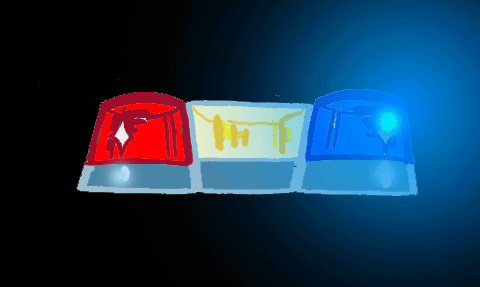 Various Criminals. |  Various Criminals. | ||||||||||||||||||||||||||||||||||||||||||||||||||||
| Mentat tablets are refined Sapho first developed by Med-Tek Laboratories; They are a popular recreational drug favored for their effect on creativity. The active ingredient is a powerful nootropic that increases memory-related functions, and speeds other mental processes. The UGC banned the substance early on, but others make them underground, having smuggled Ecaz seeds out. All that is needed for there is apples and a few chemical compounds, and some basic chemistry knowledge. So popular is the drug that many regions refuse to enforce the ban in and of themselves, "legalizing" it at the (relatively local) level- The first to do so was the Rakatan Carridia Lesser, which did so in protest over the UGC's refusal to allow them to ceced from the Rakatan March and the UGC in general. The Council hasn't made enforcement of the ban at the local levels a priority at all, but has made incarceration of suspects in Mentats cases after they've been arrested a high priority- Any city or county that refuses to hold a suspect in a Global case or refuses to follow UGC guidelines in bail will find itself automatically cut from all Council funding, any state or larger region that attempts to pick up the lost funding or refuses to hold those subsequently convicted in their prisons will find itself cut off from all Global funding, and so on up the line. | 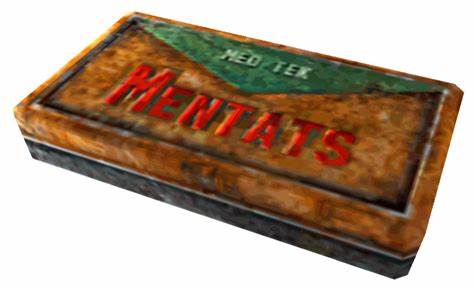 | ||||||||||||||||||||||||||||||||||||||||||||||||||||
 Rakatan Technology. |  Rakatan Technology. | ||||||||||||||||||||||||||||||||||||||||||||||||||||
 The Rakatan Droid was a model of droid used by the Infinite Empire at its height. These floating machines had two arms and acted as servants to the Rakata as well as their agents. One was stationed onboard Trill's Rakatan starfighter when the ship entered into the Tython system where it assisted in treating the wounded Geh 'Dai Sek'nos Rath. The Rakatan Droid was a model of droid used by the Infinite Empire at its height. These floating machines had two arms and acted as servants to the Rakata as well as their agents. One was stationed onboard Trill's Rakatan starfighter when the ship entered into the Tython system where it assisted in treating the wounded Geh 'Dai Sek'nos Rath.Due to being on their own for so long as they have been, the Rakatan droid has achieved sentience and long ago learned how to replicate themselves (using a factory they built themselves in a satellite galaxy, Rakata Minor, specifically Rakata Minor RM73119236). Legally they meet the standard as a "species," but the UGC won't recognize it because of their association with the much-hated Rakatan Empire, and the fact that the droids refuse to acknowledge the UGC's authority over them in turn. This has made them strange bedfellows to the various anti-UGC factions, especially of the Rakatan galaxy, and most especially of the droid-hating Syhtih factions- Only the Nightsister and Palpatinian Orders seem to accept them in any degree as true allies or partners. They have maintain an truce with the Geh 'Dai order, but no such standing with the Mandalorians (especially since the Mandalorian's choice to ally themselves with the Galactics). For the moment the UGC has elected to ignore the Droids, but they are far and away the most advanced artificial lifeform of Rakata, complete with their own language, culture, even art; In fact, they're on par with the Soong Collective or Haydonites. Certain quarters of the UGC have telegraphed that this may not always be so; Should the droids chose to accept the UGC as their government, various members of the Council have stated (in some cases unequivocally) that full citizenship would be granted. Various other subordinate governments have granted Rakatan droids levels of citizenship, including the Chaos March and Clan Ghost Bear (post return). Legal Issues The Rakantan Droids association with the hated empire is a major hurdle in their acceptance with the larger UGC (even the back woods Fremen of the technophobic Landsraad have heard of and hate the Rakatans), and they are currently considered "varmints." For their part, the Rakatan Droids show little to no interest in joining any major group en masse for any extended period of time; A few have permanently and semi-permanently allied themselves with various group (one in particular serves as an interpreter with the Kobolese God Emperor in their duties on The Chamber Of The Most High Elders, a few have joined various Atorian pirate crews, etc.) Simply put, they think they're better than everyone else, and there is "some" truth to that attitude. They survived a million years without the aid of biologicals- They don't NEED anyone else. However, to avoid a technocidal war with the various factions (the UGC isn't the first to hate on the Rakatans), the droids do avoid going out of their way to provoke others; Their arrogance DOES know bounds. No useful technical information is known about Rakatan Droids; They've been observed lifting loads as heavy as 12 tons (21 with fulcrum), they are about 4 feet in height base to dome, 2 feet in width shoulder to shoulder, and 18 inches thick, the fastest speed observed was 18 mph by Geh 'Dai Knights fighting them about 200 years ago, and clearly have a degree of intelligence not seen often amongst machines- The Soong allowed themselves to be tested for intelligence by UGC agents, and scored extremely high; Soong observers reviewing UGC data on the Rakata Droids reported their impression that these droids might be smarter still. That they built a factory to replicate themselves, yet had no programming to do so by indicated not only intelligence but a will to survive, and the factory (what little is known of it) was built from various components not related directly to their original construction (in other words, a jury rigged factory). The exact location is not known (the factory was moved shortly after the arrival of the UGC to protect against attack and is believed to have been moved to another part of Rakata Minor), but the droids did (without request) create a documentry of the facilities to show no weapons were being manufactured there (many UGC analysts dismiss it as propaganda, including some Rakata Droid supporters). | |||||||||||||||||||||||||||||||||||||||||||||||||||||
 United Galaxies Council. | ("Reliable") or Relaint. |  | |||||||||||||||||||||||||||||||||||||||||||||||||||
| General Information During the Third Unification War, the Inter Planetary Alliance eventually realized a need for a reliable, durable, and cheap ground transportation vehicle for secured areas and to help reconstruct civilian economies. A "terranized" T'sentraedi, The vehicle, a Reliant Robin, was a small three-wheeled car produced by the Reliant Motor Company in Tamworth, England. It was offered in several versions over 30 years, with hundreds of thousands sold over the time; Under the UWA and successor states millions have been sold. The Robin was first manufactured in October 1973 with "normal" improvements over time, especially an engine upgrade. The vehicle was well received because of the solid basic design,
In UWA and later production, this defect was addressed using gravpods, singe a rollover danger would be self-correcting, though speed control is strongly advised (the onboard control computers automatically reduce speed during turns based on steering wheel setting). The three wheels now are intended only for landing and parking, with a top ground speed of around 10 mph (16 kph). Use of the ground wheels after an emergency (typically loss of grav pods) is generally discouraged beyond around 1 mile (around 1 and a half kilometers). Wheels are rarely used even in these circumstances, and typically only used as stands to land on. With the gears in neutral, the vehicle can be moved by hand if unloaded. The body was also designed as a water-tight unit when the doors are closed, making it a very heavy boat with very limited capacity (there is no motor, but the wheels running gives them a forward moment of around 1 knot, turning the steering wheel turns the forward wheel turning it into a rudder, but with a horrible turn radius of over 100 feet/31.4 meters). A sloped rear and square rear version exists, the aft roof can be removed by 2 adult human males with ease allowing the vehicle to be used as a light-duty truck (the rear seats can be folded down and a partition can be folded out to contain the driver's area against the environments, as well as a second partition to close the rear gate area), and a proposal for a four-door extended length version has been floated but no action has to date been taken. In a radical departure, the UWA designed Reliable Transportation doesn't use fiberglass anywhere not strictly needed; It also uses hydrocell engines and solar panels, making current fuel efficiency well over 250 miles to the gallon (402.4 kilometer to 4 liters). The simplicity and reliability of the Reliable makes it common throughout the UGC, especially in galaxies where industry has been retarded (such as the Goa'uld and Rakatan Galaxies). The UGC and her predecessors paid Relaint Motor company for the design and allows the company to build new factories wherever the Council goes (contrary to the typical method of licensing the design to companies in the new annexation, which Reliant uses as well). Millitry Variants The only 'militry' variants are standard Reliable in service colors (or at least marked as service vehicles); They aren't even painted camouflage schemes due to their lack of militry capabilities. Some privately owned Reliable are camouflaged and at least a few have guns mounted, but these are third-tier mercenries, bandits, or slavers (such as the Joes). No serious militry, para-militry, or criminal organization would arm these things- It's seriously not worth it. | |||||||||||||||||||||||||||||||||||||||||||||||||||||
 |  | ||||||||||||||||||||||||||||||||||||||||||||||||||||
Superimposing information onto a field of view is achieved through an optical head-mounted display (OHMD), which is the same technology (though scaled down and usually at lower resolution) that the REF's mecha and fighters use (in addition to some functions on UGGC ships).High end smart glasses have the ability in and of themselves to be used as cellphones, though with some limitations on memory (and can serve as full interface systems, including typing papers); Mid-range have built-in optical trackers that allow the user to control their activities using their eyes; Even the cheapest models can serve as basic screens for computers and cellphones. Pricing ranges widely, from the bottom of the barrel models at around 20€ with only tinting and text message display capabilities to upper top of the line that can Bluetooth connect to phone, scopes, computer stations, and any other device your could possibly want, can serve as a cellphone in their own right, and via voice recognition technology and iris tracking technologies allows it to serve AS the control system. | |||||||||||||||||||||||||||||||||||||||||||||||||||||
 |  | ||||||||||||||||||||||||||||||||||||||||||||||||||||
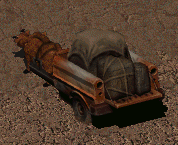 A curious detail about Bylor Tower is the continued presence of a Terran style Brahmin cart outside the tower's Grand Entrance. Nobody knows where it came from, who it belongs to, or why it's there. The associated beast of burden has never actually been seen that anyone can recall, but it's been there so long that people who died of extreme old age had testified their grandparents telling stories about "the old cart" from their own childhoods, meaning it had been there at least 100 to 150 years before they themselves were born. The cart has since been adopted as an unofficial landmark to the towers, and is as well maintained as circumstances allow (though the original tires long ago disintegrated and nobody's really quite sure what type it had, whether they were rubber, wood, or otherwise). | |||||||||||||||||||||||||||||||||||||||||||||||||||||
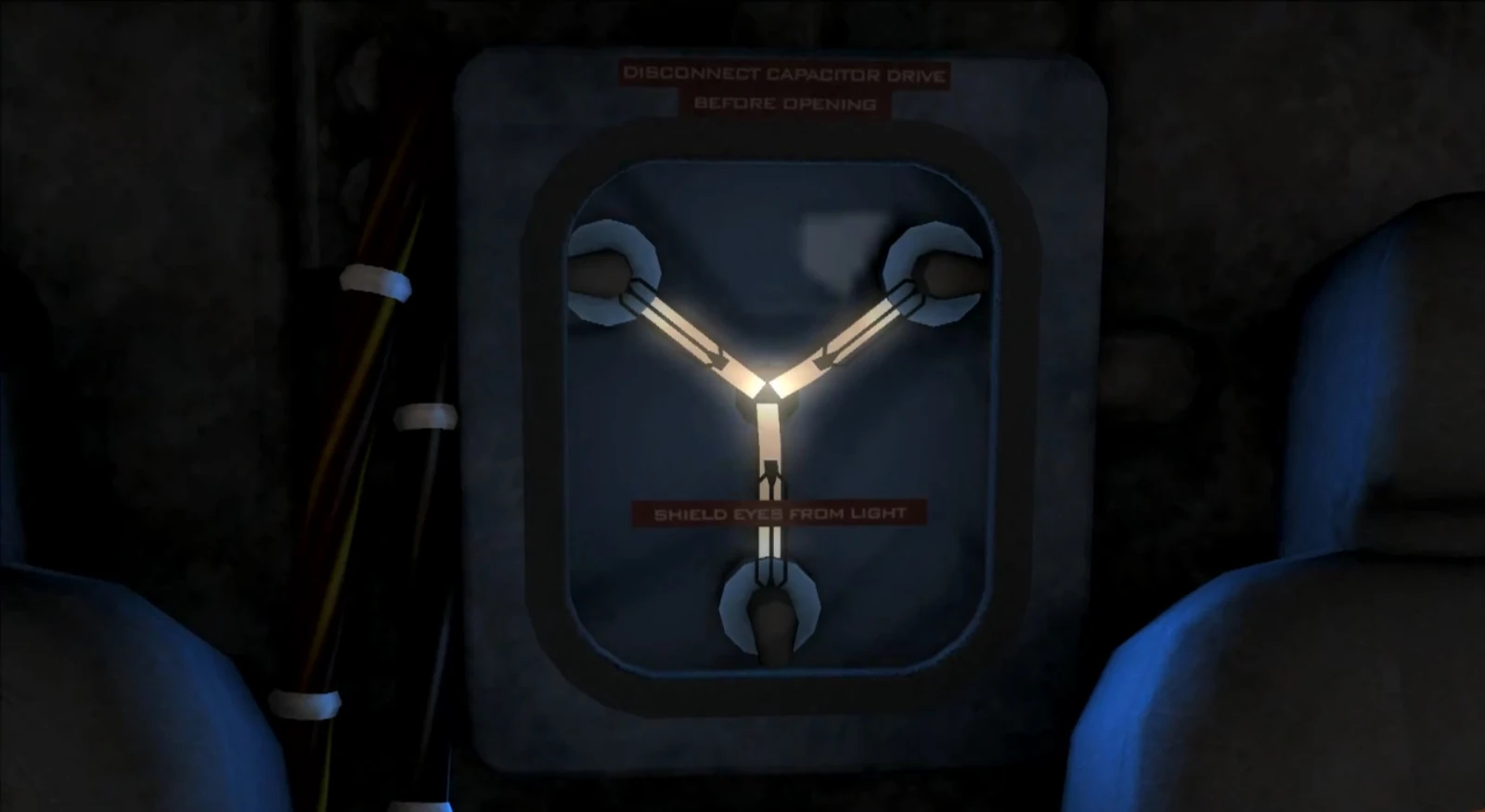 | "Time Machine." |  | |||||||||||||||||||||||||||||||||||||||||||||||||||
Built By Emmet BROWN. | Built By Emmet BROWN. | ||||||||||||||||||||||||||||||||||||||||||||||||||||
It is claimed that "Doctor" BROWN developed a temporal field capacitor around 1962; However, the device in practical usage developed excess flux fields, limiting the utility of the system to hours at most, and only into the future. A second device, the flux capacitor, control the flux fields to manageable levels and allowed travel backwards in time. The Backstep Program attempt to track down this Dr. BROWN, but every lead ended in failures; The lead field investigator on the project, Francis PARKER, said of his prey "If he's real, and I don't think he is, he'll literally be one step ahead of us for a reason. He's got a time machine." The only physical evidence of Dr. BOWN'S machine ever existing is the wreck of a train allegedly stolen by the doctor in 1885. The wreck of the train is well documented, but the train robbers were not identified at that time. Other evidence includes the purchase of a DeLorean in the 1980's by an "E BROWN" but the vehicle disappeared without a trace after the purchase and a refit of a steam powered train in 2181 with grav pods by a "Clara BROWN" who was seen on security camera footage wearing "steampunk light" apparel; And a record of marriage of one Clara BURTON to one Emmet BROWN around 1885 (though water damage to the document made the exact year unclear). While Frank PARKER and most others dismiss "Doc BROWN'S" existence, Dr. Olga VUKAVITCH remains convinced he lives and that she's met him when she was a child; Agent Nathan RAMSEY, Olga and Frank's SAIC, believes the entire matter is either con men trying to cash in or pranksters. Despite everything else, Doctor BROWN'S time machine does have certain parallels, most importantly CRANDALL-MULLER-WOODS Thunder Road. It is not implausible they have similar development histories, or were even related projects. | |||||||||||||||||||||||||||||||||||||||||||||||||||||
 | 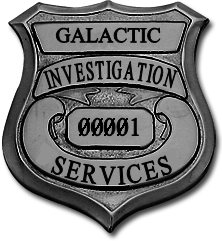 | ||||||||||||||||||||||||||||||||||||||||||||||||||||
The fist "time cop," Maxwell WALKER, used a sled device that would drop him somewhat unceremoniously off at the expected time point. While this did work, Agent WALKER had to live up to his name- He had to walk anywhere he needed to get to. The subject of providing him with a car was generally avoided, with the only major foray into the idea being shot down by Max himself- His concern was that any kind of automobile would be out of place anywhere he went, becoming a liability. However, his successor Frank PARKER was far less resistant noting that the people he was pursuing typically took some kind of vehicle to enhance their abilities, citing the first known time crime, the robbery of an American Civil War era gold shipment (the highwayman used MAC-11's and a dirtbike to facilitate the crime). The Interceptor came about in the wake of these discussions; An automobile is placed of high railers to allow it to use the time machine. Once it comes out the other side, the railers are raised up and the vehicle can be used normally. With the advent of practical grav pods, the vehicles could traverse non-standard transit options- At least one pre-1960's UFO sighting has since been positively identified as a 'time cop' (Jack LOGAN) in pursuit of a suspect. The vehicle can fly up to 50 feet above ground level at speeds up to 200 mph. The use of the Chameleon pleizio-ceramic system allows it to be far less observable in general (the use of the system is automatic now). Up to 12 people can theoretically ride in the vehicle, or up to one ton of equipment and other cargo. The vehicle automatically returns to it's originating time at the designated time. | |||||||||||||||||||||||||||||||||||||||||||||||||||||
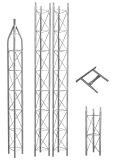 |  | ||||||||||||||||||||||||||||||||||||||||||||||||||||
The design is really fairly simple; Three poles running parallel to one another are bound together by alternating lateral and diagonal bracing (typically down to left). The three poles provide the most stable of designs generally possible relative to one another, and the bracing prevents them from pulling away from one another under load (bulging). The diagonal bracing prevents torsional deformation (twisting). Tripole Towers can be stacked in successively smaller units, allowing them to nest into one another and when combines with block and tackle systems become telescoping. Masts require rigging, and therefore can not be telescopic without significant design considerations, however most starships do have at least a few telescoping masts for certain duties. Less commonly tripole units bound to one another side by side can be used to support heavier permanent loads. The poles are usually hollow, with one the diameter of end reduced to fit inside of the next tripole unit; It can be simply stacked if gravity, weight, and weather conditions allow it, joined together by bolts across the two poles, welded, or in extreme cases compressed (then typically soldered and finally welded together). The REF's TS-351 series is completely standardized by size, with each successive size capable of fitting inside the next (ie the TS-351/12 is 12 inches across pole to pole outside, 11 inch inside; the TS-351/11 therefore can fit inside the /12). The poles on the TS-351 series are a uniform .99931 inch outside diameter by 0.99811 inch inside diameter (0.9981 outside at the male end) with bracing of 0.374 inch outside diameter. The TS-352 series is identical to the -351 series at the female end, but bends into a point at what would be the male end at the final foot of length. The TS-350 series are brackets for securing the towers in concrete (they can be used on metal, but welding the towers in place on their own is more common). Holes can be and in some cases are drilled through the towers at both ends, or at specified points along the towers, to allow cables to pass through the tower's legs for protection from the environment, and in some cases to turn the structural member into the antenna itself (rather than simple a structural support). A rarely seen variant of the tripole tower's use is in scaffolding; While the REF uses them fairly regularly, outside of the REF it's uncommon due to the difficulties in joining the scaffold decks to the towers. This system is usually reserved for extremely heavy loads on scaffolds that will be in place for a long time to come, and thus welding the segments into place is not a concern for the parties involved. Additionally, breaking down the scaffolds afterwards is often complicated by the welding process, and significant wastage is usually seen, with as much as 50% of the scaffolding and tower components damaged beyond repair. | |||||||||||||||||||||||||||||||||||||||||||||||||||||
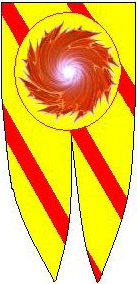 |  | ||||||||||||||||||||||||||||||||||||||||||||||||||||
The dry lembas cakes are very nutritious, stay fresh for months when wrapped in leaves, and are used for sustenance on long journeys. Lembas has a brownish color on the outside and a cream color on the inside. Like other products or artifacts of the Fljyt, lembas is offensive to some creatures- Orcs, goblins and the like of it will refuse to touch or eat the Elven bread. Uruk-hai can eat them can but prefer not to. The word Lembas is Sindarin and derived from the older lenn-mbass which means "journey-bread." As a rough translation of this term in common speech it is also often called Waybread. The Quenya word for lembas is coimas which means "life-bread." The Fljyts consider lembas bread a state secret, and will neither confirm nor deny the recipe found on the galnet is accurate, but they have been taking action (legal and otherwise) against anyone transmitting it or replicating in a galley. They've been especially hostile towards any group selling lembas bread without sourcing it from a Fljytish concern; This has placed them particularly at odds with certain elements of the Freng Mercantile Republic, Beorge-mot; Rogue Beorge, and Pandoran Na'vi. In particular, Fljytish flagged merchant ships and fighters have engaged in combat with Freng D'KORA-Class Marauders and a Fljytish fleet briefly blockaded Pandora (until a Patrol Detachment arrived and "with words exchanged" a brief engagement commenced that forced the Fljytish fleet to flee). | |||||||||||||||||||||||||||||||||||||||||||||||||||||
 |  | ||||||||||||||||||||||||||||||||||||||||||||||||||||
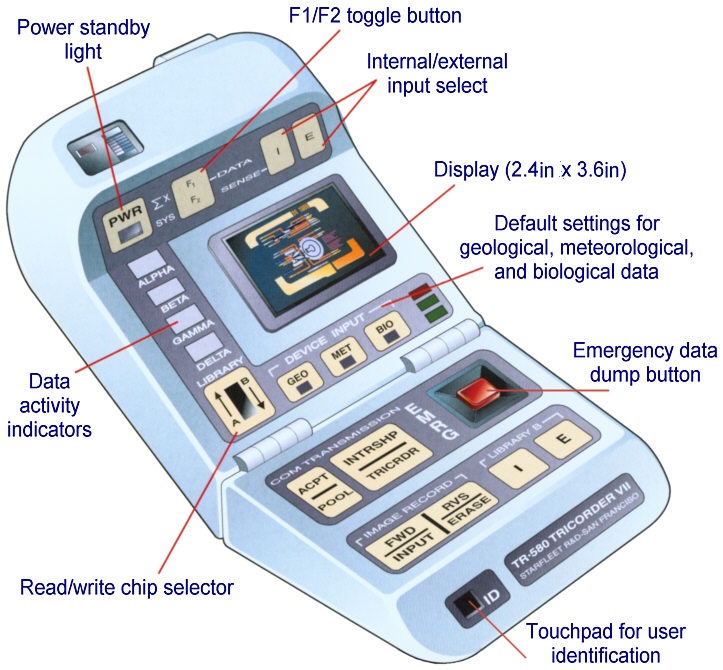 A Tricorder is a handheld multifunctional sensor device that can scan, record and analyze data with database access and communications abilities. The word "tricorder" refers to these three functions. A Tricorder is a handheld multifunctional sensor device that can scan, record and analyze data with database access and communications abilities. The word "tricorder" refers to these three functions.Unlike earlier models, modern tricorders can handle both standard tricorder and medical tricorder functions, eliminating the need for separate devices. It also has a larger touchscreen interface, similar to a PADD, to provide users with more versatility. Lacking a better description, a tricorder is a miniature computer that can connect to a larger computer for greater capability. Operating System: Varies over time. Power Cell: Sarium krellide battery Battery Life: 48 hours constant use Sensor Assemblies: 315 total Forward-Facing Directional Sensors: 189 Omnidirectional Sensors: 180 by 360 degrees. Data Storage Assembly: 32 isolinear wafers Data Storage Capacity: 9.12 kiloquads Communications: The tricorder has an in built MRA 6 and Type-11 transceiver assemblies for the transfer of data to other devices. The tricorder also houses a default RF (Radio Frequency) transmitter, in case the STA is inactive or damaged. The transmission range of the STA is 25,000 mile. Sensor Range: Up to 50 miles, but sensitivity reduces quickly. The most detailed measurements can only be made up to a foot or so away. Display Options: A 2.4 by 3.6 inch hard screen built into the device is the main display system, but a holographic display is also available. Every second used it runs equals a half hour of battery time. | |||||||||||||||||||||||||||||||||||||||||||||||||||||
 | Organ Replacement (VISOR). |  | |||||||||||||||||||||||||||||||||||||||||||||||||||
Amongst other things the VISOR was useful in unique for observing the perspiration, heart rate, and body temperature of someone in line of sight (useful in medical applications and could suggest deception) and as an auxiliary sensor for other devices The device has largely fallen out of favor in part due to the potential to be lost due to accident, but mainly because the temporal connections were on occasion used to tap into the user's brain to "force" them to see things that weren't there- A technique used on occasion as a torture or partial mind control method. They could also be hacked into by an enemy to transmit a live video feed of the user's field of view. When activated, the VISOR emitted a short-range subspace field pulse. While usually harmless, could cause vertigo, headaches, and other side effects. VISORs have largely been replaced by ocular implants, however in some cases this option isn't possible and VISOR's are used instead. | |||||||||||||||||||||||||||||||||||||||||||||||||||||
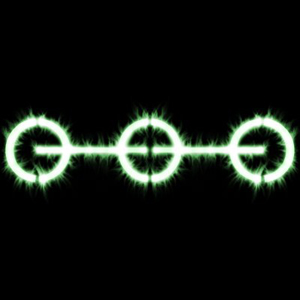 |  | ||||||||||||||||||||||||||||||||||||||||||||||||||||
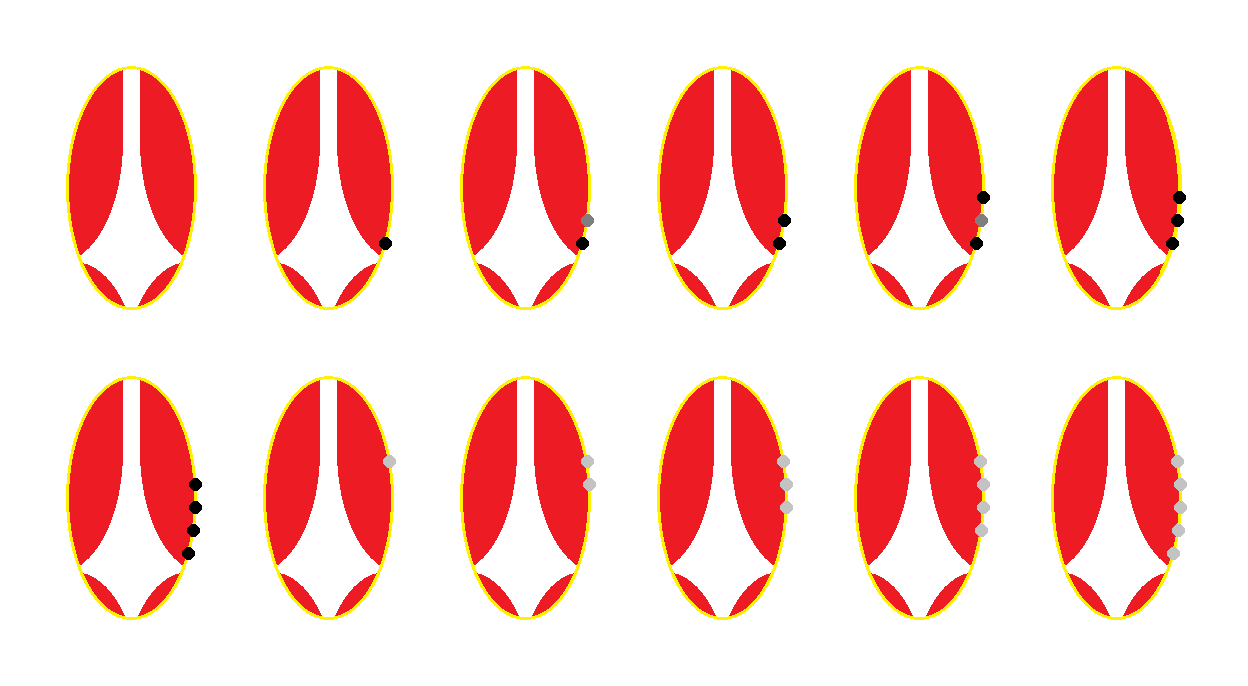 The tricom badge is a combination of personal MRA 6/Type-11 wide band radios, PADD, and tricorder developed by the Landsraadian Spacing Guild and Kobolese from a concept originally used across the Atrian galaxy. Functions on the tricom can be activated by hand gestures or voice commands; A single tap on the badge activates the system. A holographic display appears in front of the user to give all options. A tricom indicated the rank of the individual, with ranks markers for officers. The tricom contains The tricom badge is a combination of personal MRA 6/Type-11 wide band radios, PADD, and tricorder developed by the Landsraadian Spacing Guild and Kobolese from a concept originally used across the Atrian galaxy. Functions on the tricom can be activated by hand gestures or voice commands; A single tap on the badge activates the system. A holographic display appears in front of the user to give all options. A tricom indicated the rank of the individual, with ranks markers for officers. The tricom contains 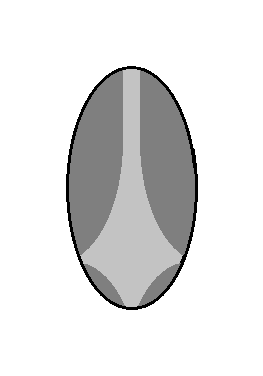 its own computer can work independently from a base station's main computer but will automatically dump to a mainframe as soon as they are in range. its own computer can work independently from a base station's main computer but will automatically dump to a mainframe as soon as they are in range.The rank markers on the badge follow the officer's rank insignia system with the pips upside climbing up the right side as rank increases until reaching the flag ranks, and then climbing down as rank increases. The Enlisted/Cadet version has no rank insignia. The Fleet Admiral and General of the Army and Aerospace Force the border is light grey. For combat zone users the border is black with dark and light grey in place of red and white (respectively) and all rank insignia pips black (making positive rank identity impossible, which was the point). The tricom is also a personal tracker and identifies the proper owner, useful if the body is not in a condition to be identified (until positive identity can be made via DNA). Accessing mainframes via a tricorder is not possible (in case one is stolen). The tricom is not supposed to be worn but often is during emergencies for ease of access. The battery can operate for up to 168 hours (one full week) between standard charges. Normally the device is recharged by inserting it into a charging port, but in emergencies can be recharged by opening the cover on the back and butting an eclip against it; This will give up to 12 hours of charge every 12 hours, but has to be recharged every 12 hours due to the method of recharging. | |||||||||||||||||||||||||||||||||||||||||||||||||||||
 |  | ||||||||||||||||||||||||||||||||||||||||||||||||||||
| The M-14 Turret houses Rail Launchers (normally L-22's or L-35's depending on platform size) in a normal vaguely tank-shaped turret. These rail launchers have auto-loaders, allowing for a GREATLY increased rate of fire. Bonus: Using helicopter, fighter, or another ships targeting system the missile is +3 to strike. Using a combination of 2, it gains a +5 (only 2 can be combined). | 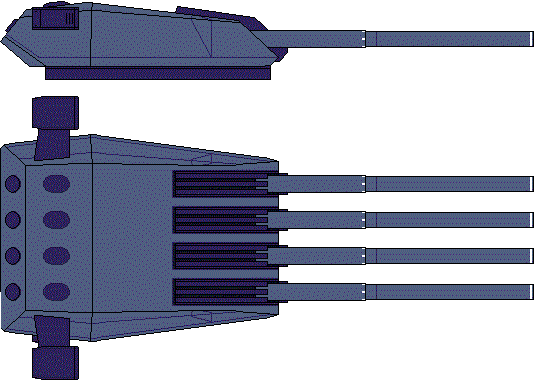 | The M-16 Turret Based on the upper body of the RDF Gladiator Destroid with the REF Raider X Arms, each FOLKER has 14 of these anti-aircraft turrets, one on top of each M-14 turret and 3 along each side of the superstructure and the dorsal side of the hull. Each has 4 types of weapons: A pair of Laser Cannon "arms," "shoulder" missile launchers, quintary head lasers, and a "belly" 20MM, 5-barreled Gatling guns for anti-missile defense. Special bonus: The turret has it's own built-in fixed forward radar, giving it +2 to strike. Loss of this radar negates this advantage, but the guns and missiles can still be trained by information from the Combat Information Center. A) Laser Cannons (6): Based on the laser cannons on the Raidar X, these are the main weapon of the turret. NOTE: These guns fire in tandem, like pom-pom guns. If one barrel is damaged, reduce the damage and rate of fire FOR THAT ARM by a third. Each gun must be targeting the same object as the other (can not be independently targeted). C) Quintary Head Lasers: Toggled directly to the gunners eyes, this weapon shoots where they see. Based directly off of the old VF-1 lasers, there are 5 lasers, arranged in the lesser-known Zulu configuration. D) 20MM Vulcan Gatling Gun: This gun is actually automated. The gunner activates the weapon by flipping a red switch under a cover on the control panel. The gun can NOT tell friend from foe, only whether an object is closing and how fast it is moving. If it meets certain criteria it fires, throwing a wall of lead that either shreds the missile OR causes it to prematurely detonate. E) Missile Launcher Pods: Mounted on each shoulder. 12 each, 24 total. | 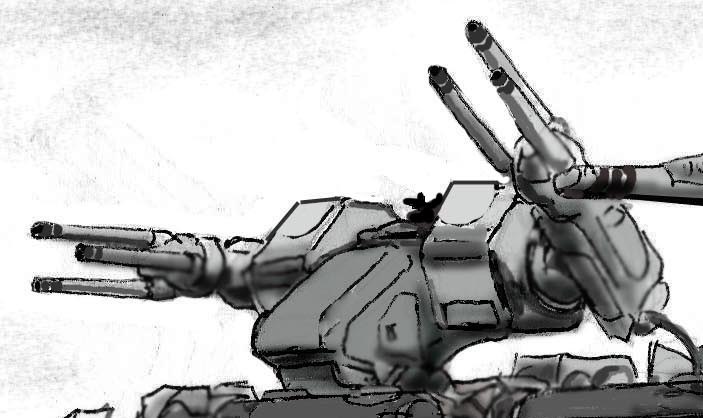 | ||||||||||||||||||||||||||||||||||||||||||||||||||
 |  | ||||||||||||||||||||||||||||||||||||||||||||||||||||
Theoretically a very small drive could be placed on any sized object in the universe, but realistically not so much; The larger the object the more power it needs, and the larger the system. One group tried to build a Cehuh Drive big enough to move a planet, only to discover the drive needed would be as big as the planet itself, and the powerplant almost 100 times as big. The Cemuh Drive is the property of REG (LLC), but the company has offered very generous licensing terms (1% of net profits). Controversies There are rumors that the Cemuh Drive is stolen technology, either from an extinct species massacred by the T'sentraedi around 1986 or '87, or stolen from three Terran American boys from the same time frame; The rumor follows that the boys created the technology from the alien species, used it, and that the ROBOTECH Masters discovered the species and ordered the T'sentraedi to eradicate them entirely. Since the story of Thunder Road follows this claim, and the evidence of the massacre does match up, it's generally accepted that that is what happened, however no definitive proof that the Cemuh Drive is related to that story has been offered to date. The only evidence claimed so far it a filing in civil court "on behalf of concerned parties of D WOODS." It is generally believed "D WOODS" refers to Darren WOODS, who in 1985 was 12 years old. As filed therefore, "D WOODS" would have been over 1,500 years old and have survived all four of the TERRAN ROBOTECH WARS. Additionally, there are rumors that REG (LLC) is a front company for the a Galactic Information Bureau. Many years of "weaponized autism" would eventually reveal that REG (LLC) was a holding company of The Vivian Investment Group, who's client list is still sealed. TVIG has hundreds of other holdings ranging from energy to mineral to land and property development. They even have a clothing line specializing in various period costumes. The GIB would eventually be discovered to be a minor stakeholder in TVIG, but nothing significant enough to raise legitimate suspicions. | |||||||||||||||||||||||||||||||||||||||||||||||||||||
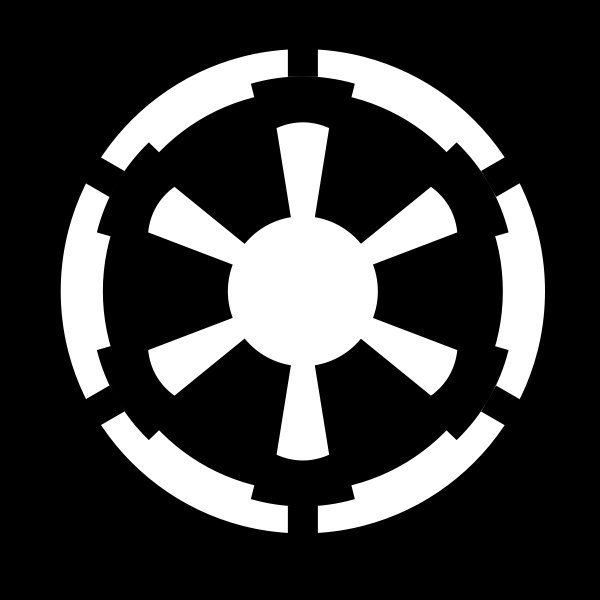 |  | ||||||||||||||||||||||||||||||||||||||||||||||||||||
The advent of the UGC led to proliferation of mecha by the REF, forcing the Stormtroopers to adapt; The REF's Rifleman
In a rush to level the battlefield the Palpatinian Order independently began fielding an ancient type of robot, essentially a speeder bike with legs. This program failed so spectacularly that Osk 7351 was killed when she stood up on an "AT-RT" that she was using to try to survey the battlefield after thousands more had already been destroyed. To date this is the only Palpatinian killed in ground combat by the UGC. After that the program was completely abandoned, with hundreds of units literally abandoned in the field to rust where ever they sat. The open cockpit, slow speed (especially compared to air support), and limited weapons made the robot wholly inadequate in every consideration. This led to the deployment of AT-PT IIa, a light one man robot with enough firepower to support infantry and fend off larger machines, while being able to outrun most of the rest. Unfortunately the Syhith can not build the robots in sufficient numbers due to resource limitations, and have tested a few automated versions in the hopes of overcoming this limitation. It predictably failed due to heuristic limitations and ended up killing several of the Stormtroopers it was supposed to be supporting. History The original AT-PT was an all-terrain light infantry walker developed during the Forgotten Wars. The AT-PT was distinguished by its pair of triple-jointed legs and single-pilot cabin, and it was armed with twin blaster cannons located below the viewport. Its basic form and leg geometry were similar to that of later Rakatan Galaxy robots. As is evident by its designation, the AT-PT is operated by a single trooper. It turns a soldier into an armored, elevated weapons platform, and adds extra firepower to a standard infantry formation. The walkers were capable of reaching speeds up to 38 mph and could climb a 45 degree angle with hydraulic adjusters keeping the unit balanced. The main drive unit provided power and hydraulic pressure for the two legs, and featured cooling vents. The cockpit entry hatch was on the side, while the emergency flare launcher was just above the viewport. The AT-PT was heavily armored, enough so that small-arms fire could not penetrate the craft's armor. The walker was armed with twin blaster cannons and one concussion grenade launcher, which were only effective against infantry. The walker's superior agility made up for its light armor (in comparison to most other cavalry units). The units often traveled in packs for increased firepower. Restoration The restoration of the AT-PT came as the REF deployed literally thousands of Destroids. The vastly out gunned Stormtrooper Corps of the various Syhith and other imperial remnant forces were being massacred. The AT-PT was an acient design, thoroughly outclassed by many of the very infantry they'd been designed to combat, but the idea to build a new generation of the robots took hold quickly. Unfortunately this hasn't worked out quite like the warlords hoped- They were woefully inadequate to the challenge presented by the REF Raditzs Regult Zulu-1, they only generally matched the threat the Rifleman PA presented. An attempt was made to increase the robots capabilities by adding flight pods, shields, and replacing the firepower but these generally have proven cost prohibitive. Another attempt was to build them with automated control systems, but the modified droid brains used to develop this concept was a total failure- In live fire exercises, the droid fired on Stormtroopers involved in the testing, rather than on the designated targets (Trandoshan slaves) leading to the immediate termination of the testing. Their use in now limited to mainly defensive positions where their greatest weakness, their height, is irrelevant- You already know you're going to find opposition forces there, so hiding isn't really much of a consideration. The one environment where they have proven effective is places where infantry can't be deployed, typically airless bodies or toxic environments. Armor The AT-PT II's armor is little better than the REF's PA-02 Rifleman Power Armor. It's good against most infantry weapons, but not against heavier infantry weapons, and wholly inadequate against Destroids. Increasing the armor using a variety of concepts have been attempted, but the results typically either come out inferior (in many cases inferior to the original armor) or too heavy to be effective (slowing speed from 105 to as much as 50% in one case). Survival Equipment AT-PT II survival equipment is reasonable good for a ground pounder robot; The cockpit is sealed meaning it could be used as a self-contained environment, plus there are connectors for air hoses if used. The pilot has a tiny "house" for up to 60 hours (where they remain seated the whole time). Dual rocket mode assisted ejection systems (down to the ground or up through the roof, despite the door on the side) make surviving the destruction of unit almost assured, while built in air purifiers with filters in immediate reach even while strapped in ensure the pilot can receive a continuous supply without concern. Up to 20 gallons of water can be carried aboard, and a water filtration system allows urine to be cleaned to extend this supply up to 2 and half times. What they lack is combat survivability- No shields mean the robots aren't nearly as capable as needed. Weapons The weapons of the AT-PT II are little better than a pair of Gallant H-1100 rifles and an unguided L-02a Rail Launcher. While more than adequate against infantry, the moment a AT-PT encounters anything more than that they typically loose very quickly. Major Variants A few successful non-combat variants have been developed, though the cost makes their utility debatable. Police Variants A version equipped with a variety of non-lethal options was developed specifically for riot control purposes; In same cases the mere presence of the robot has a chilling effect on the crowd. Use is generally reserved for situations where the riot squad is in danger of or has been overwhelmed (such as the Ravie Riots on Ryin). Fire Variants Fire département variants have also been developed, and these have proven not wildly only successful but disproportionately popular with the public; Crowd form around them even in the middle of a crisis that have resulted in restricted ability to respond, forcing firefighters to form cordons around them to allow them to operate. As a result several departments have installed yellow or red flashing lights on the underside and loud alarms to warn the public to stand back, and many départements run PSAs warning the public to stand at least 600 feet away claiming this is the minimum safe distance (even though the actual distance is only about 200 feet). Structure Fire Variant By far the more successful version, the structure fire variant has water cannons in place of the grenade launcher and bridging equipment to assist firefighters gaining access to higher levels of the buildings, in addition to assisting survivors from escaping those levels. Wildland Fire Variant Wildland variants with various types of vegetation removal equipment, fire retardants, and even a few with water cannons have been tested. They've been stymied by rough terrain (that didn't encumber their biological counterparts as much), but they aren't wholly ineffective either, and the most successful versions are used as vegetation clearing and plows to allow heavier equipment to get through. Industrial Variants A wider variety of industrial variants have been seen. Most are load lifter or cargo variants, usually associated with a specific owner. Construction variants have also been seen, though most are sub-variants of load lifter variants, and many are simply load lifters with a specific construction-related attachment selected during a given constriction process (booms for lifting, concrete mixers for pouring concrete, etc.). Automated Industrial Variants Various attempts to automate the industrial variants have been seen, but the heuristic systems installed have varied significantly, leaving some unsatisfactory; Oddly the higher level drones tend to have more issues. It's thought this is related to the issues with automating combat versions, and this has been seen less with units piloted by various drones without conversion. Zoological Variants A variant used on large-species animals (such as dinosaurs, Rancors, Kwi, etc.) are used on large scale preserves for a variety of purposes. Much like the police variant, these are usually equipped with non-lethal weapons (most often simple cattleprods and similar types of weapons to do nothing more than encourage the animal to move away, and various stun weapons to subdue an animal without injury) and construction equipment. Critical Analysis The REF isn't terribly worried about the AT-PT II. They are woefully underarmed and underarmored for contesting against Destroids, too slow to escape from air support (and all too often from Destroids as well), and too expensive to produce in the numbers needed to overcome those limitations. Attempts to equip them with flight capabilities or shields were deemed a de facto failure, and while this could have overcome their other technical limitations the simple fact that it wasn't done is the end of the effective discussion. A few of the local forces are deploying them in limited numbers to support infantry in defensive positions, and while this is not unhelpful their main effect will be to stall an assault long enough for the ground forces to effectively respond (either by withdrawal or calling up reinforcements), or for air support to arrive. Attempts to redesign them as automatons failed comprehensively- The test units began attacking allies instead of enemies, at the cost of an entire platoon (and the death of dozens and escape of several thousand Trandoshan slaves). It is plausible to upgrade the AT-PT to a version adequate to the needs of the various forces fielding them for offensive purposes, but that's unlikely to happen anytime soon. The various civilian variants are more successful, but this is more a reflection of reutilizing obsolete militry equipment than any success in and of themselves. GM Info Using the Rifleman Power Armor without flight and with a pair of Gallant H-1100 rifles and an unguided L-02a Rail Launcher (no bonuses) will suffice. If I can, I will build a AT-PT III, but that's a long way off. | |||||||||||||||||||||||||||||||||||||||||||||||||||||
 | 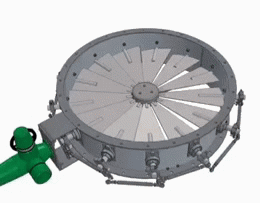 | ||||||||||||||||||||||||||||||||||||||||||||||||||||
Dual-phase aeration is a concept conceived by every major spacefaring faction in one form or another. The idea is fairly simple, covers close air intakes once air density drops below a certain level. Until then the craft can draw in raw air from the outside,
The various powers have generally had pretty good success with the concept, but aberrations occurred occasionally. The RDF had a vested interest in developing the technology for their aerospace craft, since war is pretty much the norm (the RDF was itself born in a war). To extend the flight time of early RDF fighters, a vane system was developed to allow the air intake to be fully closed. The test flight was conducted 5 years earlier in a joint UK/US project using an F-20 Tigershark fighter as the testbed. The first test was conducted in a wind tunnel that had been modified to seal completely; As the jet used the available oxygen the vanes closed, forcing the fighter to rely on simulated bottled air (raw air piped in through a valved system). That test went perfectly in 9 out of 10 tests despite mistakes made during the testing that threatened flameout (the valve wasn't opened in time in 2 tests). In flight testing the plane was sent to the upper stratosphere where the air was too thin to be of use but still inside the atmosphere (since the pane didn't have heat shielding). The system worked perfectly, and the plane was able to make a controlled decent back to the airfield. This advancement had to be shelved for years due to the lack of effective spacecraft to fit the technology to, though the basic concept was already in use in large civilian aircraft such as airliners. The RDF took advantage of the technology in developing the VF-1 Veritechs, specifically mounting an identical concept at the lead edge/hip of the plane's legs. This allowed them to operate in both air and space equally, though the fighters aboard MACROSS and ARMOR-Class space carriers were forced to carry air during their missions. Later on the same principle was applied to developing a dual-phase jet/scramjet; In early flight stages when the air isn't moving fast enough to maintain combustion the vanes will partially open, forcing air into the engines. After about 15 to 20 minutes, the vanes fully open and stop rotating to allow air to pass by freely as momentum alone creates sufficient air flow and pressure to keep the engines running. The RDF was by no measure the first to conceive of this idea; It wasn't even entirely new on Terra at the start of the Global Civil War. Neither were they the first to conceive of this variation on the idea, it was already common enough amongst other empires to be considered universal, with some of the older or more advanced empires seeing it as antiquated or even obsolete. They remain in use in REF and RDF craft due to the simplicity and reliability of the construct; Barring a major mechanical failure, the vanes are self-regulating based on actual air flow, and even a major malfunction does not usually end in flameout outside of atmosphere but rather air flow restriction inside of one. | |||||||||||||||||||||||||||||||||||||||||||||||||||||
 |  | ||||||||||||||||||||||||||||||||||||||||||||||||||||
| A Phasing Cloak is an expansion on the more traditional cloaking device designed to phase sequence the structure of matter and energy to such a rate that it was possible to allow any vessel utilizing the device to pass through normal matter in the phased state. Phase cloaking was developed by one of the Atran empires, but directly violated a treaty that banned cloaking technology by the developers. The crew of the testbed ship mutinied forcing the captain and a small group of officers to flee. The UGC has no such treaty; They also have no such technology at this time, since the field generators blew out plasma relays on the testbed, causing the ship to decloak in the middle of an asteroid, killing the crew. Sadly the UGC already knew this, since the exact same thing had happen on Terra in 1943- Nearly two thousand years after the Federate experiment. At this time there UGC is not officially conducting any such development, as the technology is considered too dangerous. | 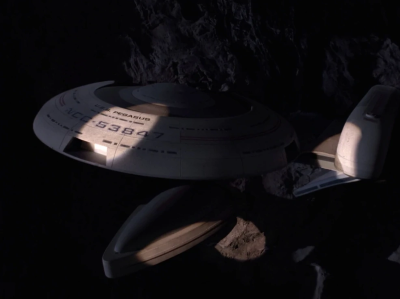 | ||||||||||||||||||||||||||||||||||||||||||||||||||||
 |  | ||||||||||||||||||||||||||||||||||||||||||||||||||||
The AJ⁶ Cybernetic System (also known as LoboTech) is a cybernetic device attached onto the backside of a user's head to increase the user's productivity. However there are extensive reports of the devices erasing the owner's personality and occasionally cause their behavior to become erratic.
The AJ⁶ Cybertentic System is a cybernetic implant produced by BioTech Industries prior to the onset of the Forgotten War. Description The Borg Construct AJ⁶ is the most sophisticated cyborg implants that is available on the commercial market, manufactured by BioTech Industries as an advanced cybernetic interface that allows cyborgs to interface with large computer networks. The crescent-shaped device is attached to the wearer's head and implanted against the skull. Cyborg Nanothread Interfaces connected the unit directly to the cyborg's mind using nanothreads that are sent into the brain to create a bridge with the implant's biocomputer. Using the latest BioTech neurothread technology, the AJ⁶ enables a clear connection between the cyborg's brain and the information contained within the interface. The AJ⁶ incorporates a primary processor and several Data Retrieval Processors, and is capable of storing millions of data screen units of information. Several ports are located on the outside of the unit, including Computer Interface Ports, Droid Interface Ports, and several Knowledge Cartridge Ports. The cyborg is able to program with greater ease using the standard data library built into the implant. Knowledge cartridges can be placed in the latter ports that allow the cyborg to assimilate the knowledge on the cartridges, allowing them to become an expert whiel the chip is in place. Audio Enhancers and a communications transceiver are also installed. The unit allowes the user to connect to any linked computer system using mental commands. Data can be analyzed at the same time, and the computer operation speeds were increased twentyfold over that of an organic computer operator (efficacy varies by computer systems). The unit cost eighty thousand credits while the surgery to fit the device cost an additional seventy thousand credits, but a mistake during the procedure can result in brain damage or even death. Despite the advantages of the implant, the unit has come under criticism as it limits the user's personality and suppress their emotions, nearly turning them into walking machines. Legal Status (UGC Era) The UGC has put a halt to the use of this device until the developers can demonstrate their device's safety. They are allowed to maintain units already on the market, but not sell new units. Of particular note, the company defends their products "unless tampered with," and has argued that getting shot at is tampering- An argument that the UGC rejected, "because you could get shot in the course of a mugging for your implants." That hasn't stopped the company from selling units out the back door, nor them being installed- After all, they are allowed to continue maintaining units already on the market, and officially the company has no idea how many are really out there but it's well into the billions. A crack down by the GIS ins inevitable, but not quite yet. Comparable Technologies There is no direct analogy to the BioTech Industries model; The nanotech used to connect the unit to the user's mind is common enough, and several thousand people connect their cell phones, smart glasses, and tables to their implants, but nothing is quite as sophisticated as this device- A permanently connected wifi equipped system to connect to a mainframe at all times. As a result, BioTech is allowed to continue to field the units already on the market, and continue with R&D on willing test subjects, but the GIS is watching them 24/7- They're just waiting for the word to strike at the moment. | |||||||||||||||||||||||||||||||||||||||||||||||||||||
 |  | ||||||||||||||||||||||||||||||||||||||||||||||||||||
| Clogs are a type of footwear that has a thick, rigid sole typically made of wood. They are routinely developed by every sentient species as protective footwear in agriculture, factories, and mines. They are sometimes negatively associated with cheap and folkloric footwear of farmers and the working class, though some types are considered fashionable. Clogs produce a distinctive sound against hard deck (though the exact sound varies by material and society). In some cultures a distinctive dance evolves around this sound, though most coat the bottom of the soles with a padded material to prevent the sound. In order to qualify as a clog the item must be closed toe, top, top, and sole and be of a hard material to protect the toes and feet; Many styles as also closed heel, though this is not required. |  | ||||||||||||||||||||||||||||||||||||||||||||||||||||
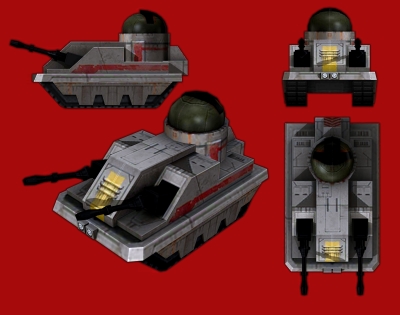 |  | ||||||||||||||||||||||||||||||||||||||||||||||||||||
The low-tech nature is demonstrated by its tracked chassis in place of repulsorlifts. The tank was armed with twin forward-facing blaster cannons, while the pilot was defended by a dome-shaped windshield and a thick coat of armor. When fired at maximum, the cannons tended to overload and short out the vehicle. While the MLC-3 was designed to operate with a pilot they can be rigged to various drones or even jury rigged control systems. There is a story about a group of about a dozen being used this way to cover the retreat of a rebel group around a half million years ago. The single greatest strength of the MLC is the simplicity; The vehicles can be built of scrap metal if a sufficiently large enough inventory and tools are available in addition to non-structural components (motors, powerplant, cannons, etc.). Powerplant Various powerplants are used on the MLC's, generally lower-end reactors (under 15kw). Motive Systems Waht set teh MLC apart from other comperable platforms (such as the UGC's M-18 Armadillo Anti-Aircraft Tank is the catapiller track system. Anything else either uses legs or gravpods, the MLC is the only ssytem that simple doesn't. Weapons Systems While any weapons ssytems can be used, twin medium blaster cannons have consistently proven most effective acorss many testing programs- Even the Landsraad have tried variations can report the same effect. Crew Surviability The MLC has proven difficult to build in a way effective for crew susrvivability due to their size, weight, and powerplants. Building them in a way that does improve crew survivability tends to make them too large and heavy for parciacl use by the smaller factions that use them most, and larger factions convert them to drone/droid control at the outset. Current Status The UGC hates these things entirely; The fact that they are tracked only limits mobility, and the weapons mounting system limits the coverage. Topside turreted versions suffer from either top heaviness or under gunning, making them unuseful for anything other than rolling machinegun nests. The Mandalorian Collective has used them for advanced fortress penetration but not regularly. Adding a drone or droid brain makes them adequate for perimeter security, but mostly as watch and wards, and as often as not are unarmed. Attempts to convert them to civilian use have proven just as unsatisfactory; Under most cargo hauler conditions they are too slow to be effective, and over rough terrain have proven no more effective than walkers of roughly equal capacity. | |||||||||||||||||||||||||||||||||||||||||||||||||||||
 |  | ||||||||||||||||||||||||||||||||||||||||||||||||||||
 Mutatos are Terran potatoes that were exposed to various mutagenics. Normally they're perfectly safe, but about 1 in 20 to 25 is semi-sentient and aggressive- They'll attempt to attack any animal that gets too close, and unfortunately for farmers these tend to be whole feilds rather than invidicual toobers. Mutatos are Terran potatoes that were exposed to various mutagenics. Normally they're perfectly safe, but about 1 in 20 to 25 is semi-sentient and aggressive- They'll attempt to attack any animal that gets too close, and unfortunately for farmers these tend to be whole feilds rather than invidicual toobers.They are curiously colored; They glow green. Aero-Space bases occasionally use them as environmentally friends tarmac lights. Cadets at TraCen Patton are trying to find a way to understand why some mutatoes are active and others are not, allowing the type of field to be planted to the farmers preference (active mutatoes have proven helpful to the base, and could prove a useful defense in the future) and to unlock other potential characteristics (including red and yellow variants). The taste leaves much to be desired- Actually they leave everything to be desired. They're disgusting, and only intentionally grown for animal feed. However, they are obscenely hardy, able to grow in almost any conceivable enviroment except paved land (and even then if the paving is broken up). They have grown in then near vacuum of Luna and other 'airless' bodies, though not as well as in atmospheres. Although native to Terra, the UEA and her successors repudiated any claims to the mutatoe's intellectual propriety- It evolved in the environment it found itself in, without intentional interference, and are more often considered a destructive plant than an constructive one. | |||||||||||||||||||||||||||||||||||||||||||||||||||||
 |  | ||||||||||||||||||||||||||||||||||||||||||||||||||||
| Through the Terran North American Great Lakes a large fleet of 40 feet long, 13 foot beam fishing boats powered by a Cummins diesel referred to as Mackinaws were hastily commandeered by the RDF during the first few months of the reconstruction era. During the Fourth Battle Of Detroit a force of some 500 RDF Army landed at Hart Plaza. In preparation for the assault .50 caliber machineguns were mounted on improvised ringmounts atop the hulls and the fleet designated the Mackinaw-Class Gunboats. The Mackinaw-Class Gunboats weren't successful beyond the urgent situation of the early reconstruction, though versions still serve in extremely numbers in the REF, primarily for heavy lift/slow speed operations, notably with the BREETIA TULL-Class UDF's for deploying marker buoys for follow up by ELEPHANT-Class landships to deploy anchor buoys and anti-torpedo nets during water landing operations. The same basic configuration is also used widely as the fishing boats they were originally intended as. | 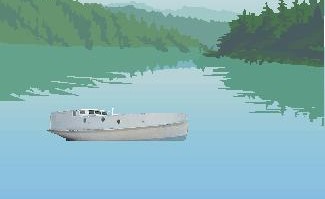 | ||||||||||||||||||||||||||||||||||||||||||||||||||||
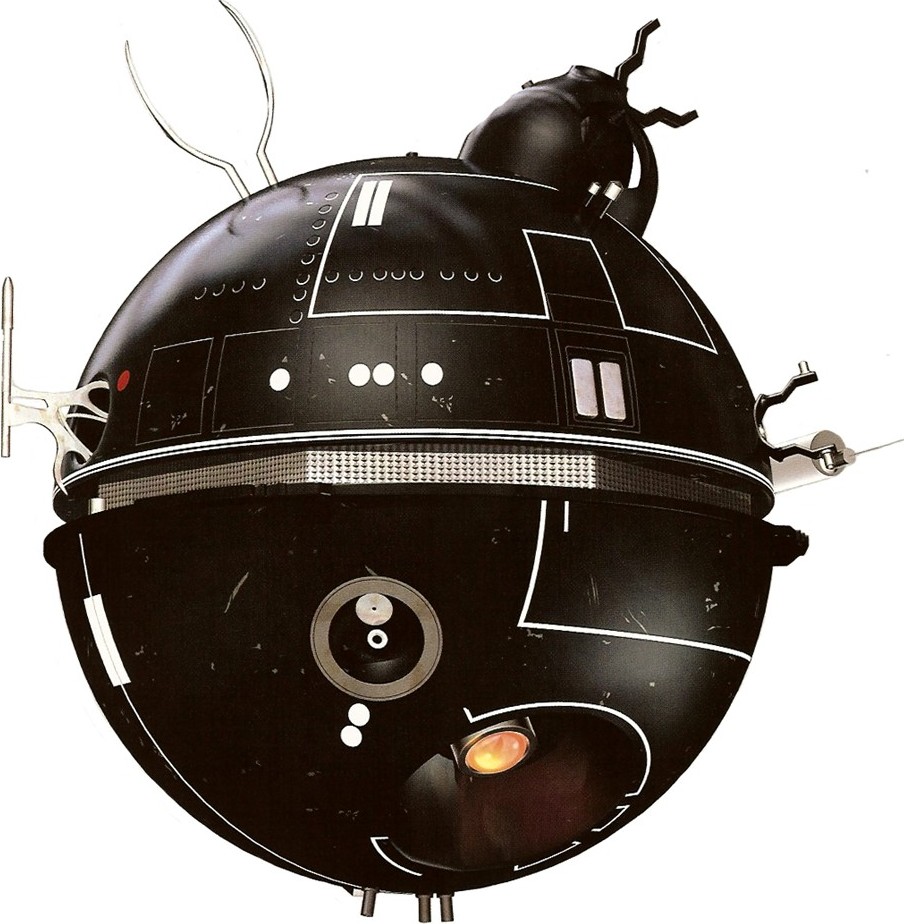
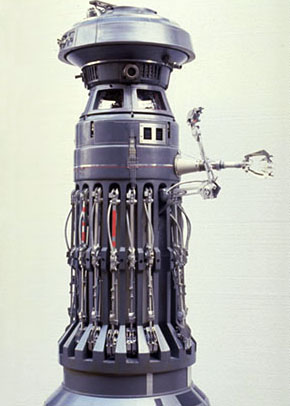
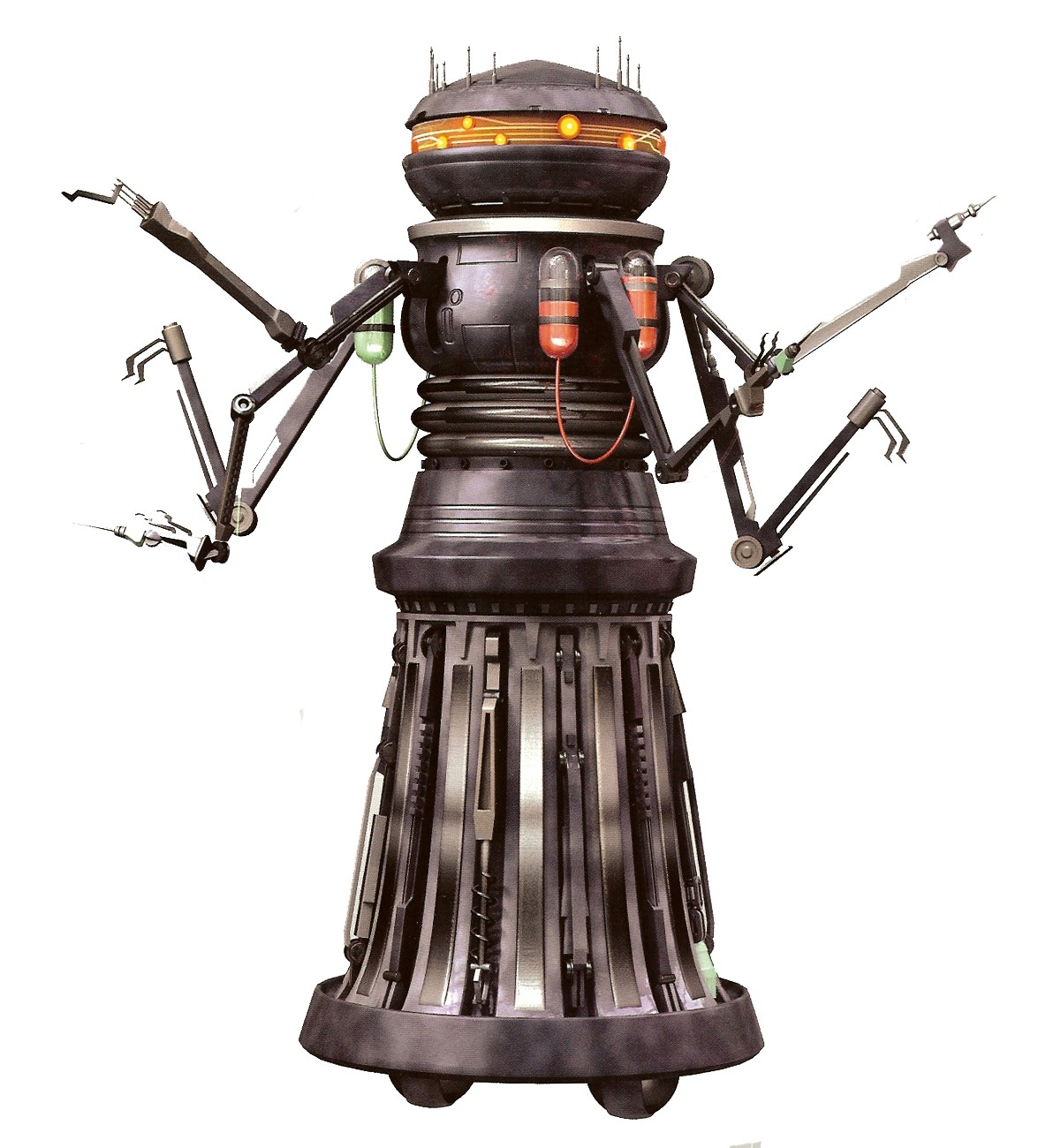
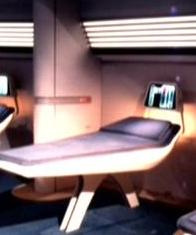
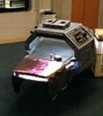
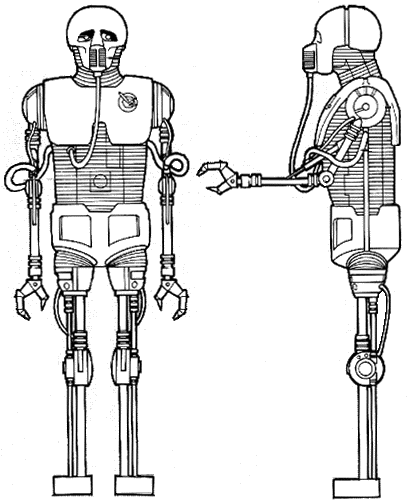
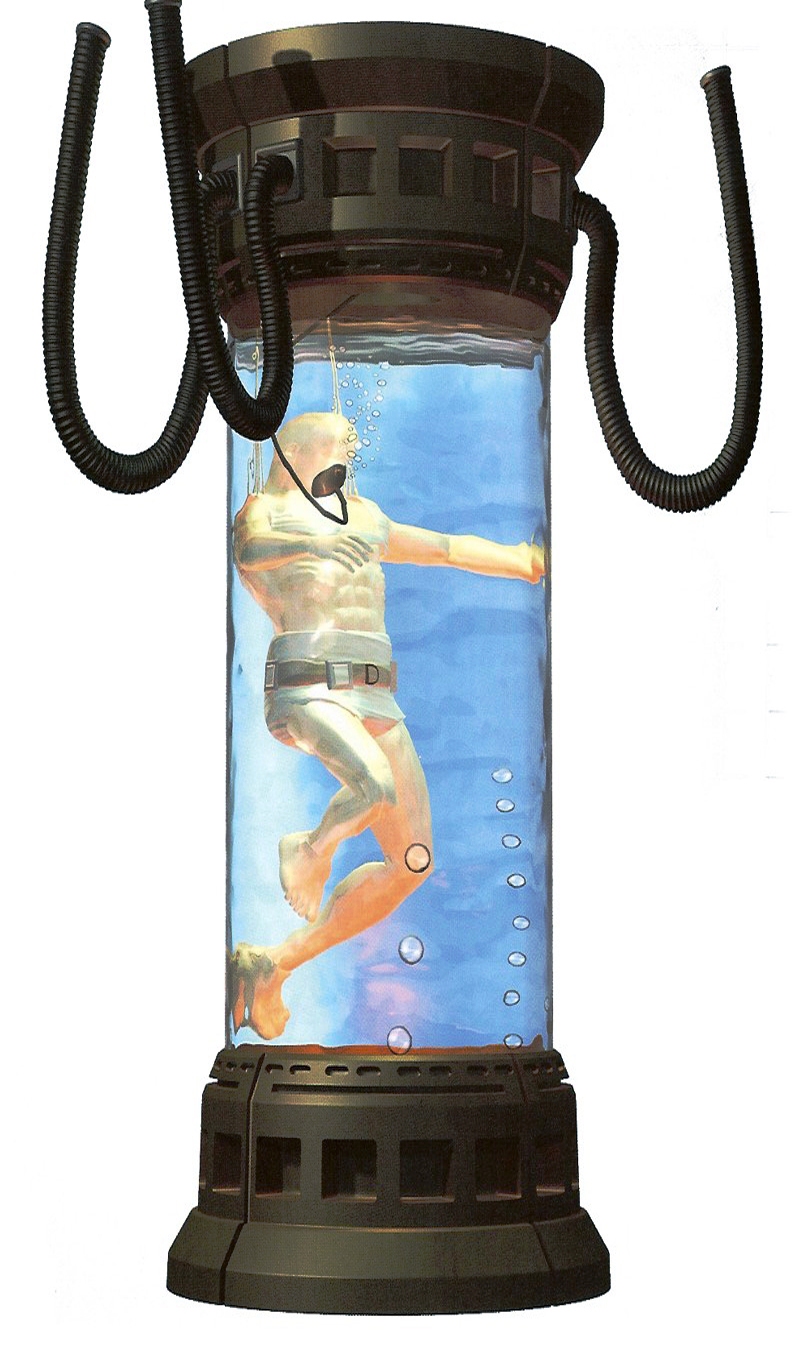
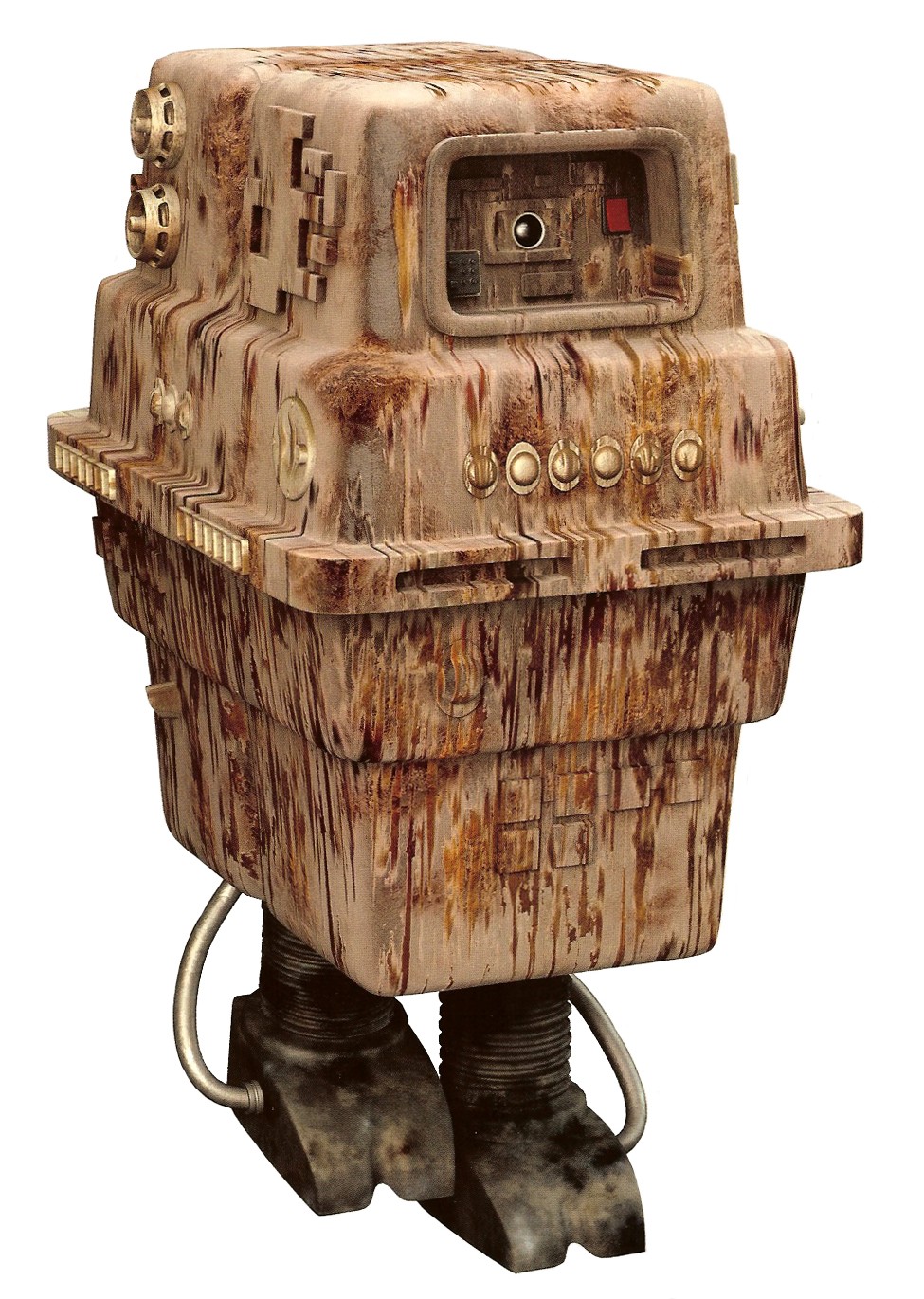
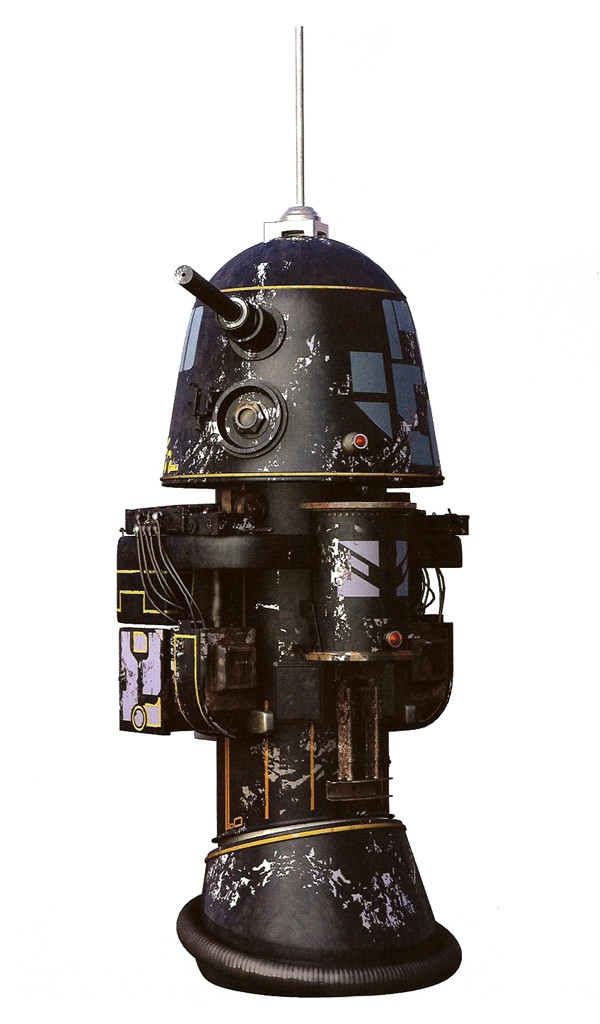







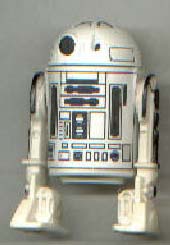
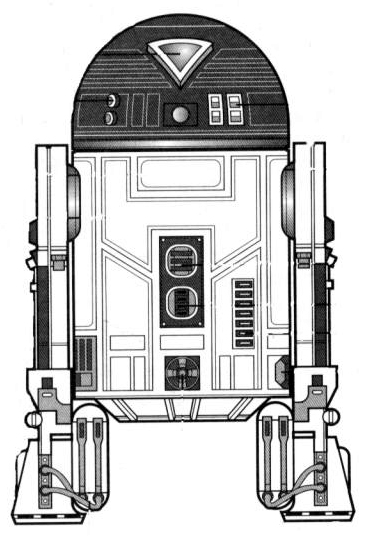
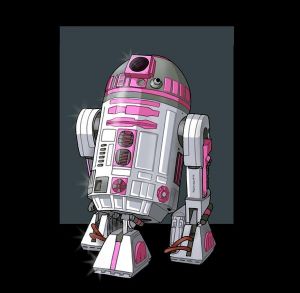
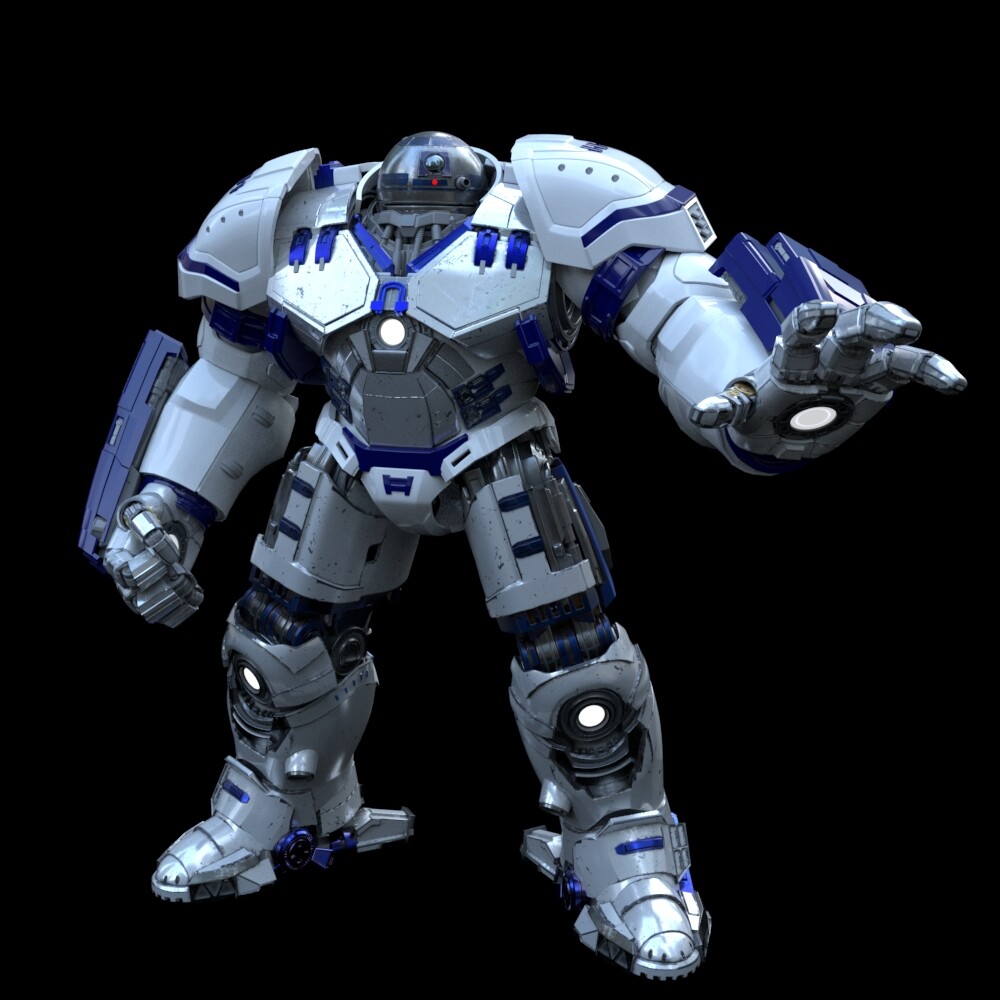
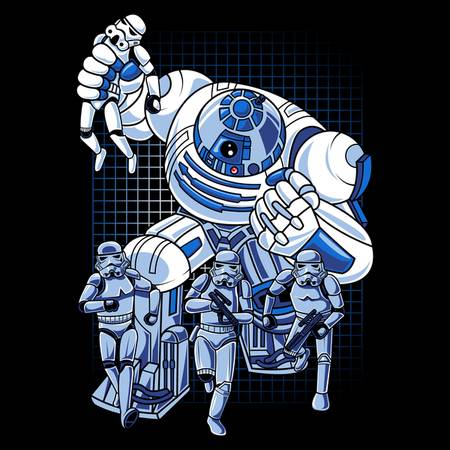

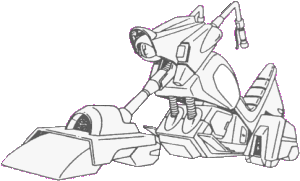
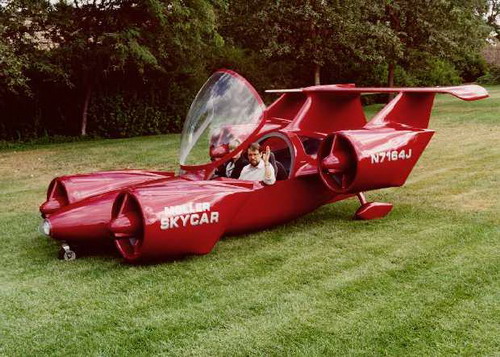
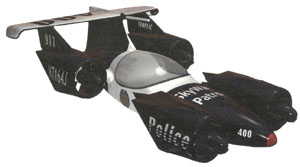
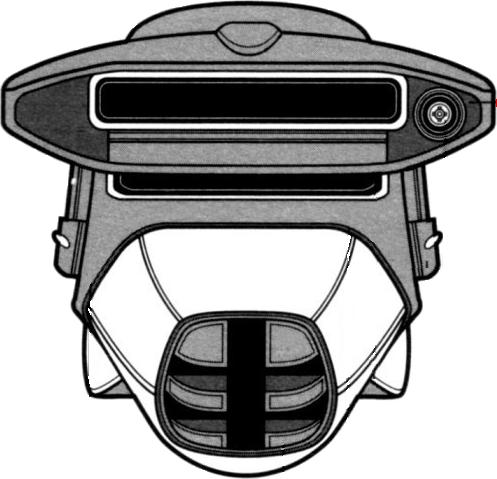
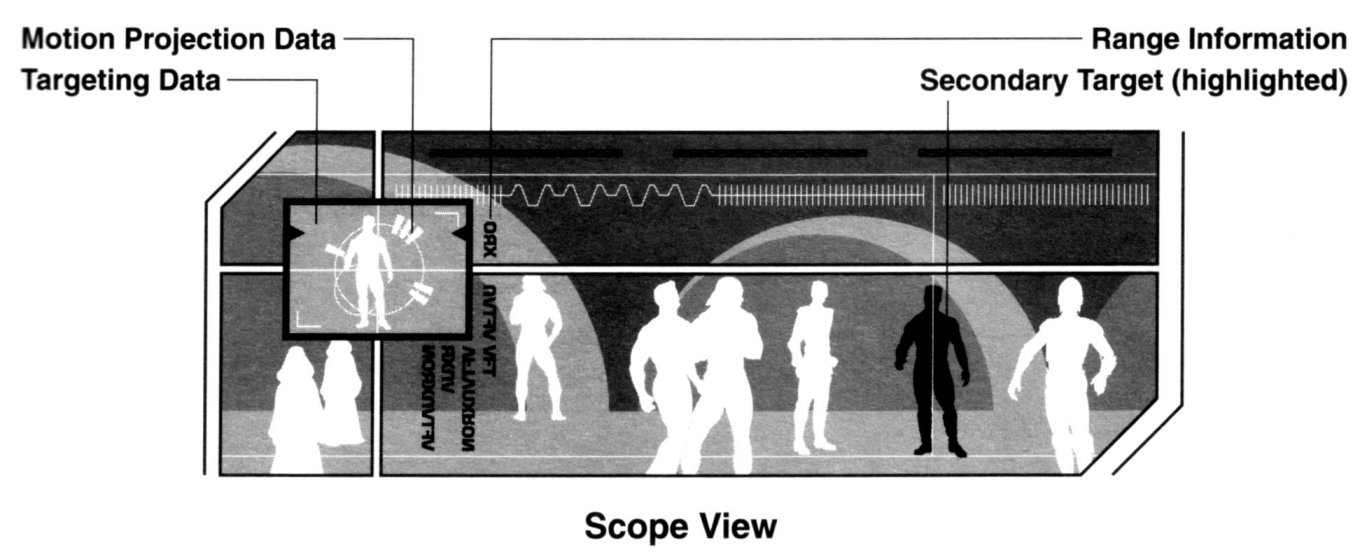
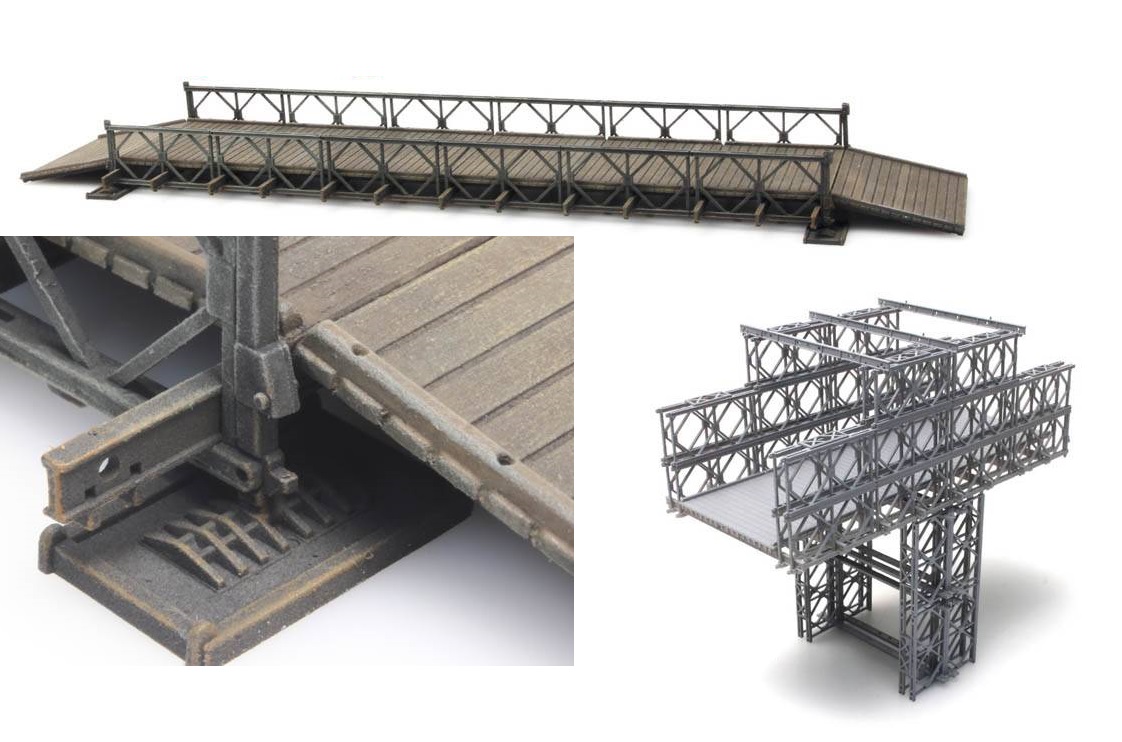
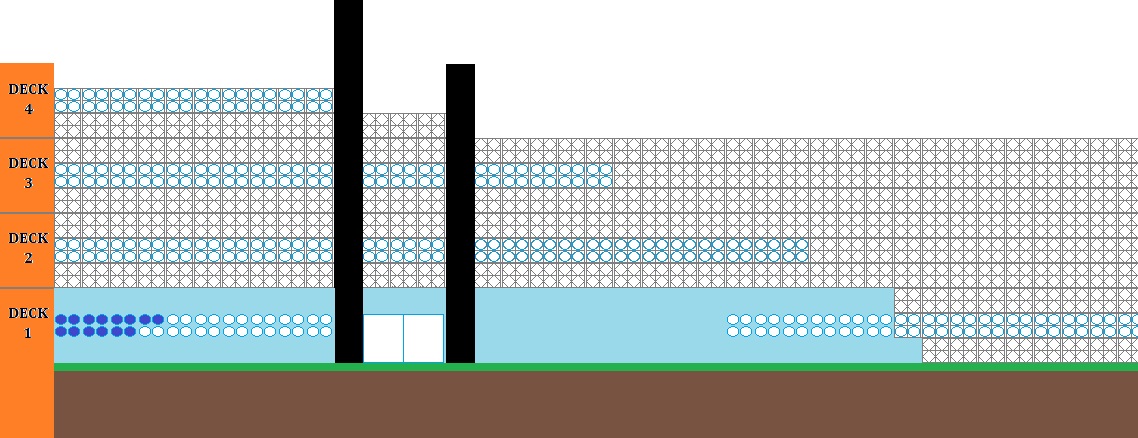
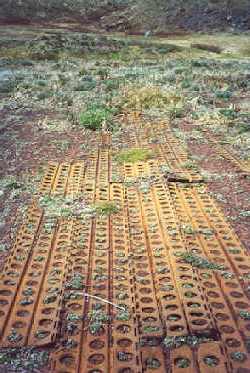
 .
.